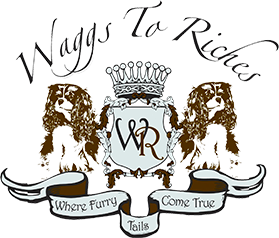Archive for the ‘Petcare’ Category
-
Hiking With Your Dog: A Comprehensive Guide
Hiking with your dog can be an incredibly rewarding experience for both you and your furry companion. Not only does it offer an opportunity for you to bond, but it also provides excellent exercise and mental stimulation for your dog. However, hiking with a dog requires some preparation and knowledge to ensure a safe and enjoyable adventure. This guide covers everything you need to know about hiking with your dog, from preparation to trail etiquette.
Preparing for the Hike
1. Assess Your Dog’s Fitness Level Before hitting the trails, evaluate your dog’s physical condition. Different breeds have varying levels of endurance and stamina. Ensure your dog is healthy, up-to-date on vaccinations, and has no underlying health issues that might make hiking dangerous.
2. Start with Easy Trails If your dog is new to hiking, start with shorter, easier trails. Gradually increase the difficulty and length of the hikes as your dog builds endurance. This also helps prevent overexertion and allows your dog to get accustomed to the new environment.
3. Gear Up Having the right gear can make your hike more enjoyable and safer:
- Leash and Harness: Even if your dog is well-trained, a leash and harness are essential. Many trails require dogs to be on a leash.
- Collapsible Water Bowl: Hydration is crucial. A collapsible water bowl makes it easy to provide your dog with water on the go.
- Dog Backpack: If your dog is fit and healthy, consider a dog backpack for them to carry their own water, food, and waste bags.
- Booties: Protect your dog’s paws from rough terrain and extreme temperatures with dog booties.
- First Aid Kit: Carry a dog-specific first aid kit for emergencies.
On the Trail
1. Hydration and Nutrition Just like humans, dogs need to stay hydrated. Bring plenty of water and offer it to your dog regularly. Avoid letting your dog drink from streams or puddles, as they can contain harmful bacteria. Pack high-protein snacks to keep your dog’s energy levels up during the hike.
2. Watch for Signs of Fatigue Pay attention to your dog’s behavior. Signs of fatigue include excessive panting, lagging behind, or laying down frequently. Take regular breaks to let your dog rest and cool down.
3. Trail Etiquette
- Leash Your Dog: Always keep your dog on a leash unless the trail specifically allows off-leash hiking. This prevents your dog from getting lost, encountering wildlife, or disturbing other hikers.
- Yield the Trail: Step aside and yield the trail to other hikers, especially those without dogs. Not everyone is comfortable around dogs, and it’s polite to give them space.
- Clean Up After Your Dog: Carry waste bags and pick up after your dog. Leaving dog waste on the trail is not only unsightly but can also harm the environment.
Safety Tips
1. Check the Weather Avoid hiking in extreme heat or cold. Hot pavement or sand can burn your dog’s paws, and cold temperatures can cause hypothermia. If the weather is not ideal, postpone your hike to a safer day.
2. Be Aware of Wildlife Wildlife encounters can be dangerous. Keep your dog on a leash and under control to prevent them from chasing or disturbing wildlife. If you encounter a wild animal, calmly and slowly back away.
3. Know the Signs of Overheating Dogs can overheat quickly, especially in hot weather. Signs of overheating include excessive panting, drooling, lethargy, and red gums. If your dog shows these signs, find shade, offer water, and wet their fur to help cool them down.
After the Hike
1. Check for Ticks and Burrs After the hike, thoroughly check your dog for ticks, burrs, or other foreign objects. Pay special attention to areas like the ears, armpits, and between the toes. Remove any ticks promptly and consult your veterinarian if you find any attached.
2. Clean Their Paws Clean your dog’s paws to remove dirt, mud, or any chemicals they might have walked through. This also gives you a chance to check for cuts or abrasions.
3. Monitor Their Health Keep an eye on your dog’s behavior after the hike. If they seem unusually tired, are limping, or show any signs of distress, contact your veterinarian.
Benefits of Hiking with Your Dog
1. Physical Exercise Hiking provides an excellent workout for your dog, helping to maintain a healthy weight and build muscle. Regular physical activity is essential for a dog’s overall health and well-being.
2. Mental Stimulation The sights, sounds, and smells of nature offer a rich sensory experience for your dog, providing mental stimulation that can help reduce boredom and anxiety.
3. Strengthening the Bond Spending time together in nature strengthens the bond between you and your dog. Shared experiences and overcoming challenges on the trail can deepen your connection.
Choosing the Right Trail
1. Research Dog-Friendly Trails Not all trails are dog-friendly. Research trails in your area to find those that allow dogs. Websites, apps, and local hiking groups can be excellent resources for finding dog-friendly hikes.
2. Consider the Terrain Choose a trail that matches your dog’s fitness level and experience. Avoid trails with steep climbs, loose rocks, or other hazards that might be challenging for your dog.
3. Check the Regulations Some trails have specific regulations for dogs, such as leash laws or restricted areas. Make sure you understand and follow these rules to avoid fines and ensure a positive experience for everyone on the trail.
Final Thoughts
Hiking with your dog can be a fantastic way to enjoy the great outdoors and stay active together. With proper preparation, attention to safety, and consideration for others on the trail, you and your furry friend can have many enjoyable adventures. Remember, the key to a successful hike is ensuring that both you and your dog are comfortable, safe, and having fun. Happy hiking!
-
Labrador Retriever Breed Guide
Labrador Retrievers, often simply known as Labs, are one of the most popular dog breeds in the world. Renowned for their friendly nature, intelligence, and versatility, Labradors make excellent companions for families, active individuals, and working professionals. In this guide, we’ll explore the history, characteristics, health, and care needs of Labrador Retrievers.
History of the Labrador Retriever
The origins of the Labrador Retriever can be traced back to the early 19th century in Newfoundland, Canada. Originally known as St. John’s dogs or Lesser Newfoundland dogs, these early Labradors were used by fishermen to help retrieve nets and catch fish that escaped from fishing lines. Their excellent swimming ability and hardworking nature made them indispensable to their owners.
In the early 1800s, the breed was brought to England, where it was refined and developed into the Labrador Retriever we know today. The breed’s name is derived from the Labrador region, which is part of Newfoundland and Labrador in Canada. English aristocrats recognized the potential of these dogs for hunting and retrieving game, and through selective breeding, they enhanced the breed’s natural retrieving instincts, temperament, and appearance.
Physical Characteristics
Labrador Retrievers are medium to large-sized dogs, with males typically standing between 22.5 to 24.5 inches at the shoulder and weighing between 65 to 80 pounds. Females are slightly smaller, standing 21.5 to 23.5 inches and weighing 55 to 70 pounds. They have a strong, muscular build that reflects their working heritage.
Labs come in three standard colors: black, yellow, and chocolate. Their dense, water-resistant double coat is a hallmark of the breed, providing insulation and protection in various weather conditions. Labs are known for their expressive eyes, broad head, and otter-like tail, which helps them steer while swimming.
Temperament and Personality
Labrador Retrievers are famous for their friendly and outgoing nature. They are typically good-natured, eager to please, and highly social dogs. Their intelligence and trainability make them excellent service dogs, therapy dogs, and working dogs in various fields, including search and rescue, detection, and assistance for people with disabilities.
Labs are also known for their playful and energetic disposition. They have a strong desire to be part of family activities and thrive on human interaction. This breed is generally good with children and other pets, making them an ideal choice for families. However, their high energy levels and exuberance can sometimes be overwhelming for very young children or elderly individuals.
Health and Lifespan
Labrador Retrievers have a life expectancy of 10 to 12 years, although some can live longer with proper care. Like all breeds, they are prone to certain health conditions, which prospective owners should be aware of:
- Hip and Elbow Dysplasia: These are common hereditary conditions where the hip or elbow joint does not fit properly into the socket, leading to arthritis and pain.
- Progressive Retinal Atrophy (PRA): This degenerative eye disorder can eventually cause blindness. Regular eye check-ups are crucial for early detection.
- Exercise-Induced Collapse (EIC): Some Labs are prone to collapsing during intense exercise. This condition is genetic, and testing is available.
- Obesity: Labs love to eat and can easily become overweight if their diet and exercise are not carefully managed. Obesity can lead to other health problems, such as diabetes and joint issues.
- Ear Infections: Due to their floppy ears, Labs are prone to ear infections. Regular cleaning and inspection are essential to prevent infections.
Care and Maintenance
Caring for a Labrador Retriever requires commitment to their physical, mental, and emotional well-being. Here are some key aspects of their care:
Exercise
Labs are high-energy dogs that require regular exercise to stay healthy and happy. They enjoy activities such as walking, running, swimming, and playing fetch. Aim for at least an hour of vigorous exercise daily to keep your Lab fit and prevent boredom-related behaviors, such as chewing and digging.
Training
Labradors are highly trainable due to their intelligence and eagerness to please. Early socialization and obedience training are essential to ensure they develop good manners and are well-adjusted. Positive reinforcement techniques, such as treats and praise, work best with this breed.
Nutrition
Feeding a balanced diet is crucial for maintaining your Lab’s health. Choose high-quality commercial dog food that meets their nutritional needs, and be mindful of portion sizes to prevent obesity. Treats should be given in moderation and factored into their daily calorie intake.
Grooming
Labs have a short, dense coat that sheds year-round, with heavier shedding during spring and fall. Regular brushing, at least once a week, helps manage shedding and keeps their coat healthy. Labs also require regular dental care, nail trimming, and ear cleaning to prevent infections and other health issues.
Health Check-ups
Regular veterinary check-ups are essential to monitor your Lab’s health and catch any potential problems early. Vaccinations, parasite prevention, and routine screenings for common genetic conditions are crucial components of their healthcare regimen.
Living with a Labrador Retriever
Labrador Retrievers adapt well to various living situations, as long as their exercise and socialization needs are met. They can thrive in both urban and rural environments, provided they have ample opportunities for physical activity and mental stimulation. Labs are known for their love of water and enjoy swimming, making them ideal companions for outdoor adventures.
Because of their friendly and social nature, Labs should not be left alone for long periods. They can develop separation anxiety if deprived of human interaction and mental stimulation. Providing toys, puzzles, and interactive games can help keep them occupied when you are not around.
Compatibility with Other Pets
Labradors generally get along well with other dogs and pets. Their gentle and friendly nature makes them less likely to exhibit aggressive behavior. However, early socialization with other animals is important to ensure harmonious relationships.
Family Life
Labs are excellent family dogs. Their patience, playfulness, and protective instincts make them wonderful companions for children. They often form strong bonds with their human family members and enjoy participating in family activities. Supervision is necessary when Labs interact with very young children to prevent accidental knocks or rough play.
Conclusion
Labrador Retrievers are a versatile, intelligent, and affectionate breed that brings joy and companionship to countless families around the world. Their friendly nature, adaptability, and eagerness to please make them an excellent choice for a wide range of owners. By providing proper care, exercise, and training, you can ensure a happy and healthy life for your Labrador Retriever. Whether as a family pet, working dog, or loyal companion, Labs continue to capture hearts and enrich lives with their unwavering devotion and charm.
-
What To Do When Your Dog Breaks Their Nail
As a pet owner, one of the scariest moments is seeing your furry friend in pain. One common issue that can cause significant discomfort for dogs is a broken nail. While it might seem minor, a broken nail can lead to severe pain, bleeding, and infection if not properly treated. Here’s a comprehensive guide on what to do when your dog breaks their nail.
Recognizing a Broken Nail
The first step in addressing a broken nail is recognizing the signs. Dogs are typically very active, and a broken nail can occur during play, while running, or even from simple activities like digging. Here are some signs that your dog may have a broken nail:
- Limping: If your dog is favoring one paw or limping, it may indicate a nail injury.
- Licking the Paw: Dogs often lick their wounds to soothe pain. Excessive licking of a specific paw is a red flag.
- Visible Blood: Blood on the floor, in your dog’s bedding, or on their paw is a clear indicator of a broken nail.
- Swelling: Swelling around the toe or nail can signal a break or infection.
- Sensitivity: If your dog pulls away or whines when you touch their paw, it may be due to a painful nail injury.
Immediate Steps to Take
When you notice that your dog has a broken nail, it’s crucial to act quickly to minimize pain and prevent infection. Here are the immediate steps you should take:
- Stay Calm and Keep Your Dog Calm: Dogs can sense your anxiety, which can make them more agitated. Stay calm to help your dog feel secure.
- Restrain Your Dog Safely: To examine and treat the injury, you need to keep your dog still. Use a muzzle if necessary to prevent biting, and have someone help you hold your dog gently but firmly.
- Inspect the Injury: Check the nail to determine the extent of the damage. Look for any visible bleeding, the location of the break (whether it’s at the tip or closer to the nail bed), and if there’s any part of the nail still attached.
- Stop the Bleeding: If the nail is bleeding, use a styptic powder, cornstarch, or flour to help stop the bleeding. Apply gentle pressure with a clean cloth or gauze.
- Trim the Nail: If the broken part of the nail is hanging loosely, carefully trim it off using dog nail clippers. Be cautious not to cut too close to the quick, the sensitive area inside the nail.
- Clean the Wound: Gently clean the affected area with warm water or a pet-safe antiseptic solution to prevent infection.
- Bandage the Paw: If the nail is severely broken or the bleeding doesn’t stop, bandage the paw to protect the wound. Use a non-stick pad and wrap it with a bandage or vet wrap, but not too tightly.
Follow-Up Care
After taking initial steps, it’s essential to follow up with proper care to ensure your dog’s paw heals completely. Here’s what you should do:
- Monitor for Infection: Keep an eye on the injury for signs of infection, such as redness, swelling, or pus. If you notice any of these symptoms, consult your veterinarian immediately.
- Limit Activity: To allow the nail to heal, limit your dog’s physical activity. Avoid long walks, running, or rough play until the nail is fully healed.
- Change Bandages Regularly: If you’ve bandaged your dog’s paw, change the bandage daily or if it gets wet or dirty. Keeping the area clean is crucial to prevent infection.
- Pain Relief: If your dog appears to be in pain, consult your veterinarian about appropriate pain relief options. Never give human pain medication to your dog without veterinary guidance.
- Visit the Vet: Severe nail breaks or injuries that don’t heal properly require professional veterinary care. Your vet can trim the nail correctly, provide antibiotics if there’s an infection, and offer pain management solutions.
Preventing Future Nail Injuries
Prevention is always better than cure. While it’s impossible to prevent all accidents, you can take steps to minimize the risk of nail injuries:
- Regular Nail Trimming: Keep your dog’s nails trimmed to a proper length. Long nails are more prone to breaking and can cause discomfort when walking.
- Use Appropriate Tools: Invest in good quality dog nail clippers or a grinder, and learn the correct technique to trim nails safely.
- Provide Safe Play Areas: Ensure your dog’s play areas are free of sharp objects and hazards that could cause injuries.
- Regular Vet Check-Ups: Regular veterinary check-ups can help identify any underlying issues that might make your dog more prone to nail injuries, such as brittle nails or health conditions affecting nail strength.
Conclusion
A broken nail can be a painful and stressful experience for both you and your dog. By acting promptly and following the proper steps, you can ensure your dog’s injury heals quickly and reduces the risk of complications. Always keep a first-aid kit handy for such emergencies and consult your veterinarian when in doubt. With proper care and attention, your furry friend will be back to their happy, playful self in no time.
-
Foods That Are Toxic for Dogs: A Comprehensive Guide
As pet owners, we all want the best for our furry friends. Providing them with a balanced diet is crucial to their health and well-being. However, not all human foods are safe for dogs. In fact, some can be downright toxic. Understanding which foods pose a risk can help prevent accidental poisoning and ensure your dog lives a long, healthy life. Here is a comprehensive guide on foods that are toxic to dogs.
1. Chocolate
Chocolate is one of the most well-known toxic foods for dogs. It contains theobromine, a compound that dogs metabolize much more slowly than humans. Even small amounts can cause serious health problems. Symptoms of chocolate poisoning include vomiting, diarrhea, rapid breathing, increased heart rate, and seizures. Dark chocolate, baking chocolate, and cocoa powder are particularly dangerous due to their high theobromine content.
2. Grapes and Raisins
Grapes and raisins can cause acute kidney failure in dogs. The exact substance in grapes and raisins that causes toxicity is still unknown, but even a small amount can be harmful. Symptoms of grape or raisin poisoning include vomiting, lethargy, and depression within a few hours of ingestion. This can progress to kidney failure, which can be fatal.
3. Onions and Garlic
Onions, garlic, and other members of the allium family (such as chives and leeks) can cause damage to a dog’s red blood cells, leading to anemia. Both raw and cooked forms are toxic, and symptoms may include weakness, vomiting, and breathing problems. The effects can be delayed, so it might take a few days for symptoms to appear.
4. Xylitol
Xylitol is a sugar substitute found in many sugar-free products like gum, candy, baked goods, and toothpaste. In dogs, xylitol can cause a rapid release of insulin, leading to hypoglycemia (low blood sugar). Symptoms include vomiting, loss of coordination, and seizures. In severe cases, xylitol poisoning can lead to liver failure and death.
5. Alcohol
Alcohol affects dogs much the same way it affects humans, but it takes much less to cause serious harm. Even small amounts of alcohol can lead to ethanol poisoning, causing symptoms such as vomiting, diarrhea, coordination problems, depression, difficulty breathing, and even coma or death. Never give your dog alcohol, and be cautious about foods that might contain it, such as certain desserts.
6. Caffeine
Caffeine is a stimulant found in coffee, tea, cola, and energy drinks. It can cause restlessness, rapid breathing, heart palpitations, muscle tremors, and seizures in dogs. Caffeine poisoning can be fatal, so it’s important to keep all caffeinated products out of reach of your pets.
7. Macadamia Nuts
Macadamia nuts are highly toxic to dogs, though the exact mechanism of toxicity is unknown. Symptoms of macadamia nut poisoning include weakness, depression, vomiting, tremors, and hyperthermia. These symptoms typically appear within 12 hours of ingestion and can last up to 48 hours. While macadamia nut poisoning is rarely fatal, it can cause significant discomfort and health issues for your dog.
8. Avocado
Avocados contain a substance called persin, which can be toxic to dogs in large quantities. While the flesh of the avocado is generally safe, the pit, skin, and leaves contain higher levels of persin and should be avoided. Symptoms of avocado poisoning include vomiting, diarrhea, and abdominal pain.
9. Dairy Products
While not toxic per se, dairy products can cause problems for some dogs. Many dogs are lactose intolerant, meaning they lack the enzyme lactase needed to digest lactose, the sugar in milk. This can lead to gastrointestinal upset, including diarrhea and vomiting. Cheese and yogurt contain less lactose than milk but should still be given sparingly.
10. Bones
Cooked bones, especially poultry bones, can splinter and cause blockages or tears in a dog’s digestive system. Raw bones are less likely to splinter, but they can still pose a choking hazard or cause injury to a dog’s mouth and teeth. If you want to give your dog bones, consult with your veterinarian for the safest options.
11. Raw Meat and Fish
While some dog owners advocate for a raw diet, raw meat and fish can contain bacteria like Salmonella and E. coli, which can cause food poisoning. Certain fish, like salmon and trout, can carry parasites that cause a condition known as “salmon poisoning disease,” which can be fatal if not treated. If you choose to feed your dog raw meat or fish, ensure it is from a reputable source and follow proper food handling guidelines.
12. Salt and Salty Snacks
Too much salt can lead to excessive thirst and urination, and in severe cases, sodium ion poisoning. Symptoms include vomiting, diarrhea, depression, tremors, elevated body temperature, and seizures. Avoid feeding your dog salty snacks like chips, pretzels, and salted popcorn.
13. Fruit Pits and Seeds
Pits and seeds from fruits like apples, cherries, plums, peaches, and apricots contain cyanogenic glycosides, which can release cyanide when ingested. Symptoms of cyanide poisoning include vomiting, heavy panting, and shock. Always remove pits and seeds before giving fruit to your dog.
14. Yeast Dough
Unbaked yeast dough can expand in a dog’s stomach, causing bloating and potentially life-threatening gastric dilation-volvulus (GDV). Additionally, the fermentation of yeast can produce alcohol, leading to ethanol poisoning. If your dog ingests yeast dough, contact your veterinarian immediately.
15. Fat Trimmings and Cooked Bones
Feeding your dog fat trimmings from meat can lead to pancreatitis, a painful and potentially life-threatening condition. As mentioned earlier, cooked bones can splinter and cause internal injuries. It’s best to avoid giving your dog these types of food.
Conclusion
Keeping your dog safe involves being mindful of what they eat. While this list covers many common toxic foods, it is not exhaustive. If you suspect your dog has ingested something harmful, contact your veterinarian or an emergency pet poison hotline immediately. Prevention is key, so always store food out of your dog’s reach and educate anyone who might be feeding your pet about these dangers. By staying informed and vigilant, you can help ensure your dog enjoys a long, healthy, and happy life.
-
Ways to Keep Your Dog Hydrated & Avoid Dehydration in summer
As the summer heat intensifies, it’s crucial to pay extra attention to our furry companions. Dogs are especially vulnerable to dehydration during the warmer months, and ensuring they stay hydrated is vital for their health and well-being. In this comprehensive guide, we’ll explore effective strategies to prevent dog dehydration and keep your pet safe and comfortable throughout the summer.
Understanding Dehydration in Dogs
Dehydration occurs when a dog’s body loses more fluids than it takes in, disrupting normal bodily functions. Dogs regulate their body temperature through panting, which can lead to fluid loss. Without adequate hydration, they can quickly become dehydrated, a condition that can be life-threatening if not addressed promptly.
Signs of Dehydration in Dogs
Recognizing the signs of dehydration is the first step in preventing it. Common symptoms include:
- Excessive Panting: While panting is normal, excessive panting can indicate dehydration.
- Dry Gums and Nose: A dry, sticky mouth and nose are warning signs.
- Lethargy: Dehydrated dogs may appear unusually tired and less active.
- Loss of Skin Elasticity: Gently pinch the skin between your dog’s shoulder blades. If it doesn’t snap back quickly, your dog might be dehydrated.
- Sunken Eyes: Dehydrated dogs often have sunken, dull eyes.
Tips to Prevent Dog Dehydration
- Always Provide Fresh Water: Ensuring your dog has access to clean, fresh water at all times is the most straightforward way to prevent dehydration. Place multiple water bowls in different locations around your home and yard, and check them frequently to ensure they’re filled.
- Carry Water on Walks: When taking your dog for a walk, especially during hot weather, bring a portable water bottle and a collapsible bowl. Offer your dog water at regular intervals to keep them hydrated.
- Add Water to Food: Another way to increase your dog’s water intake is by adding water to their dry food. This not only helps with hydration but can also make the food more palatable.
- Provide Shade: When your dog is outside, make sure there’s plenty of shade available. Use tarps, umbrellas, or trees to create shaded areas where your dog can escape the direct sun.
- Limit Exercise: Avoid vigorous exercise during the hottest parts of the day. Opt for early morning or late evening walks when the temperatures are cooler. Keep the walks short and relaxed, and monitor your dog for signs of overheating.
- Cool Resting Spots: Indoors, provide a cool, comfortable resting spot for your dog. Air conditioning is ideal, but fans can also help. Ensure the spot is away from direct sunlight.
- Cooling Mats and Towels: Cooling mats and pads are excellent for helping your dog stay cool. You can also place wet towels on the floor for your dog to lie on, or gently wet your dog with a spray bottle.
- Avoid Hot Surfaces: Be mindful of hot pavements and sand, which can burn your dog’s paws and increase their body temperature. If the ground is too hot for you to walk on barefoot, it’s too hot for your dog.
- Proper Grooming: Keep your dog well-groomed, but avoid shaving their coat too short. A dog’s coat can protect them from sunburn and overheating. Regular brushing helps remove excess fur and allows for better air circulation.
- Monitor Water Intake: Keep track of how much water your dog drinks. If you notice a significant decrease in their water intake, it might be a sign of an underlying health issue. Ensure your dog drinks enough water throughout the day.
- Hydrating Treats: Offer your dog hydrating treats like ice cubes or frozen fruits (such as blueberries or watermelon). These can help keep your dog cool and provide additional fluids.
- Veterinary Care: If you suspect your dog is dehydrated, seek veterinary care immediately. Dehydration can quickly become severe, and a veterinarian can provide necessary treatments like fluid therapy to re-hydrate your dog.
The Importance of Hydration
Proper hydration is essential for your dog’s overall health. Water is vital for digestion, circulation, and regulating body temperature. During the summer, the risk of dehydration increases due to higher temperatures and increased physical activity. By taking proactive measures, you can ensure your dog remains healthy and happy.
Conclusion
Preventing dog dehydration in summer requires a combination of vigilance, care, and proactive measures. Always provide fresh water, offer shade, and avoid excessive exercise during peak heat. By recognizing the signs of dehydration and taking steps to prevent it, you can help your dog enjoy a safe and enjoyable summer.
Remember, a well-hydrated dog is a happy dog. Keep these tips in mind and enjoy the warm weather with your furry friend, knowing you’re taking the necessary steps to keep them healthy and hydrated.
-
The Best Way to Keep Dogs’ Pads Healthy
Dogs are known for their loyalty, companionship, and playful nature. They are our best friends and deserve the utmost care and attention. One crucial aspect of a dog’s well-being that often goes unnoticed is the health of their paw pads. These sensitive areas play a vital role in their daily activities, such as walking, running, and playing. Therefore, it is essential for dog owners to understand the best ways to keep their dogs’ pads healthy.
Firstly, regular inspection and cleaning of your dog’s paw pads are crucial for maintaining their overall health. Paw pads can accumulate dirt, debris, or even small objects like thorns or glass fragments during walks or outdoor activities. These foreign bodies can cause discomfort or even lead to infections if left untreated. Therefore, it is recommended to inspect your dog’s paws after each walk or play session.
How to Clean
To clean your dog’s paw pads effectively, start by gently wiping them with a damp cloth or using pet-friendly wet wipes specifically designed for this purpose. Be sure to remove any visible dirt or debris between the toes as well. Additionally, trimming the hair around the paw pads can prevent matting and further accumulation of dirt.
Moisturizing The Paw Pads
Another important aspect of maintaining healthy paw pads is moisturizing them regularly. Just like human skin needs hydration to stay healthy and supple, so do dogs’ paw pads. Dry and cracked paw pads can be painful for dogs and make walking uncomfortable.
To moisturize your dog’s paws effectively, consider using specialized pet-safe products such as paw balms or creams available in pet stores or recommended by veterinarians. These products contain natural ingredients like shea butter or coconut oil that provide moisture while also protecting against harsh weather conditions. It is worth noting that excessive moisture can also be detrimental to your dog’s pad health as it may lead to maceration (softening) of the skin between the toes. Therefore, it is crucial to strike a balance and avoid over-moisturizing.
Avoid Harsh Terrain
In addition to regular cleaning and moisturizing, providing proper protection for your dog’s paw pads is essential, especially during extreme weather conditions. Extreme heat or cold can cause burns or frostbite on their sensitive paws. In hot weather, avoid walking your dog on scorching pavement or sand as it can quickly become too hot for their paws to handle. Instead, opt for grassy areas or consider using protective booties.
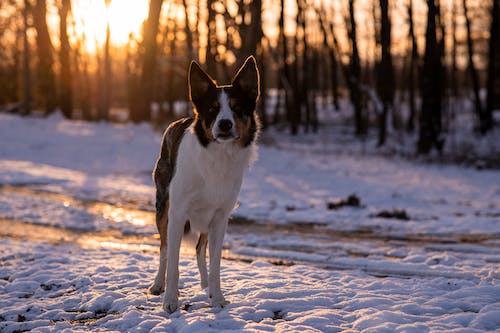
During winter months, salt used to melt ice on sidewalks can be harmful to dogs’ paw pads. It is advisable to rinse their paws with warm water after walks and dry them thoroughly. Applying a protective balm before going outside can also provide an extra layer of defense against the cold.
Don’t Overload Their Paws
Lastly, maintaining a healthy diet and weight for your dog contributes significantly to the overall health of their paw pads. Obesity puts additional strain on their joints and paws, leading to increased wear and tear. A balanced diet rich in essential nutrients helps maintain healthy skin and strong paw pads.
Keeping our dogs’ paw pads healthy should be a priority for every responsible pet owner. Regular inspection and cleaning, moisturizing with pet-safe products, providing protection during extreme weather conditions, and maintaining a healthy diet are all crucial steps in ensuring the well-being of our furry friends’ precious paws. By following these guidelines diligently, we can ensure that our loyal companions enjoy happy and pain-free adventures throughout their lives.
-
Tips On Finding the Best Dog Groomer
Dogs are not just pets; they are members of our families. As responsible pet owners, it is our duty to provide them with the care and attention they deserve. One crucial aspect of their well-being is grooming. Regular grooming not only keeps your dog looking clean and healthy but also helps prevent various health issues such as skin infections, matting, and parasites. However, finding the best dog groomer can be a daunting task. Here are some tips to help you find the perfect groomer for your furry friend.
Research
Firstly, do your research. Start by asking for recommendations from friends, family members, or even your veterinarian. These individuals may have firsthand experience with local groomers and can provide valuable insights into their services and reputation. Additionally, take advantage of online resources such as review websites or social media groups dedicated to pet care. Reading reviews from other pet owners can give you a better idea of what to expect from different groomers in your area.
Once you have gathered a list of potential groomers, it’s time to visit their facilities in person. A reputable dog groomer should have a clean and well-maintained salon that adheres to proper hygiene standards. Take note of the overall cleanliness of the facility as well as the condition of the equipment used during grooming sessions.
Don’t Be Shy to Ask Questions
During your visit, don’t hesitate to ask questions about their grooming techniques and practices. A skilled groomer should be knowledgeable about different breeds’ specific needs and be able to address any concerns or special requirements your dog may have. Inquire about their experience in handling dogs with similar coats or temperaments as yours.
Observe
Another important factor to consider is how the groomer interacts with dogs under their care. Observe how they handle other dogs during grooming sessions — do they show patience and gentleness? Dogs can become anxious or stressed during grooming if not handled properly, so it’s essential that the groomer knows how to create a calm and safe environment for your pet.
Look For Certifications and Licenses
Apart from their grooming skills, it’s crucial to ensure that the groomer is properly trained and certified. Look for certifications or qualifications displayed in their salon or ask about their training background. A well-trained groomer will have a solid understanding of canine anatomy, skin conditions, and common health issues that may arise during grooming.
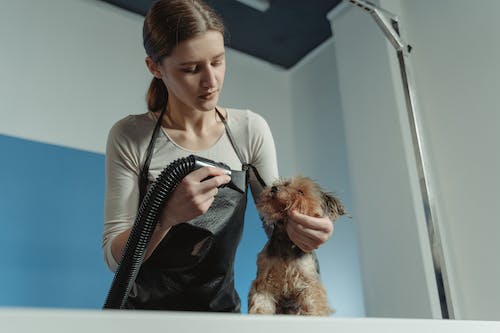
In addition to technical skills, good communication is key when choosing a dog groomer. A professional groomer should be able to listen attentively to your requests and preferences while also providing expert advice on maintaining your dog’s coat and overall health. They should be open to discussing any concerns you may have and be willing to work with you to achieve the desired results.
Lastly, consider the overall experience of taking your dog to the groomer. Pay attention to factors such as location, availability of appointments, pricing, and additional services offered. It’s essential that the groomer’s schedule aligns with yours so that you can maintain regular grooming sessions for your pet.
Finding the best dog groomer requires time and effort but is well worth it for your furry friend’s well-being. By doing thorough research, visiting facilities in person, asking questions about techniques and training, observing interactions with dogs, ensuring proper certifications are in place, prioritizing good communication skills, and considering convenience factors — you can find a trusted professional who will keep your dog looking their best while ensuring their comfort throughout the grooming process. Remember that finding a reliable dog groomer is an investment in your pet’s health and happiness!
-
The Easiest-Going Breeds of Dogs
Dogs are often referred to as man’s best friend, known for their loyalty, companionship, and boundless energy. However, not all dogs possess the same level of enthusiasm and vigor. Some breeds are more inclined towards a laid-back lifestyle, preferring relaxation over rigorous exercise. These most laidback breeds of dogs have a reputation for being low-energy and content with a leisurely pace of life.
Basset Hounds Are Amazing
One such breed is the Basset Hound. With its droopy eyes and long ears, this breed is notorious for its calm demeanor. Basset Hounds were originally bred for hunting small game but have since become popular as family pets due to their gentle nature. Despite their hunting background, they would rather spend their days lounging on the couch than chasing after prey. Their short legs and heavy build contribute to their lackadaisical demeanor.
English Bulldogs Are Charming
Another breed that falls into the category of easy-going dogs is the English Bulldog. This iconic breed is known for its stocky build, wrinkled face, and distinctive underbite. Bulldogs have a calm and easygoing temperament that makes them ideal companions for those seeking a relaxed lifestyle. They are content with short walks or even just pottering around the house all day long.

Cavalier King Charles Love Their Family
The Cavalier King Charles Spaniel is yet another breed that can be considered one of the most laidback among dogs. These small spaniels are affectionate and friendly but also possess an innate calmness that sets them apart from other breeds in terms of energy levels. While they enjoy occasional playtime or short walks, Cavaliers are more than happy to curl up on a soft cushion or lap for hours on end.
Don’t Forget About the Great Dane!
Moving on to larger breeds, the Great Dane deserves mention as one of the most relaxed giants in the dog world. Despite its imposing size, this gentle giant has surprisingly low energy levels compared to other large breeds. Great Danes may require a short burst of exercise, but they are more than willing to spend the majority of their time lounging around the house. Their calm and relaxed nature makes them excellent companions for those who prefer a slower pace of life.
The French Bulldog is Always a Safe Bet
Lastly, the French Bulldog is renowned for its easy-going personality. These small, muscular dogs have become increasingly popular in recent years due to their adorable appearance and friendly temperament. However, French Bulldogs are not known for their athleticism or high energy levels. They are perfectly content with short walks and indoor playtime, making them an ideal choice for apartment dwellers or individuals with limited space.
While these breeds may be considered “low energy” dogs compared to their more active counterparts, it is important to note that all dogs require some level of exercise and mental stimulation to maintain good health and prevent behavioral issues. Regular walks, play sessions, and engaging activities should still be incorporated into their daily routines.
-
How To Prevent A Dog From Being Bored
Dogs are incredible creatures that bring joy, companionship, and unconditional love into our lives. As responsible pet owners, it is our duty to ensure that our furry friends lead happy and fulfilling lives. One crucial aspect of a dog’s well-being is preventing boredom. Just like humans, dogs can become bored if they lack mental stimulation and physical activity. In this blog, we will explore various strategies to prevent a dog from being bored.
Firstly, regular exercise is essential for keeping a dog mentally and physically stimulated. Dogs are naturally active animals that require daily exercise to stay healthy and happy. Depending on the breed and age of your dog, the amount of exercise needed may vary. However, as a general rule of thumb, dogs should be taken for walks at least twice a day for 30 minutes each time. This not only provides them with physical activity but also allows them to explore their surroundings and engage their senses.
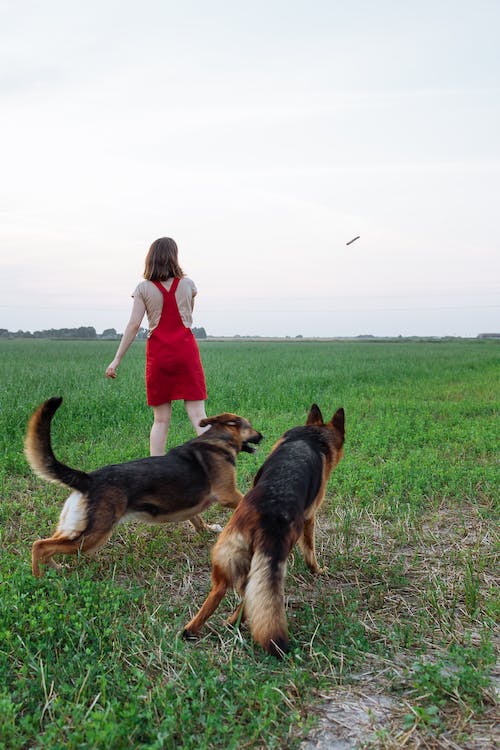
In addition to walks, engaging in playtime activities with your dog is an excellent way to prevent boredom. Dogs thrive on interactive play sessions with their owners or other dogs. Playing fetch in the park or engaging in tug-of-war games can provide both mental stimulation and physical exercise for your furry friend. It is important to choose toys that are suitable for your dog’s size and breed to ensure safety during playtime.
Another effective method of preventing boredom in dogs is through puzzle toys or treat-dispensing toys. These types of toys challenge your dog’s problem-solving skills while rewarding them with treats or food when they successfully solve the puzzle or manipulate the toy correctly. Not only do these toys keep your dog entertained for extended periods but they also help prevent destructive behavior caused by boredom.
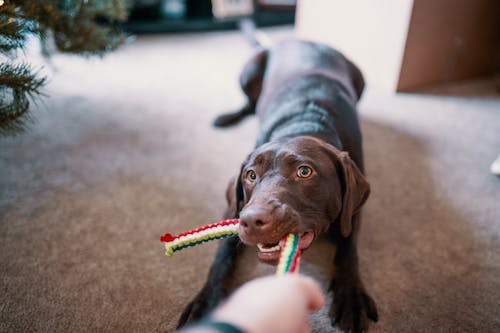
Furthermore, socialization plays a vital role in preventing boredom in dogs. Dogs are social animals that thrive on interaction with other animals and humans alike. Regular visits to the local dog park or arranging playdates with other friendly dogs can provide your pet with the social stimulation they need. Additionally, enrolling your dog in obedience classes or training sessions not only helps them learn essential skills but also provides mental stimulation and strengthens the bond between you and your furry companion.
Mental Stimulation
Mental stimulation is just as important as physical exercise for preventing boredom in dogs. Engaging in activities that challenge their minds can keep them entertained and prevent destructive behavior caused by boredom. Simple activities such as hiding treats around the house or teaching them new tricks can provide mental stimulation for your dog. There are also interactive puzzle games available specifically designed to challenge a dog’s cognitive abilities.
Lastly, it is crucial to establish a routine for your dog. Dogs thrive on predictability and structure, so having a consistent daily routine can help prevent boredom. Feeding, walking, playtime, and rest should all be scheduled at regular intervals throughout the day. This not only provides mental stimulation but also gives your dog a sense of security and stability.
Preventing boredom in dogs requires a combination of physical exercise, mental stimulation, socialization, and establishing routines. By incorporating these strategies into our daily lives as responsible pet owners, we can ensure that our beloved companions lead happy and fulfilling lives. Remember that each dog is unique, so it is essential to understand their individual needs and preferences when implementing these preventive measures against boredom.
-
The Best Way to Clean Up Dog Hair
Dog hair can be a persistent problem for pet owners. It seems to find its way into every nook and cranny of our homes, clinging to furniture, carpets, and clothing. While it may seem like an endless battle, there are several effective methods for cleaning up dog hair that can make the task more manageable.
One of the most efficient ways to tackle dog hair is by using a vacuum cleaner specifically designed for pet hair removal. These vacuums often come with specialized attachments that can easily pick up stubborn hairs from upholstery and carpets. Additionally, they have powerful suction capabilities that can effectively remove loose hairs from surfaces. When using a vacuum cleaner, it is important to go over each area thoroughly and in different directions to ensure all the hair is picked up.
Simple But it Works!
Another effective method for removing dog hair is by using lint rollers or sticky tape. These tools are particularly useful on clothing or fabric surfaces where vacuuming may not be as effective. Simply roll the lint roller over the surface, pressing down firmly to pick up any loose hairs. Alternatively, wrap sticky tape around your hand with the adhesive side facing outwards and pat it gently on the surface where dog hair is present. This method works well on smaller areas or when you are in a hurry.
Regular Grooming is Key
Regular grooming of your dog can also help reduce shedding and minimize the amount of loose hair in your home. Brushing your dog’s coat daily will remove loose hairs before they have a chance to fall off onto furniture or floors. Additionally, regular bathing will keep your dog’s coat clean and healthy, reducing excessive shedding.
Prevention
To prevent dog hair from accumulating on furniture or bedding, consider using washable covers or throws that can easily be removed and cleaned when necessary. This will not only protect your furniture but also make cleaning up easier as you can simply toss them into the washing machine.
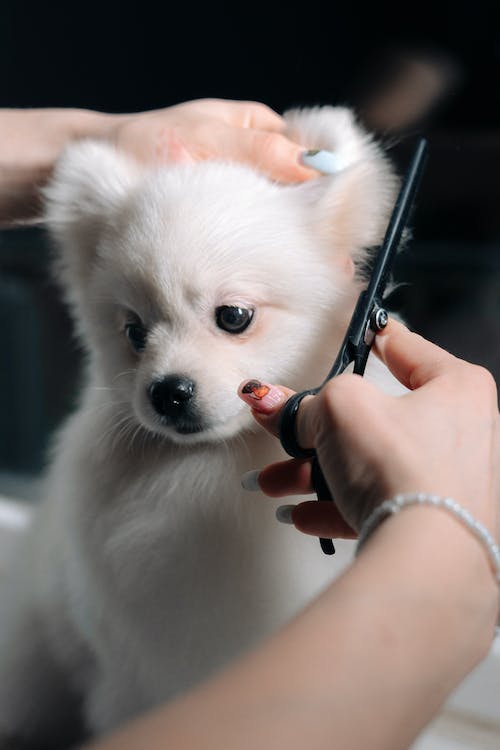
In addition to these methods, there are some preventive measures you can take to minimize the amount of dog hair in your home. Regularly washing and vacuuming your dog’s bedding will help remove any loose hairs that may have accumulated. Additionally, keeping your dog off furniture or designating specific areas where they are allowed can help contain the spread of hair.
It is important to note that some dogs shed more than others, and certain breeds are known for their excessive shedding. If you have a breed that sheds heavily, it may be worth considering professional grooming services or investing in a high-quality pet hair removal tool. Cleaning up dog hair can be a challenging task for pet owners. However, by using the right tools and techniques, it is possible to keep your home free from excessive shedding. Regular grooming, vacuuming with specialized pet hair attachments, using lint rollers or sticky tape, and employing preventive measures such as washable covers can all contribute to a cleaner living environment. With these strategies in place, you can enjoy the company of your furry friend without constantly battling against their shedding.
-
2023’s Top Dog Breeds
For years, dogs have become more than just pets; they have become beloved members of our families and trusted companions. As we finish the year 2023, we would like to share our list of what we feel to be the Top-5 dog breeds of the year. These pups all have remarkable qualities and have proven to be the best of the best.
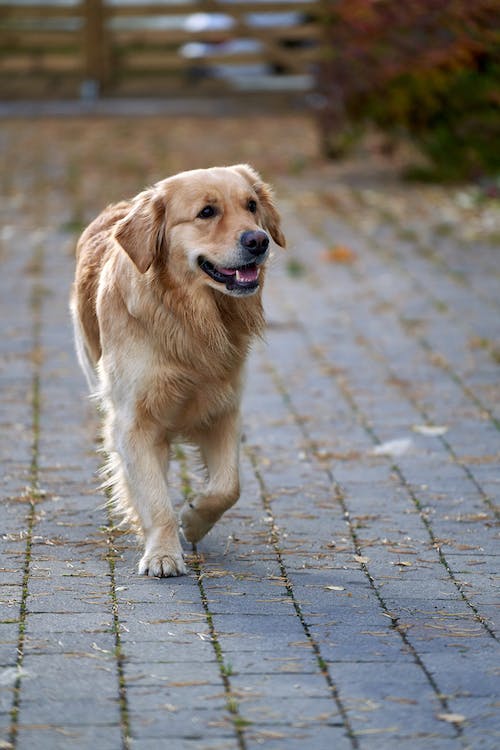
Labrador Retrievers
There’s a reason why this breed, year after year, continues to rank so high in popularity. The Labrador Retriever is an A+ breed of dog that has an incredibly loving personality and a warm temperament. They are very social dogs that thrive with attention, love, and one-on-one time. They enjoy a walk in the park as much as they enjoy a nap on the couch with their owner. They are smart and train well and truly make an amazing family pet.

Bulldogs
Who doesn’t love the Bulldog? Not only are they handsome pups, but very lovable and caring dogs. They do well with children, are excited to greet you when you come home, and are happy when you are. This breed’s popularity is what it is today thanks to its long history of making a great family pet and should be one to consider if you are looking to add a puppy to your family.
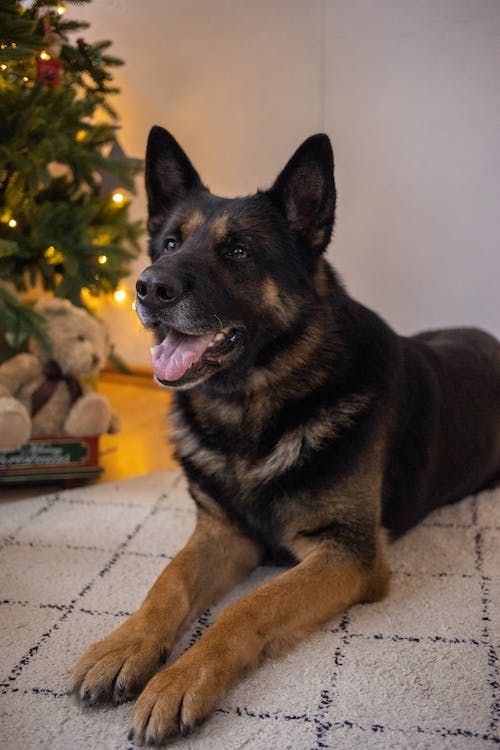
German Shepherds
This breed is a very loyal, protective, and caring dog. They make a great fit with families of all dynamics and love attention. They look forward to exploring the great outdoors and thanks to their smarts, generally train with ease. For years this breed has been a family favorite for many reasons. The German Shepherd is an outstanding dog and one your whole family will love.
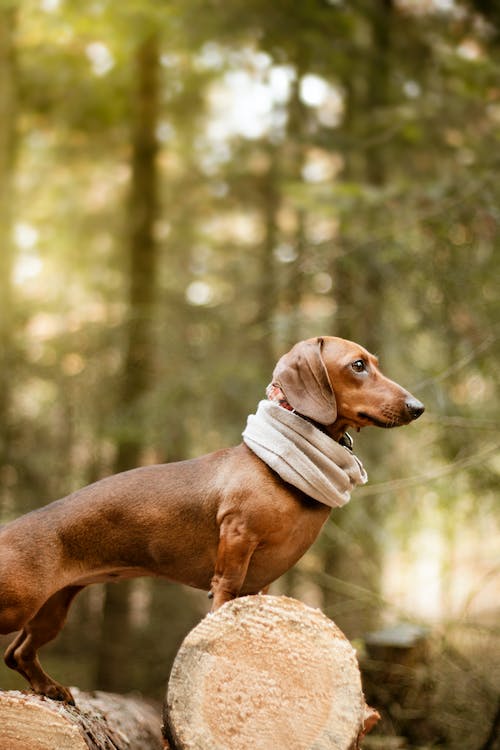
Dachshund
This breed is a playful, energetic, and lovable dog. They interact very well with children and other pets in the household and are generally very low maintenance. They love learning new tricks and have the perfect balance of energy. They are not overly rambunctious but love to play. They have sweet and warm demeanors and make fantastic pets.
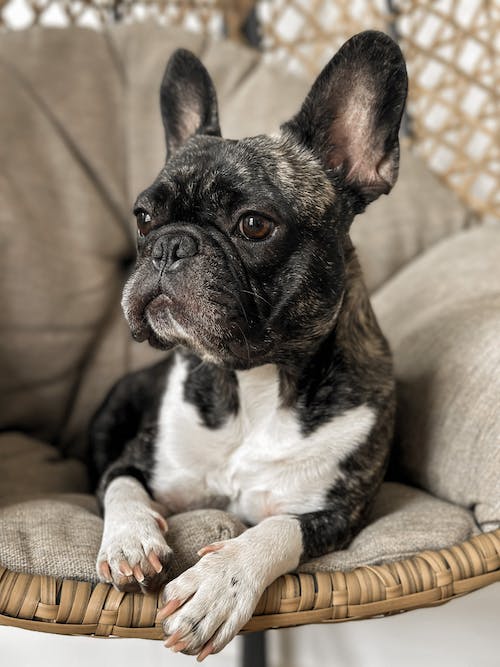
French Bulldogs
This breed has a very easy-going and lowkey temperament. They absolutely love nap time with their family, do great with children, and get along well with other pets in the home. They are friendly dogs that enjoy your attention. This breed has been very popular across the US for years and will continue to into the year 2024 due to all of its great qualities.
-
The Basics of Dog Training
Dog training is an essential part of owning a pet, ensuring they are well-behaved, obedient, and happy. To effectively train your furry friend, it’s crucial to understand the basics of dog training.
– Establish clear communication with your dog.
– Use consistent verbal cues and body language.
– Dogs respond best to positive reinforcement.
– Reward your pup with treats or praise when they exhibit desired behaviors. – Don’t forget, your body language is very important while communicating with your dog.
Consistency Is Key
Set a routine for training sessions and stick to it. Short and frequent sessions work best as dogs have limited attention spans. Patience is essential during the training process as dogs learn at their own pace. Lastly, remember that every dog is unique; tailor your training approach to suit their individual needs and personality traits. By grasping these fundamental principles of dog training, you will be better equipped to establish a strong bond with your canine companion and achieve successful results in their behavior development.
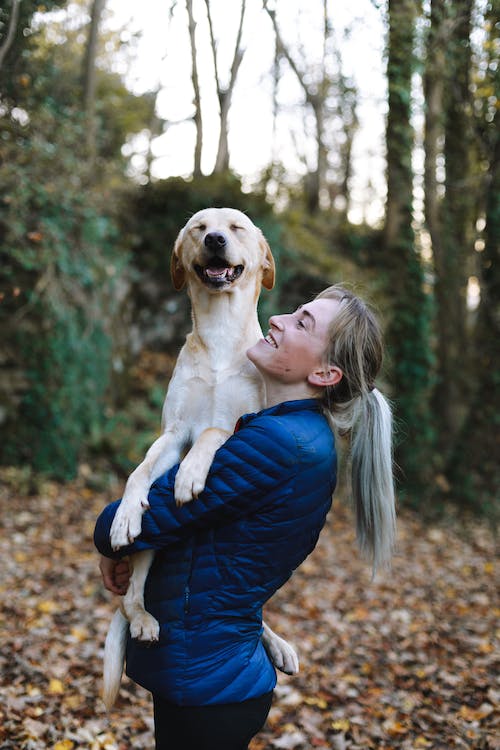
Establishing A Positive Relationship with Your Dog
Building a strong and positive relationship with your dog is essential for successful training. It is important to create an environment of trust and respect that encourages cooperation and understanding between you and your furry companion. To achieve this, start by spending quality time together, engaging in activities that both of you enjoy.
Regular exercise not only keeps your dog physically fit but also helps release pent-up energy, reducing behavioural issues. Avoid punishment or harsh methods as they can damage the trust between you both.
Effective Techniques for Teaching Basic Commands
When it comes to training your dog, initial basic commands lay the foundation for a well-behaved and obedient pet. Commands such as sit, lay, paw, and wait allow your dog to recognize commands. In time your dog will build up to more complicated commands that require more effort on his part.
Addressing Common Behavior Issues in Dogs
When it comes to training our furry companions, addressing common behavior issues is essential for a harmonious household. One prevalent issue faced by dog owners is excessive barking. To tackle this problem, it is crucial to identify the underlying cause, such as boredom or anxiety, and address it appropriately through mental stimulation, exercise, and positive reinforcement techniques.
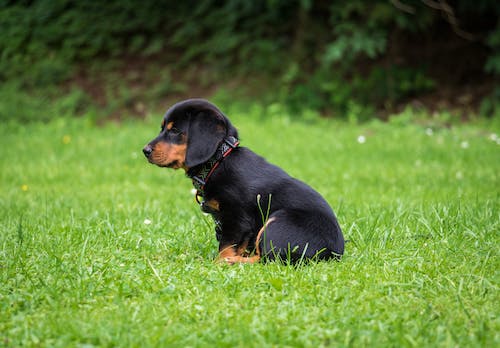
Start Training Young
Ever hear of the saying “you can’t teach an old dog new tricks?” Well, you can, however, it is easier to teach a puppy new tricks because they don’t have many bad habits yet. Start training very basic commands at a young age and the trickier and more complicated commands will be easier for them to learn as they mature.
It’s A Process
Training your dog is something that takes time and patience. You need to remember; your dog is happy when you are and does not want to disappoint you. Being patient and positive will allow better long-term results. A little training each and everyday will go a long way!
-
Protecting Your Dog Against Frostbite
As winter sets in and temperatures drop, it is essential for pet owners to take extra precautions to protect their furry friends from the harsh elements. Just like humans, dogs are susceptible to frostbite, a condition that occurs when the skin and underlying tissues freeze due to prolonged exposure to extreme cold. To ensure the well-being of our beloved companions, it is crucial to understand the signs of frostbite and take preventative measures.
Symptoms To Look For
Frostbite primarily affects areas with minimal insulation, such as ears, paws, and tails. The initial symptoms include pale or bluish skin coloration, coldness upon touch, pain or discomfort when touched or manipulated, and swelling. As the condition progresses, affected areas may become discolored (turning gray or black), develop blisters filled with fluid or blood, and eventually slough off. In severe cases, frostbite can lead to tissue death and infection.
Preventative Measures
To protect your dog against frostbite during winter walks or outdoor activities, consider these preventative measures:
1. Limit exposure: When temperatures plummet below freezing point or wind chills are dangerously low, it is best to minimize your dog’s time outdoors. Shorten walks and opt for indoor playtime instead.
2. Dress appropriately: Just like humans wear warm clothing during cold weather conditions; dogs can benefit from protective gear too! Consider investing in a well-fitted dog coat or sweater that covers their chest area adequately.
3. Protect their paws: Paw pads are particularly vulnerable to frostbite since they come into direct contact with icy surfaces. Before heading outside on snowy days, apply a thin layer of petroleum jelly on your dog’s paw pads for added protection against freezing temperatures.
4. Booties: If your furry friend tolerates them well enough (some dogs may need time getting used to them), consider using booties specifically designed for dogs during walks in snow-covered areas. These booties provide insulation and prevent contact with cold surfaces.
5. Keep them dry: Moisture can exacerbate the effects of cold weather on your dog’s skin. After returning from outdoor activities, thoroughly dry their fur, paying extra attention to paws and ears.
6. Provide shelter: If your dog spends time outdoors, ensure they have access to a warm and insulated shelter. The shelter should be elevated off the ground, have proper bedding (straw or blankets), and be small enough to retain body heat.
7. Monitor for signs of frostbite: Regularly inspect your dog’s ears, paws, and tail for any signs of frostbite. If you notice any abnormalities or suspect frostbite, consult your veterinarian immediately.
8. Adjust their diet: During winter months, dogs may require additional calories to maintain their body temperature effectively. Consult with your veterinarian about adjusting their diet accordingly.
By following these preventative measures, you can significantly reduce the risk of frostbite in your furry friend during winter months. Remember that prevention is always better than treatment when it comes to protecting our beloved pets from the harsh elements of nature.
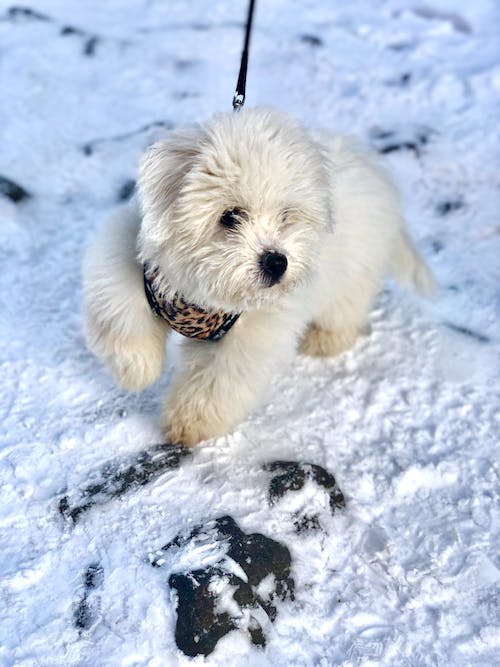
Frostbite is a serious condition that can affect dogs during winter months if proper precautions are not taken. By limiting exposure to extreme cold temperatures, dressing appropriately, protecting their paws with booties or petroleum jelly, keeping them dry after outdoor activities, providing adequate shelter and monitoring for signs of frostbite regularly; pet owners can ensure the well-being of their furry companions throughout the winter season.
Let us prioritize our pets’ safety by taking proactive steps in protecting them against this potentially harmful condition — because they deserve nothing less than our utmost care and love all year round!
-
Police Dog Breeds
Police dogs, also known as K9 units, play a vital role in law enforcement agencies worldwide. These intelligent and highly trained canines possess a unique set of skills that make them indispensable partners to police officers. While there are numerous dog breeds used in police work, each with their own strengths and specialties, certain breeds have proven to be particularly well-suited for this demanding job. These specialized police dog breeds are carefully selected based on their physical capabilities, temperament, and trainability. The choice of breed is crucial as it directly influences the effectiveness of the dog in various law enforcement tasks such as search and rescue operations, drug detection, tracking down suspects, and apprehending criminals. In this blog, we will explore some of the most common police dog breeds employed by law enforcement agencies worldwide.
Commonly Used Breeds in Police Work
When it comes to police work, certain dog breeds are favored for their exceptional skills and qualities. German Shepherds, known for their intelligence and versatility, are widely utilized in various law enforcement tasks such as tracking suspects, detecting drugs or explosives, and search and rescue missions. Belgian Malinois are another popular choice due to their high energy levels, agility, and fearless nature.
These dogs excel in apprehending criminals and protecting officers during dangerous situations. Labrador Retrievers are often employed as detection dogs due to their remarkable sense of smell. Their ability to sniff out narcotics or contraband makes them essential in drug enforcement operations. Similarly, Bloodhounds possess an unparalleled sense of smell that aids in locating missing persons or tracking scents over long distances.
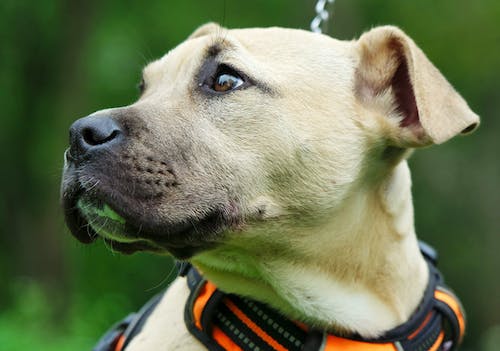
Training And Qualifications for Police Dogs
Police dogs undergo rigorous training programs to become effective members of law enforcement. The training process begins with a careful selection of suitable breeds known for their intelligence, agility, and temperament. German Shepherds, Belgian Malinois, Labrador Retrievers, and Dutch Shepherds are commonly chosen due to their natural instincts and abilities. The training typically starts at a young age, usually around 12-18 months old.
The dogs are taught basic obedience commands such as sit, stay, and come before progressing to more advanced skills. Police dogs receive specialized training in tracking scents, apprehending suspects, searching buildings or vehicles for contraband or missing persons, detecting narcotics or explosives, and providing protection to their human partners. To ensure the highest level of proficiency in real-life scenarios, police dogs also undergo extensive socialization exercises to acclimate them to various environments and situations they may encounter on duty.
-
Thanksgiving Foods Your Dog Can Try
Thanksgiving is a time for family, gratitude, and of course, delicious food. As we gather around the table to indulge in our favorite holiday dishes, it’s only natural to want to share this joy with our furry friends. However, it’s important to remember that not all Thanksgiving foods are safe for dogs. Fortunately, there are several options that can be enjoyed by both humans and canines alike.
The Most Common
One such treat is plain cooked turkey. Dogs can benefit from the lean protein found in turkey meat, but it should be free from any seasoning or bones which can pose a choking hazard or cause digestive issues. Additionally, sweet potatoes are a nutritious option for dogs as they are rich in vitamins A and C. Mashed sweet potatoes without added sugar or spices make a tasty and healthy addition to their meal.
Don’t Forget the Greens!
Furthermore, green beans are another Thanksgiving staple that dogs can enjoy. These low-calorie vegetables provide fiber and essential nutrients while being gentle on their digestive system. Simply steam or blanch them before serving.
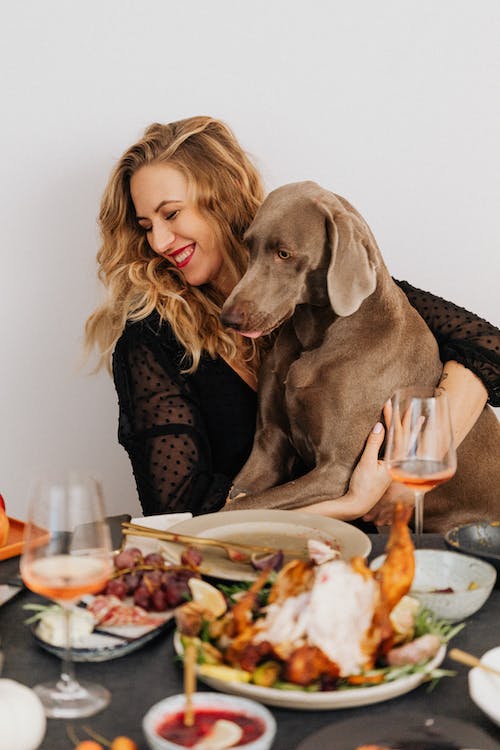
Leave Room for Dessert
Lastly, pumpkin puree is an excellent choice for dogs during Thanksgiving festivities. It aids digestion and can alleviate constipation or diarrhea in pets when served in small amounts.
Foods To Avoid
While it’s tempting to share every dish with our beloved pets during this festive season, it’s crucial to avoid certain foods like onions, garlic, grapes/raisins, chocolate, and anything containing xylitol as they can be toxic to dogs.
Moderation Is Key
Although we love making our pups smile, we need to remember that they are dogs and moderation is very key. Be sure to regulate and monitor how much food they eat, especially if its food they are not accustomed to on a regular basis.
In conclusion, Thanksgiving doesn’t have to exclude our four-legged companions from enjoying some special treats. By providing them with plain cooked turkey meat (without bones), mashed sweet potatoes (without sugar or spices), steamed green beans, and pumpkin puree (in moderation), we can ensure they partake in the holiday feast safely while keeping their health at the forefront of our minds.
-
Breeds That Have the Largest Litters of Puppies
The joy of welcoming a new litter of puppies into the world is an experience that brings immense happiness to both breeders and dog lovers alike. While every litter is special, there is something particularly fascinating about the largest breed puppy litters. These litters not only captivate us with their sheer size but also offer a glimpse into the wonders of nature’s miracles.
When it comes to large breed dogs, it should come as no surprise that they tend to have larger litters compared to their smaller counterparts. Breeds such as Great Danes, Saint Bernards, and Irish Wolfhounds are known for producing some of the largest litters in the canine world. These gentle giants often give birth to anywhere between 10 to 15 puppies per litter, sometimes even more!
One might wonder how these massive breeds can accommodate such large numbers of puppies within their bodies. The answer lies in their biology. Large breed dogs typically have larger uterine horns and wider pelvic bones, allowing them to carry more puppies comfortably. Additionally, these breeds often have higher levels of progesterone during pregnancy, which can contribute to larger litter sizes.
While large breed puppy litters are undoubtedly awe-inspiring, they also present unique challenges for both the mother dog and the breeder. The mother’s health and well-being become paramount during this time as she must provide nourishment and care for her numerous offspring. Breeders must be vigilant in ensuring that each puppy receives adequate nutrition and attention from its mother.
The process of raising a large breed puppy litter requires careful planning and preparation. Adequate space is essential for both the mother dog and her pups. A spacious whelping box or area allows room for movement while providing a safe environment for all involved. Additionally, ensuring proper nutrition through high-quality food becomes crucial in supporting healthy growth for each individual puppy.
Socialization is another vital aspect when dealing with large breed puppy litters. Early socialization helps puppies develop into well-adjusted adults, and this becomes even more crucial when dealing with larger numbers. Breeders must invest time and effort into exposing the puppies to various stimuli, such as different sounds, textures, and experiences. This early exposure helps build confidence and reduces the likelihood of behavioral issues later in life.
The fascination with large breed puppy litters extends beyond their physical size. Each puppy within the litter possesses its unique personality traits, markings, and potential. It is a joy to witness these little beings grow and develop into their own distinct individuals. From observing their first wobbly steps to witnessing them explore the world around them, every moment is filled with wonder.
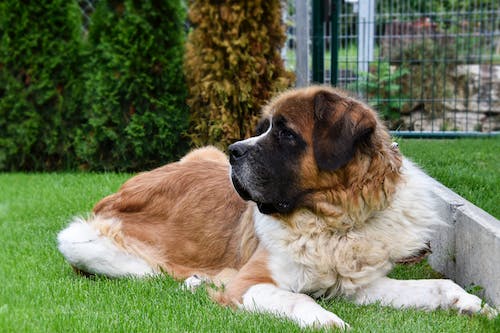
Large breed puppy litters also present an opportunity for breeders to contribute positively to the future of these magnificent breeds. By carefully selecting breeding pairs based on health, temperament, and conformation standards, breeders can work towards improving the overall quality of these breeds while ensuring their long-term well-being.
Large breed puppy litters are a testament to nature’s marvels. They embody both the beauty of life’s diversity and the challenges that come with it. These litters captivate us not only with their size but also with their potential for growth and development. As we marvel at these gentle giants’ ability to bring forth new life in abundance, we are reminded of our responsibility as stewards of these remarkable creatures.
-
They’ll Fight Like Cats and Dogs!
We’ve all heard the saying, they’ll fight like cats and dogs…
Well, not really if you find the right dog. There are certain qualities a dog needs to have in order for it to get along well with a cat. The initial thing to take into consideration is the dog’s breed group. Breeds in the Terrier Group were designed to hunt smaller animals, such as a cat! Dogs in the Hound Group were bred to follow, pursue, and chase animals. Dog breeds that fall under the Herding Group were designed to do just that, herd. Cats are certainly independent animals and may not do well being led, however, herding dogs tend to get along well with them. Below is our list of the Top-4 herding dogs that we feel would make the best fit in a household that has a cat.
The Australian Shepherd
The Australian Shepherd is a highly intelligent and loyal dog breed that has become increasingly popular in recent years. Despite its name, the breed actually originated in the western United States in the 19th century, where it was used for herding livestock on ranches. It is believed that the breed’s ancestors were brought over by Basque shepherds who came to America from Australia.
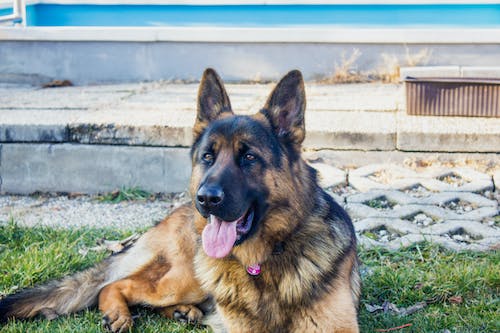
The German Shepherd
The German Shepherd is a breed of dog that has been around for over a century. Originally bred in Germany as a herding dog, they quickly became popular as police and military dogs due to their intelligence, loyalty, self-control and bravery. Today, German Shepherds are still used in these roles but have also become beloved family pets.
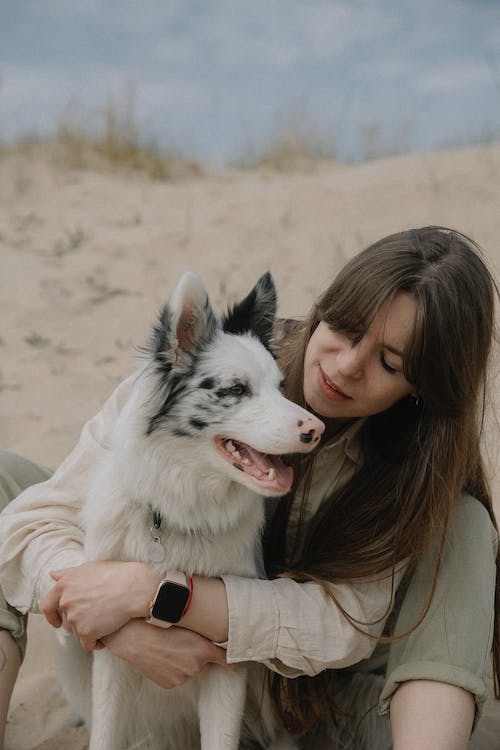
Border Collie
The Border Collie is a medium sized breed of herding dog. They are widely considered to be the most intelligent dog breed who are easily trained. They are descendants of landrace sheepdogs that were once found all over the British Isles, but became standardized in the Anglo-Scottish border region. They are gentle and caring dogs who grow close to family and other pets within their household.
Shetland Sheepdog
The Shetland Sheepdog, also known as the Sheltie, is a breed of herding dog that originated in the Shetland Islands of Scotland. The original name was Shetland Collie, but this caused controversy amongst Rough Collie breeders of the time, so the breed’s name was formally changed. The Shetland Sheepdog is a working dog and has a lowkey and generally laidback personality. They enjoy the company of other animals and rarely show signs of aggression.
Regardless which breed of dog you eventually decide to go with, the initial introduction between the animals is very important. Many animals are territorial and learning to share their space is something that may take a little time.
-
Cool Puppy Names Thinking Outside the Box
Although there are many exciting things about getting a new puppy, one of the most exciting is picking out his or her name. Although some of the “old school” names like Spot still work, check out our list of some very unique names and the meaning behind them.
Abe
Of English origin and meaning “Father of Nations,” it was also the name of the U.S.’s 16th president.
Ace
A term for the best card in the deck, “ace,” can also mean an expert or pro.
Alfie
A classic 1966 rom-com starring Michael Caine that was remade in 2004 with Jude Law.
Ali
Iconic boxer Muhammad Ali floated like a butterfly and stung like a bee who won Olympic gold in 1960 and was the boxing heavyweight champion along the way.
Alpha
The first letter of the Greek alphabet, the name Alpha, will let all the other dogs know who’s the top dog!
Amigo
Meaning “friend” in Spanish, this is a perfect dog name for your new best friend.
Andy
Short for Andrew, which means “brave” or “manlike” in Greek.
Apollo
The name of the Greek god of sun and light also belongs to six outer space missions that successfully landed humans on the Moon.
Astro
Greek for “of the stars,” and also Houston’s Major League Baseball team.
Atlas
In Greek mythology, Atlas is the Titan who holds up the world.
Avery
This name of English origin means “ruler of the elves.”
Axel
Dating as far back as the 10th Century, the name Axel has many other spellings, including Aksel.
Bacardi
One of the all-time best-selling rums in the world.
Bailey
A creamy Irish liquor enjoyed in coffee in the morning or on the rocks in the evening.
Baloo
The easygoing bear character of “The Jungle Book.”
Bandit
Meaning a thief, this pup name could be perfect for your little pup who stole your heart!
Banjo A twangy instrument popularized by Earl Scruggs.
Eisenhower
Dwight D. Eisenhower was the 34th president of the United States.
Eli
Short for names like Elijah and Elliott, and meaning “elevated” in Hebrew.
Elvis
After “The King,” Elvis Presley, of “Jailhouse Rock” “Hound Dog” fame.
Fenway
Fenway Park is one of the most iconic stadiums in baseball and home to the legendary Boston Red Sox.
Finley Signifying a “fair-haired hero” in Scottish.
Finn
For fair-skinned male dog names, this literally means “fair or white” in Irish.
Finnegan
Also means “fair-haired” in Irish.
Flash
A good name for a sporty-looking pup.
Flex
A name with a macho vibe.
Ice
For the dog who is cooler than the other pups!
Igor
A common Russian and Polish name meaning “farm laborer.”
Jager
Short for Jgermeister, the licorice-flavored liqueur.
Jake
Short for Jacob, meaning “supplanter.”
Jager
Short for Jgermeister, the licorice-flavored liqueur.
Lincoln
The U.S. president on the penny, or a luxury automobile company.
Link
The main character in Nintendo’s “The Legend of Zelda” video game series.
Linus
Sibling of Lucy and Rerun in the iconic “Peanuts” franchise.
Marlin
A fish found in oceans throughout the globe.
Marshall
A Scottish name meaning “lover of horses.”
Martini
A cocktail that’s a favorite of James Bond.
Ninja
For a stealthy dog, or one with all black fur, like the ninja’s outfit.

Norman
Golfers can name their pup after “The Great White Shark,” former world No. 1, Greg Norman.
Noah
A biblical character known for his ark.
Porsche
The German maker of high-performance sports vehicles.
Presley
Last name of Elvis, the King of Rock’ n Roll.
Raven A bird, an Edgar Allan Poe poem, and Baltimore’s NFL team.
Rebel
For the dog who goes against the flow and shakes things up.
Red
The color of Mars, roses, bricks, and maybe your dog’s coat, too.
Teddy
Like a stuffed teddy bear, you’ll just want to snuggle with him.
Thunder A powerful name for the noise that comes after lightning.
-
Two Great Pups: The Pomeranian and the Maltese
The Pomeranian and Maltese have many great qualities. They are both friendly pups that love their family and look forward to seeing them. These dog breeds are very popular and have found their way into homes around the world thanks to their endless list of great qualities. If you are looking to learn more about for a smaller breed of dog that is kid friendly and mom approved this blog is for you.
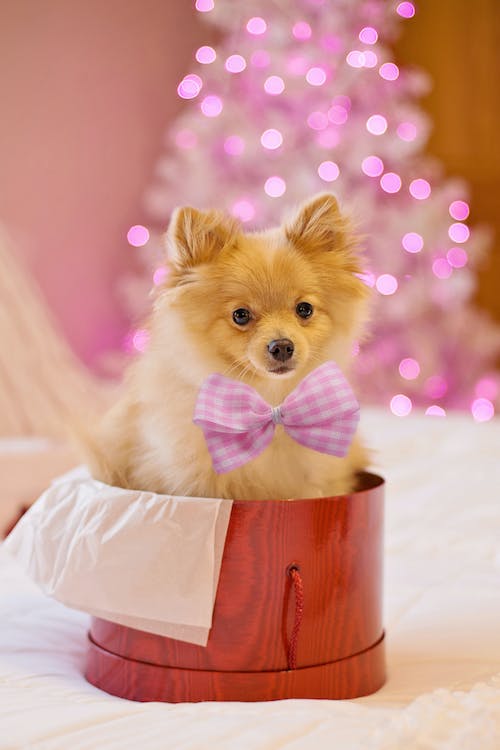
History of the Pomeranian
The Pomeranian is a miniaturized Spitz-type dog that originated in Pomerania, Germany in the 1800s. This breed was originally a larger dog that over time were bred to be the smaller dog they are today. “Poms,” as they are often referred to, have been warm and loving companion dogs that have won the hearts of people around the world.
Life With the Pomeranian
Pomeranians tend to be easy to maintain and live with. Their double coat does require some extra brushing to keep looking good, but overall, they do not require excessive amounts of work. They also tend to be healthy pups because of their activity level and generally do not have a tendency toward obesity. They are normally up for learning new tricks and will gladly be the center of attention while showing these tricks off to family and friends. This breed of dog does well with other pets in the home and will quickly bond with any children. It should be noted that they are a smaller breed of dog so children do need to use a degree of caution while playing with them.
The Pomeranian’s Personality
The Pomeranian is a very smart, affectionate, and playful pup. This breed has a very charming and happy personality and a demeanor to match. The Pomeranian is very approachable and is not known to be aggressive or abrasive. They love their family and show it with their snuggles and licks. This breed has been around for a very long time and has made a truly amazing family pet.
Basic Breed Information
Male: 10-12 inches tall and 3-8 pounds
Female: 10 to 12 inches tall and 3-8 poundsPhysical Characteristics: Puffy and shiny coat with upright ears
Daily Exercise Requirements: About thirty minutes
Energy Level: High
Life Expectancy: Twelve to sixteen years
Drool Level: Low
Bark Level: High
History of the Maltese
For centuries, the Maltese spaniel has been the aristocrat of the K9 world. It is believed that the Maltese originated in Malta, Italy. The Maltese has been highly valued in society throughout history. One account is of a Maltese being sold in the 1500s for the equivalent of today’s $2,000. The first Maltese exhibited in the United States was white and listed as a “Maltese lion dog” at Westminster’s first dog show in 1877. In 1888 the American Kennel Club registered the Maltese.
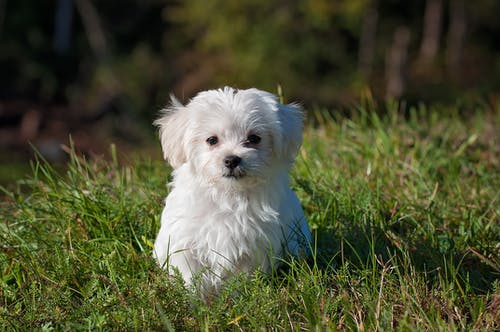
Life With the Maltese
The Maltese is a very down to earth breed of dog that loves to socialize and spend time with his family. They are not overly rambunctious dogs but do have a lot of play in them. They also do not require excessive amounts of work to look good and enjoy a daily brushing and a warm bath every four or five weeks. They tend to adapt well in contemporary homes or apartments and get along well with other pets inside the house. This breed is a great companion dog and will win your heart in no time at all.
The Maltese’s Personality
The Maltese has a very personable and caring personality. They are easy to approach and not known for aggression or being very hyper. Many families that own this breed are repeat breed owners because they have had a lot of success with a past Maltese. This breed is generally a happy and loving breed that just wants to be loved.
Basic Breed Information
Male: 9-11 inches tall and 4-6 pounds
Female: 9-11 inches tall and 4-6 poundsPhysical Characteristic: Floppy ears with a smooth coat
Daily Exercise Requirements: About twenty minutes
Energy Level: Semi energetic
Life Expectancy: Twelve to fourteen years
Drool Level: Low
Bark Level: High -
Poodles Can Be Found In 40 Other Dog Breeds
We all know the Poodle makes a great family pet. This breed of dog is also considered to be the smartest of dogs and has a very inquisitive and sharp mind. The Poodle is known to interact very well with people and other animals and loves one on one attention. For generations, the Poodle has been one of the most popular breeds of dog and it looks like this pup’s status will remain this way for a long time.
The Poodle is so well-liked that it has been bred with more than forty other dog breeds which have also proven to be a success. In this blog we will go over some of these breeds and talk a little bit about them.
Goldendoodle
The Goldendoodle is a cross between the Goldendoodle and the Poodle. This breed has become one of the most sought-after dogs on the planet. They make great family pets as well as therapy pets. They are pleasant and do well with children in the household.
Labradoodle
The Labradoodle is a cross between the Labrador Retriever and the Poodle. This breed is very popular amongst those who suffer from allergies yet want a dog. This breed is smart and loyal and a joy to be around. They can also be found in a variety of colors.
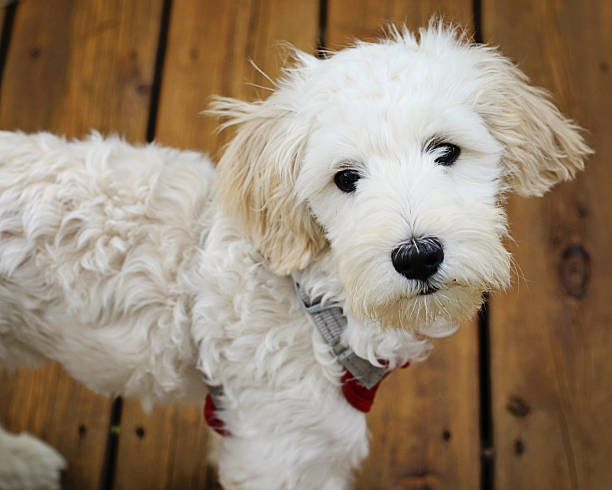
Sheepadoodle
The Sheepadoodle is a mix between the Old English Sheepdog and the Poodle. Loving, loyal and friendly best describes this breed of dog. They are known to have amazing personalities and to quickly bond with their family.
Whoodle
The Whoodle is a cross between the Soft-Coated Wheaton Terrier and the Poodle. This breed of dog is also known as a Wheatendoodle, the Wheatenpoo, the Sweatendoodle, and the Sweatenpoo. These pups are friendly and energetic and are not known to bark a lot.
Westiepoo
The Westiepoo is a mix between the West Highland White Terrier and the Poodle. This is a smaller breed of dog known for its fluffy coat and high levels of energy. They do well with families that have active children.
Weimardoodle
The Weimardoodle is a cross between the Weimaraner and the Poodle.This breed enjoys his family and loves to be a part of everyday family activities. They are a kind and gentle breed of dog with a very warm and approachable demeanor.
Pomapoo
The Pomapoo is a cross between the Pomeranian and the Toy Poodle. This compact and energetic dog has the heart of a lion yet is very gentle and caring. They do quickly bond with family and love to be the center of your attention.
Aussiedoodle
The Aussiedoodle is a cross between the Australian Shepherdand the Poodle. This breed of dog is very popular and known to be very smart, energetic, and loyal. They love outdoor playtime and make lovely family pets.
Dalmadoodle
The Dalmadoodle is a cross between the Dalmatian and the Poodle. These are bigger dogs who are considered to be very smart. They enjoy socialization and one-on-one attention from their family.
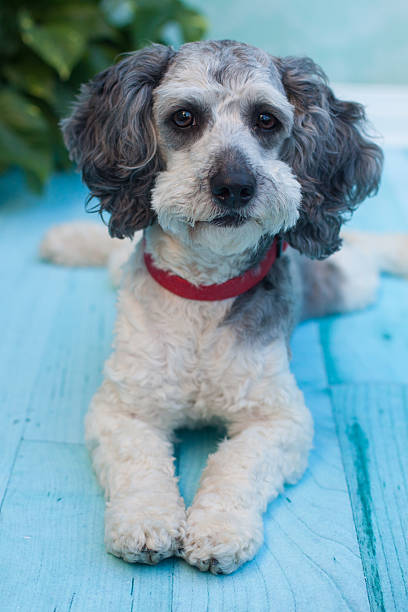
Schnoodle
The Schnoodle is a cross between the Miniature Schnauzer and the Poodle. These dogs are known for their charming personalities and their alert watchdog mentality. They are not aggressive dogs and tend to do well with families that have children.
Cockapoo
The Cockapoo is a cross between the Cocker Spaniel and the Miniature Poodle. These dogs are friendly, caring, social, and affectionate. They have funny personalities and tend to be happy when you are. They are considered to be the oldest of designer dog breeds with roots that date back to the 1960s. This breed is a great pet that the whole family will love.
-
How To Keep Your Pup from Escaping!
Keeping your fur-legged friend contained on his property can be a little tricky at times, especially if he’s known for his Houdini abilities! We dog owners try everything to keep our pups safe and secure at all times, but every so often, they manage to get out and away from us. A dog on the run may think he’s just out for a joy run, but he is putting himself at risk of getting lost, injured, or even worse. If your pup is known to enjoy exploring alone, this blog may help you learn some tips and tricks for keeping him where he is supposed to be.
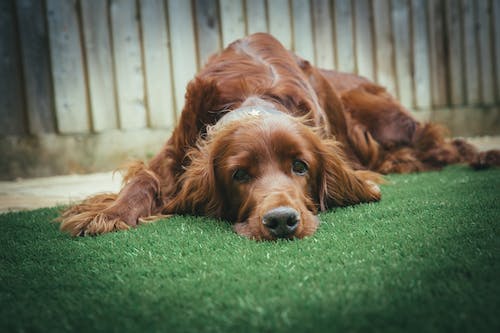
First, let’s understand why our pups try to get out, to begin with. The main reasons are:
- Boredom: Hanging out in a yard in the same environment with the same dog toys isn’t fun. Dogs of all breeds can suffer from boredom, though it’s more common in high-energy breeds. Cattle dogs are especially prone to this because being on the move and working is in their DNA.
- Looking for something beyond the fence: If a taunting squirrel gets your pup’s attention just beyond the fence, he may be inclined to try and catch him and have a “little talk” with him. This could also include a neighbor’s dog or children that your pup wants to play with.
- Anxiety issues: Anxious pups might escape the yard to flee something that is frightening them. This can include loud noises such as fireworks and thunderstorms. Their instinct creates them to want to run from the perceived threat.
- Being Lonely: If your dog tends to spend a lot of time outside with no interaction and alone, he may want to explore and find companionship elsewhere. Pups are social creatures and do have emotional needs like we do.
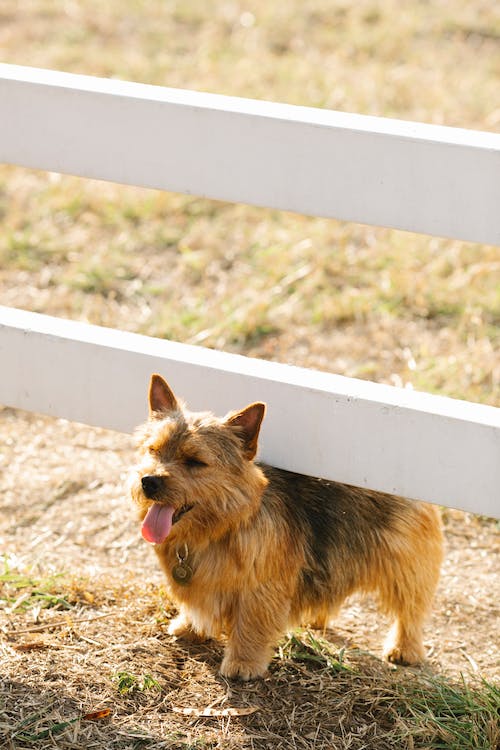
Ways To Prevent Your Dog from Escaping a Fenced-in Area
- Increase the height of your fence to make it more difficult for your pup to jump over or climb it.
- Eliminate any objects that they can use to reach the top of the fence. (Chairs, decorations, etc., that your pup can use to climb up.)
- Reconfigure your yard layout.
- Underground fencing to prevent digging their way out. Many dogs tend to dig under a fence to escape.
- Spread gravel at the base of the fence, which will help to temporarily fill in gaps.
- Pour concrete at the base of the fence, which will permanently fill gaps.
- Inspect and repair the weak or damaged areas of the fence that are open, not sturdy, or not fully secure.
- In some instances, replace the fence with a new one that is stronger and more secure.
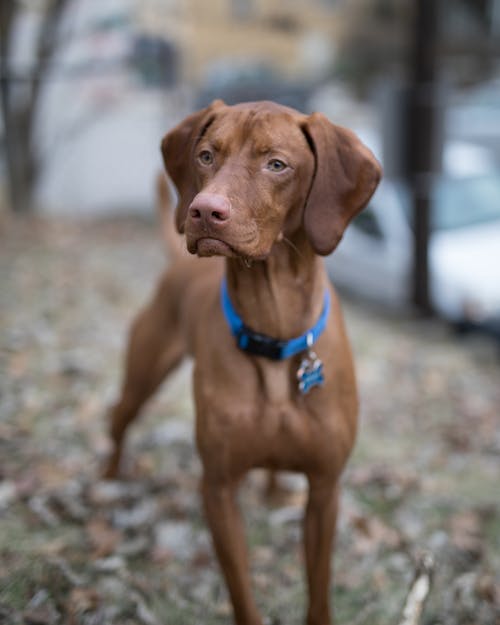
Although many of these tips will help to prevent your pup from escaping, they are not guaranteed as our pups can be creative and, at times, a bit sneaky. There are other tools that many dog owners use to keep their pups safe. Basic GPS tracking collars are a great way to quickly find your pup should he get out. It is always recommended that your dog is microchipped, which will allow for a much quicker and easier return home should he ever get away. And lastly, a good old fashion collar with an ID tag on it will allow your pup to be brought home if he is found after escaping. Taking the time to make sure your pup is safe and secure now will result in a lot of saved time and grief should he escape.
-
Tips on Keeping Your Pup Healthy in The Summer
As we enter summer and the temperature rises, we need to be mindful of our pups and their health. Although our pups do enjoy playing outdoors in all months, hot summer days do take a toll on them and paying extra attention to them and their needs is crucial. We have come up with a list of things to consider which will help keep your pup feeling his best as we enter the summer.
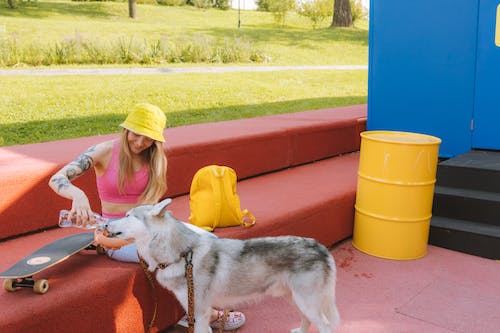
Provide Your Dog with Plenty of Shade and Water
Dehydration in dogs is a common occurrence but one that can be prevented. Making sure that your pup is well hydrated is the first step in preventing this. Having fresh drinking water available is key as is making sure your pup has ample shade while outside. Shade will allow your pup to escape the sun and help him cool down. Signs of dehydration quickly arrive and it is best to prevent before taking place.
Identify the Signs
Your pup’s normal temperature is between 100 and 103F, which means anything above that means your pet’s health is in danger. Dogs do not sweat like humans and rely on panting to cool down. If your pup is outside and you observe any of the following, it may be a good time to bring him inside and allow him relax and lower his body temperature.
- Heavy or excessive panting
- Dry or bright red gums
- Thick drool
- Vomiting
- Diarrhea
- Wobbly legs
- General look of exhaustion or discomfort
- Lethargic behavior
- Whining or barking
Never Leave Your Pet in The Car
Although your fur-legged friend most likely does enjoy a ride in the car, leaving him inside for any amount of time without the air conditioner on can be extremely harmful. The temperature inside a parked car can reach a temperature in very little time that is enough to cause your pup to overheat and die. This act is not only very dangerous, but illegal in many states as it is a form of animal abuse. Police are commonly called to public parking lots after someone observed a dog inside a car unattended. Cracking your windows is certainly not enough to keep your dog safe and is a bad practice.
Apply Ample Amounts of Sunscreen
Believe it or not, dogs are able to get sunburn just like we can. This especially for dogs that are light in color and or have very short coats. Sunburn can be very painful and eventually lead to major health issues such as skin cancer. If you are planning to take your dog outside, a fresh application of sunscreen should be applied every three to four hours. Be sure to pay special attention to areas such as his belly and ears as those are sensitive spots that tend to burn easy. The sunscreen used should be a pet-friendly one as human sunscreen can be toxic for dogs. Taking the time to do this will save a lot of time and pain for your pup later.
Keep Your Dog’s Paws Cool and Protected
Pets heat and cool from the bottom up. If you’re out in the sun together, try to keep your pet off of hot surfaces like cement and asphalt which are generally much hotter than grass and dirt. Hot surfaces will prevent your pup from cooling down and can cause their sensitive paws to burn which may require medical attention. It is always better to be safe than sorry!
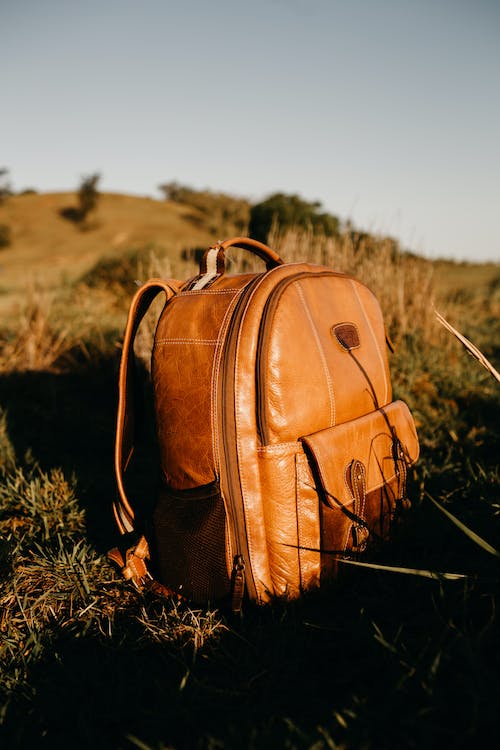
Put Together a Travel Pack for Your Pup
If you plan on bringing your pup out for the day have items packed up that he will be able to use. Extra bottled water, sunscreen, and rags that can be dampened to help keep him cool are just a few. Plan out your adventure ahead of time and be sure there are rest areas that have shade. This will allow for a safer and much more enjoyable adventure for you and your pup.
-
Easiest Dog Breeds to Take Care Of
Every dog requires a degree of time and care in order to help keep him looking and feeling his best. Basic grooming, bathing, nail trimming, and teeth cleaning to name a few things. Some dog breeds require much more time and work ass their coats may require special care, etc. However, not every dog requires regular professional attention or an inordinate amount of brushing to keep its hair in check.
Dogs with flat-faces or with wrinkles require special facial care. Some pups also shed a lot which requires brushing every single day, sometimes twice a day.
If you are looking for what many people consider a “wash-and-wear” dog breed, check out the list of pups below that we came up with. These dogs are generally very easy to maintain and make great family pets.
Basenji
First is the Basenji. These pups are fairly simple to maintain and not known to have a “dog smell” like many other breeds. They also do not bark a lot which is a big plus. A bath every few weeks and some basic care and this pup is ready to go!
Vizsla
The Vizsla is a very easy to care for pooch that doesn’t take a lot of time to clean up. Routine bathing and selfcare is quick and easy. The Vizsla is a very active dog and may require an extra bath or two if playing outside a lot.
Whippet
The Whippet is a clean and tidy pup that also does not take a lot of time to get ready. These pups generally carry little to no scent and require the basics. Another wash and wear pup!
Boston Terrier
The Boston is a neat and clean pup that generally doesn’t have an odor. They also are very light shedders which makes caring for them quick and easy. A bath every few weeks and some brushing and this dog is ready to go!
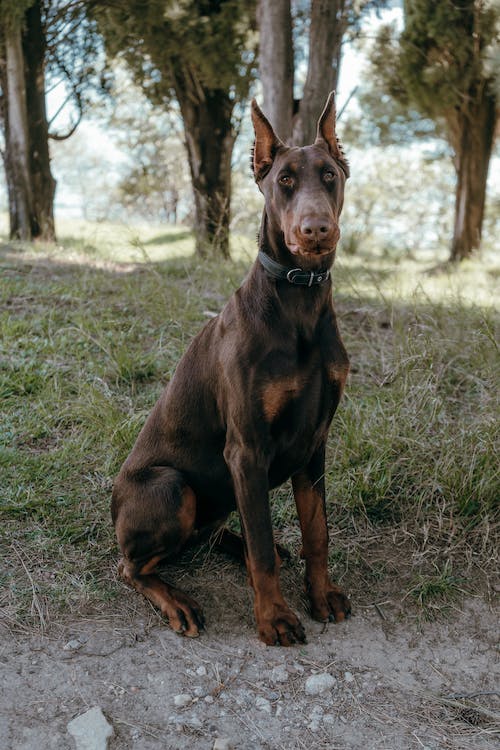
Doberman Pinscher
The Doberman Pinscher, also known as a Dobie, is a very low shedding dog that also in not known to have an odor. Besides basic routine grooming, this breed of dog is pretty simple. They do enjoy being outside so a thorough bath is always a good idea.
Manchester Terrier
The Manchester Terrier is a smart and easy to get along with pup that is known to train with ease. They are easy to care for and besides the basics, this pup will take a lot less time to shine than many other breeds. This is another wash and wear pup that you are sure to love.
German Shorthaired Pointer
The German Shorthaired Pointer is another pup that does not take a lot of time or effort to keep looking good. This breed does tend to shed a tad more than other pups on our list, but with a little bit of brushing you can keep that in check. This is a quality pup and one the whole family will love
Pointer
The Pointer is a playful pup that does enjoy outdoor activities but does not require an excessive amount of maintenance. Routine brushing and a bath every few weeks will help keep this pup looking his best.
Weimaraner The Weimaraner is not a heavy shedder and has very short, easy to care for hair. This breed does not require a lot of effort to keep looking his best and short of a bath every few weeks and some routine brushing, there’s not a lot more to do. They also make great family pets that are known for their loyalty and care.
-
World Record Dog Holders
We all know that our pups are amazing four-legged creatures that have a mind and unique personality. Our pups always tend to intrigue us and generally keep us on our toes. Although all dogs are very special, there are some that have accomplished truly amazing things and have found themselves in the world record book. We have compiled a fascinating list of amazing dog accomplishments that are considered to be world records.
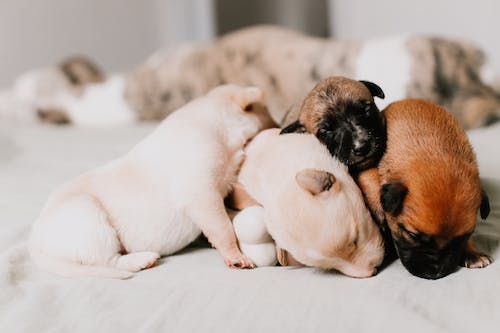
Largest litter of puppies
– Actual record: 24 puppies in one litter
– Record holder: Tia the dog
– Date of record: Nov. 29, 2004
– Location: United KingdomIn 2004, a Neapolitan mastiff named Tia gave birth to an amazing 24 puppies on the same day. The litter consisted of nine females and fifteen males. All 24 puppies were born by Cesarean section.
Longest dog ears
– Actual record: 13.7 inches
– Record holder: Tigger the dog
– Date of record: Sept. 29, 2004
– Location: United StatesTigger the bloodhound snagged the record for the longest ears on a dog on Sept. 29, 2004. Tiger’s right and left ears measured am impressive 13.75 inches and 13.5 inches. In case you didn’t “hear” that correctly, the measure 13.75 inches! In 2003, Tigger was inducted into the Bloodhound “’Hall of Fame.”
Longest dog tail
– Actual record: 30.2 inches
– Record holder: Keon the dog
– Date of record: Aug. 18, 2015
– Location: BelgiumAn Irish wolfhound named Keon hold the record for having the longest tail. In August of 2015, Keon’s tail measured in at an impressive 30.2 inches long, which is about two and a half feet long!
Longest dog tongue
– Actual record: 7.3 inches
– Record holder: Mochi the dog
– Date of record: April 25, 2016
– Location: United StatesA Saint Bernard named Mochi must have never had an issue giving licks to her owner with a tongue that measured in at more than seven inches long. This female Saint Bernard was rescued by her loving family who resided in the United States and hold the world record for the longest tongue on a dog.
Most balls caught by a dog with the paws in sixty seconds
– Actual record: 14 balls
– Record holder: Purin the dog
– Date of record: March 22, 2015
– Location: JapanPlay ball! Purin, a nine-year-old Beagle female, holds the record for catching most balls on her paws in one minute. This pup sits in the record books after successfully catching fourteen balls, which is an average of one catch every four seconds. This pup resides in Japan and may be looking for a major league contract!
Shortest standing dog
– Actual record: 3.8 inches tall
– Record holder: Milly
– Date of record: Feb. 21, 2013
– Location: Puerto RicoThe shortest living pup ever recorded was Milly the dog, who measured in at just 3.8 inches tall. This tiny Chihuahua was from Puerto Rico and weighed less than one ounce when she was born. It would have taken more than sixteen Milly baby puppies to even weigh a single pound.
Tallest standing dog
– Actual record: 3.7 feet
– Record holder: Zeus the dog
– Date of record: Oct. 4, 2011
– Location: United StatesThe tallest dog to have ever lived was a Great Dane named Zeus who stretched out to an incredible 7 feet four inches. Although Great Danes are big pups, this one was extra big! This pup was from Michigan, US and was also a certified therapy dog. This gentle giant was known for his loving and gentle disposition.
-
Six Amazing Breeds of Dogs That Are Not Talked About Enough
There are hundreds of dog breeds in existence, all with different qualities and traits. Realistically, despite similarities, there are no two identical dogs. Each dog has its own personality and mind which means each breed of dog brings something unique to the table. In this blog we are going to “dig” into a few breeds that make great family pets despite not being talked about that often.
Puli
The Puli is a very old Hungarian dog breed that dates all the way back to the Middle Ages. Many believe that this breed is a direct ancestor of the Poodle. Around World War II this breed was nearly extinct but was revived by hobbyists. The Puli makes a great family pet and has many desirable qualities. It should be noted that their coats are high -maintenance and do require work to keep looking their best.
Schipperke
The Schipperke has a similar appearance to the Sheepdog and was originally bred to work on barges in Belgium canals in the 1800’s. This is a working breed of dog that has high energy levels and likes to be on the move. This breed of dog has transitioned into a very well-liked family dog who has a loving and caring personality. The Schipperke makes a great fit for families that want the heart of a big dog but in a smaller package.
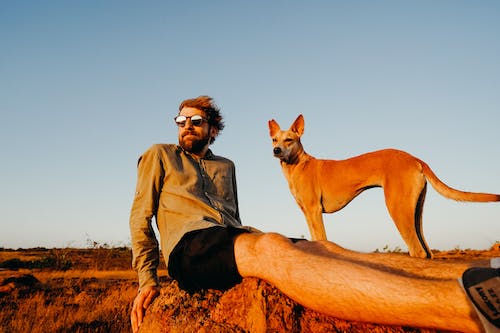
Basenji
The Basenji is considered to be one of the most primitive and oldest breeds of dog in existence. This dog has been traced back to pyramids in Egypt. A great trait of this breed is that they are not known to overly bark, however, can be heard yodeling at times. One of the most unusual facts about this breed is that, like wolves and another primitive dog called a dingo, female Basenjis only come into heat once a year, unlike all other domestic breeds that come into heat two times a year. The Basenji is a loving and social dog that makes a great family pet.
Brussels Griffon
Also known as the bearded dog, the Brussels Griffon is known for its long hair around its snout and for its large expressive eyes. This is a playful and active breed of dog that has a very outgoing personality. They are also considered to be hypoallergenic which is great for those of us who suffer from allergies. This breed also does well in families that have children thanks to their warm demeanors.
Chinese Crested
Many experts believe the Chinese Crested is essentially a smaller version of the African hairless dog. Chinese merchants acquired African hairless dogs on their trips to the continent and bred them to be smaller, producing the Chinese Crested. They originally were known for their abilities to hunt rats on ships but have evolved into a great family pet. This breed has a double coatthat tends to be soft, silky and straight, although some may have curly hair. Both the Hairless and Powderpuff shed very little, and generally makes a great pet for people with allergies.
Bedlington Terrier
The Bedlington Terrier, also known as the Bedlington, is a playful and active dog breed that is known for its loyalty. They are also very friendly dogs who quickly warm up to visitors and new people. This breed emerged in the parish of Bedlington in Northumberland, England in the early 19th century. They were originally called the Rothbury Terrier, after the namesake district on the English coast. The Bedlington Terrier is also considered to be hypoallergenic, which is a big plus for those who suffer from allergies.
All of these unique dogs have a lot to offer. They make great family pets and despite being different in many ways they all share on quality. They will all win your heart in no time at all!
-
Jealousy In Dogs
Many dog owners have seen their dogs’ showing signs of jealousy. Professional dog trainers actually use jealousy as a training tool by removing unresponsive dogs during training and allow dogs to watch their handlers working with another dog. A lot of dog owners observe their dog’s display of jealousy when their owners interact with other dogs, family members or friends.
A Dog’s Jealous Behaviors May Include:
- Biting / Snapping
- Barking
- Growling
- Whining
- Getting between his owner and other objects
- Behavior towards an object or thing you’re interacting with
- Pushing extra attention from you
Behaviors that Really Need to Be Watched Include:
- Aggression. Any kind of biting to gain the attention over a person, pet or object is a bad sign.
- Accidents inside. Since our dog can’t talk to us, they express themselves through their physical actions. They know going to the potty inside is wrong, yet it will get your attention.
- Aggressive growling or howling.
Signs of Possessive Behavior
Your dog may be showing possessive behavior if they do the following:
- Growling
- Snapping
- Excessive whining
- Attacking another pet or person
Understanding a Protective Dog
If your dog is overly protective, it may be because that’s their natural instinct. This reaction may seem aggressive if your dog perceives you are in danger. Sometimes protective instincts can get confused with jealous or possessive behavior.
Your Dog is Protective if They Do the Following:
- Focuses on another animal, person, or situation
- Give their full attention to the scenario
- Calms down and backs down after no threat is found
The key difference between a protective dog and a possessive dog is the relaxing and backing down part of the equation. A possessive or jealous dog doesn’t typically back down, and his behavior remains consistent.
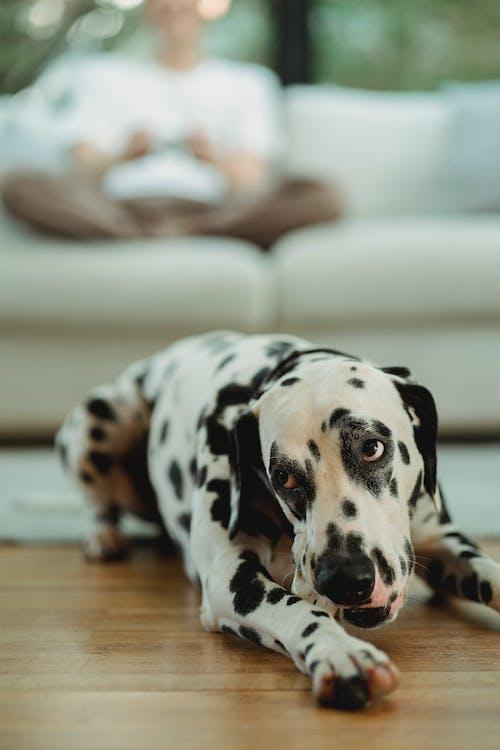
Changing Problematic Behavior
Be patient. First, you’ll need to use positive reinforcement and reward your dog when they act the way you want them to. If your dog comes in between you and another person, try ignoring them. If your dog keeps getting in the way, get up and move to another space. The ignoring and or not reacting to what they are doing will help your dog know their behavior is not working to get your attention.
The Three Main Tips
- Don’t verbally communicate with to them when they do this
- Don’t touch them or push them away
- Don’t make eye contact with them
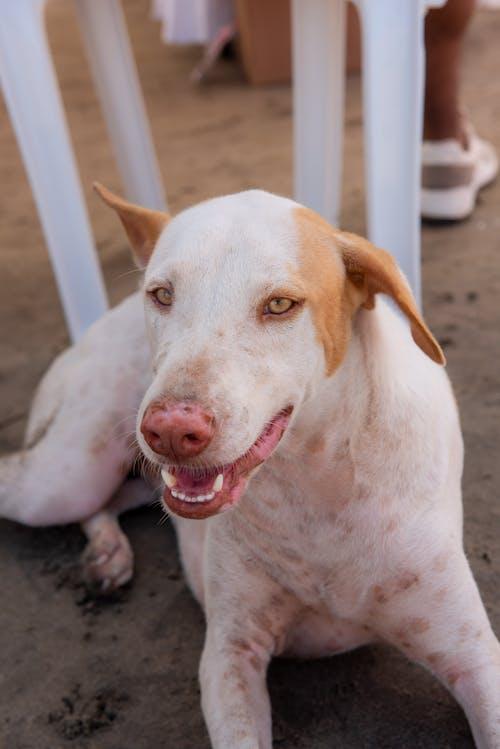
Your Dog is Doing This to Get Your Attention.
By not showing them attention while they do this may deter them from continuing the behavior.To stop your dog’s jealous behavior early in life, consider trying the following ideas:
- Avoid showing too much attention to one pet over another.
- Train your dog to feel safe, secure, and relaxed in their crate.
- Make a separate feeding area for multiple animals. This way they are not competing for food.
- Reward your dog when they’re exhibiting good behavior.
We need to remember; our pups are living creates that have real emotions and feelings. Your pup loves you and wants your attention, similar to a child. It is important to always remain patient with your dog and train him using positive reinforcement. It is also crucial to begin training at a young age as puppies are more prone to learning while their brain is developing. Although older dogs are able to be trained, the process may take longer and be more challenging.
-
Homemade Dog Treats Your Pup Is Going to Love!
Homemade dog treats come with a variety of benefits. For one, you know the ingredients in them. They are also less expensive than commercially produced dog treats. They are also something fun to make! Before feeding your pup anything that he normally does not eat, it is always recommended that you check with your veterinarian first. It’s always better to be safe than sorry. Below is a list of our favorite homemade dog treats that we think your pup will enjoy!
Baked Chicken Treats
For a quick and easy treat, consider this homemade baked chicken dog treats from Eileen Anderson. Using a basic pyramid pan, this recipe can make about 500 small treats that your dog will drool over. After being baked, you can refrigerate or freeze the treats.
Treat Ingredients:
- 1 10-ounce can of chicken, including liquid
- 2 eggs
- 1 cup tapioca flour
- cup of white flour
- 1 tablespoon of coconut oil
Baking Directions:
- Preheat oven to 350F.
- Blend chicken and eggs in a food processor.
- Pour the mixture into a bowl, and stir in flour and oil. This batter should be a little thicker than pancake batter but still pourable.
- Spread the batter onto the silicone mold on a cookie sheet, making sure it’s in the holes, and then scrape it off the dividers.
- Bake for 12 minutes.
- Once cooled, turn over the mold and dump the treats out.
- You can bag up the treats and refrigerate or freeze them.
Homemade Bacon Pyramid Pan Treats
Is your fur-legged friend a fan of bacon? If so, this simple recipe by Michelle Taylor will be a hit. With four basic ingredients, this is a great homemade treat for beginners.
Treat Ingredients:
- package of bacon
- 2 eggs
- 150 grams of gluten-free flour
- Water to thin
Baking Directions:
- Preheat oven to 350F.
- Blend the bacon and eggs.
- Add flour. Stir in water if the batter needs to thin.
- Smooth the batter over the baking mat and bake for eight minutes.
- Once cooled, cut the treats into bite-sized pieces.
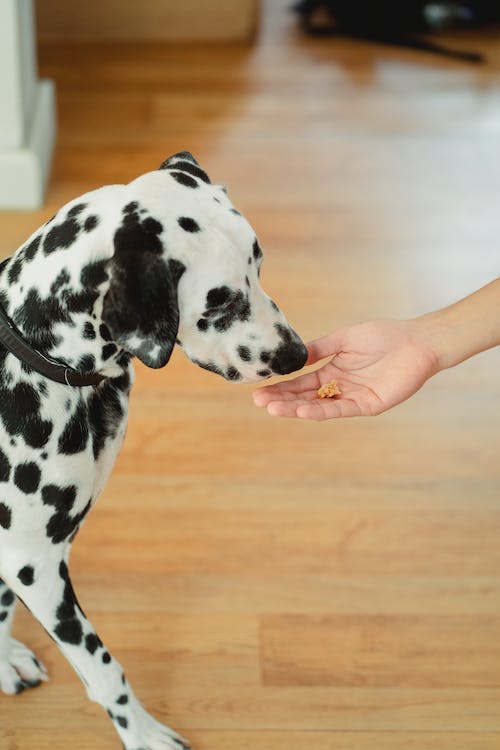
Peanut Butter Dog Treats
Almost all dogs love the creamy and sweet taste of peanut butter. If your dog is a fan of it, give these treats by Eileen Anderson a whirl!
Treat Ingredients:
- 2 eggs, beaten
- 2 tablespoons canola oil
- cup peanut butter powder
- cup white flour
- cup tapioca flour
- cup water
Baking Directions:
- Preheat oven to 350F.
- Mix the ingredients until smooth.
- Pour the mixture into the pan.
- Bake for 12 minutes or until the treats are soft but still drawing away from the side of the pan.
- Once cooled, stretch the pan and dump the treats out.
Cheese and Sardine Pyramid Pan Dog Treats
Looking for a protein-packed treat for your pup? If so, this cheese and sardine dog treat is the answer.
Treat Ingredients:
* 1 can of sardines
* 2 eggs
* 150 grams of grated Parmesan cheese
* A handful of roasted vegetables
* 75 grams of tapioca flour (or plain flour)
* Water
Baking Directions:
1. Preheat oven to 320F.
2. Blend all the ingredients in a blender to make a thick batter. Add water as needed to make it thicker.
3. Smooth the mixture over the baking mat and bake for about 15 minutes or until crispy.
4. Once cooled, cut into small pieces.
Cheddar-Apple Dog Biscuits
This classic one is from Martha Stewart and is a combination of cheddar and apple.
Treat Ingredients:
- 2 cups barley flour
- cup old-fashioned oatmeal
- 1/3 cup shredded cheddar cheese
- 1/4 cup grated Parmesan cheese
- 1/3 cup unsweetened applesauce
- 2 tablespoons olive oil
Baking Directions:
- Preheat oven to 350F. Line a baking sheet with a nonstick baking mat or parchment paper. Set aside.
- In a large bowl, mix together all ingredients and about 3 tablespoons of water to form a dough. Roll out the mixture between two sheets of plastic wrap to -inch thick. Remove plastic wrap and cut out biscuits with a 3 -inch bone-shaped cookie cutter. Re-roll scraps and continue cutting out biscuits.
- Space biscuits 1 inch apart on a prepared baking sheet. Bake for 30 minutes until nicely browned and firm.
- Transfer biscuits to a wire rack. Turn off the oven and place the biscuits on a wire rack in the oven overnight. Remove from the oven and store in an airtight container for up to two weeks.
We think your pup will love these tricks, which are all healthy sources of nutrition. As mentioned earlier, always check with your veterinarian before feeding your dog anything new.
-
Five of the Newest Cool Dog Breeds
From time to time, The American Kennel Club (AKC) adds new breeds of dogs to its registry. Being added to their list as a new breed is not something that happens with ease. The American Kennel Club has a rigorous screening process with extremely strict eligibility requirements in order for a dog to be recognized as a new, pure breed. These requirements include a national breed club with at least one hundred members and a population of third-generation dogs numbering at least three hundred. That is not easy to find. The dogs must also be found in at least twenty states in the U.S. To demonstrate how selective this process is, there have only been fifteen new breeds added to this registry since 2015. We rounded up five of these new breeds registered in the last five years to help you get more familiar with them.
Barbet
Initially registered in 2020, Barbet Dog is one of the AKC’s most recent additions. The Barbet has been shown off in French artwork that dates back as far as the early 16th century. This breed gets its name from the French word “barbe,” which means “beard,” and by looking at this pup you will understand why. The Barbet Dog is a rare dog breed, with a long coat similar to a Poodle, that consists of thick fur that transitions into tight curls. The Barbet is a very loyal and smart breed of dog that has an appearance as unique as its personality.
Azawakh
The Azawakh originated in West Africa and is a tall and slender dog. Although this breed has been around for a very long time, it wasn’t listed on the registry until 2019. This dog was originally developed to be a hunting dog. The Azawakh is a very rare breed and consequently, a very expensive breed. They have a similar, but not identical, appearance of a greyhound and are very athletic. Today’s Azawakh is still commonly used as sighthounds. The Azawakh does make a great pet and tends to be happy when his family is happy.
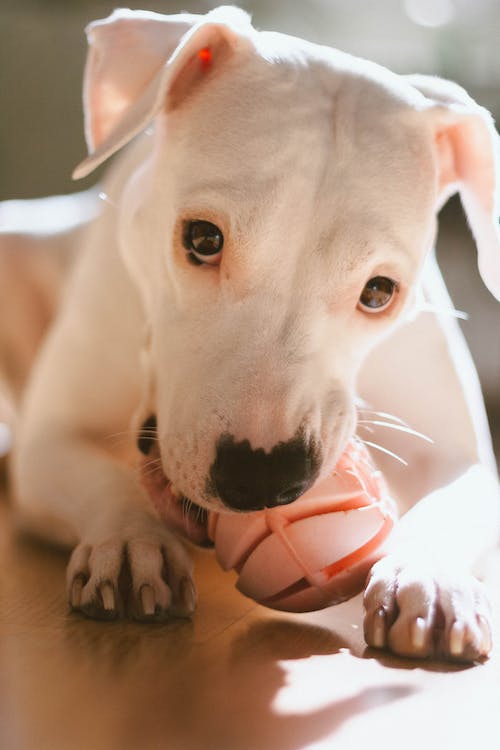
Dogo Argentino
The Dogo Argentino is a strong and muscular dog which was developed in Argentina for hunting large game. This rare breed, which was initially registered in 2020, is also very expensive. The Dogo Argentino is a strong looking and focused dog that has a very alert mind and a strong will. They are known for their loyalty and protective personalities. Despite their somewhat intimidating appearance, they are not known to be aggressive dogs. This breed does make a good family pet if you are able to find one.
American Hairless Terrier Dog
Despite their name, the American Hairless Terrier can be found in both hairless and coated varieties. This breed descended from a single Rat Terrier that was selectively bred for its hairlessness qualities. In 2016 the American Hairless Terrier dog breed was officially recognized. This breed is known to be outgoing, energetic, curious, and loyal. They are also very good at hunting small rodents. They make great family pets and are not known to excessively shed.
Nederlandse Kooikerhondjie Dog
The Nederlandse Kooikerhondjie was originally bred in the Netherlands to serve as a duck decoy dog. They were very good at luring fowl to their doom into “Eendenkooi,” which is a man-made pond trapping cage. Their Dutch name translates to “small cager dog,” and their unique tails helped entice ducks into these areas. Despite the Nederlandse Kooikerhondjie being very popular in the Netherlands for centuries, they were not registered with the AKC until 2018. This is a quality breed of dog that does well in families of all dynamics.
-
Top 8 Dog Breeds in the USA
Did you know that there are 339 breeds of dog on Earth? That’s a lot dogs! Each dog breed comes with very distinct traits. Besides physical attributes each has its own personality, skill, and demeanor. Although every dog is special, some are just more “pupular” than others. Below is a list of the top ten dog breeds in the United States and a little information about each dog.
Ranking #1 – Labrador Retriever
For over thirty straight years, the Labrador Retriever has been the most popular breed of dog in the United States. This pup is not only as handsome as they come, but has a personality to match. They are kid friendly and mom approved dogs that are always happy to see their family. They do great with other pets in the house and do not require excessive amounts of work.
Ranking #2 – Goldendoodle
The Goldendoodle’s popularity continues to take off much thanks to her sweet and playful personality and very approachable demeanor. This breed has a lot to offer and is a joy to be around. They enjoy playing, do great with children and are not known to be aggressive. The Goldendoodle is also a very attractive dog who cleans up well!
Ranking #3 – Golden Retriever
The Golden Retriever is not only a very smart breed of dog but a very loving and loyal breed. They are family friendly dogs who easily train and who remain very loyal. This breed is known for its companionship and simply enjoys being around his family. For families that are active, this pup is able to keep up and looks forward to making his family happy.
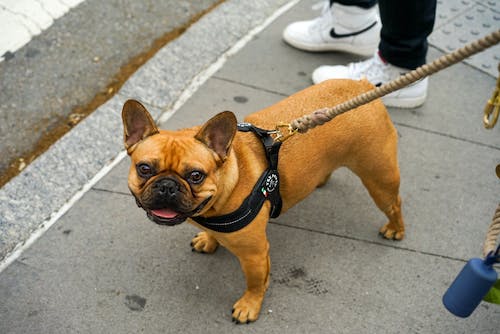
Ranking # 4 – French Bulldog
The French Bulldog is the perfect combination between adorable and lazy! This breed enjoys the company of his family and other pets. They are also mild mannered which allows for them to interact well with younger children. They enjoy taking naps and being close to their family. For those who want a good-looking pup without having to invest a lot of time in grooming, this should be one to consider.
Ranking #5 – Labradoodle
What do you get when you mix a Labrador Retriever and a Poodle? The Labradoodle. This very attractive dog is also very smart. They make amazing family pets and enjoy being the center of your attention. They are also social dogs who enjoy the company of other pets in the home. If a smart and good-looking pup is what you are searching for, this breed should be considered.
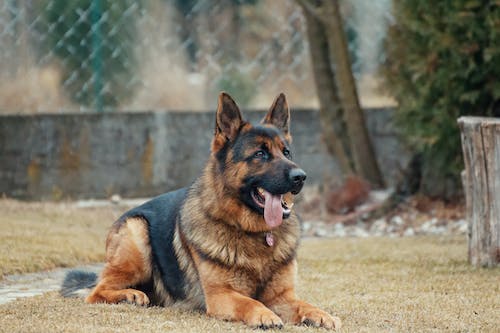
Ranking #6 – German Shepherd
The German Shepherd is quality pup who is known to be loyal, smart and protective. Despite being protective, they can also be very gentle and caring. They enjoy staying busy and they do best with families who enjoy spending time outdoors. Thanks to their intelligence and physical attributes, this breed is also used in law enforcement and the military.
Ranking #7 – Shih Tzu
The Shih Tzu is an elegant dog who is not afraid to get her paws dirty. Despite having a luxurious coat and pretty features, she loves to play and play hard. This breed is very popular and has been for years. If you are looking for a gentle lapdog who is ready for a game of tug of war, the Shih Tzu should be considered.

Ranking #8 – Chihuahua
The Chihuahua is a small yet feisty dog that doesn’t back down from anyone. These pups are also very loving and have caring personalities. They enjoy spending time both indoors and outdoors with family and have been a family favorite for generations in the United States. This breed does well for those who are first time dog owners because they are low maintenance and relatively easy to care for.
-
Twenty Awesome and Interesting Dog Facts — You’ll “Dig” Them!
We love dogs as much as you do and although we may be a tad biased, we never get tired of learning more about them! We are sure you will find some of these dog facts interesting so we will share. How many of these facts did you know?
1. The most “pupular” dog in the United States is the Labrador Retriever and has been for more than thirty straight years.
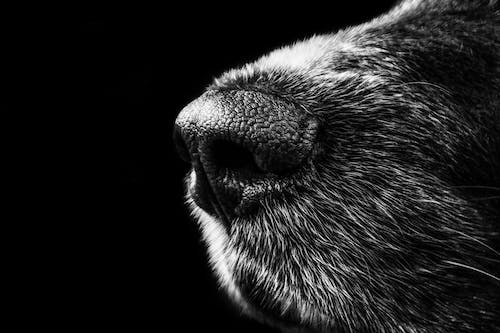
2. Your pup’s nose print is extremely unique, very much like a person’s fingerprint.
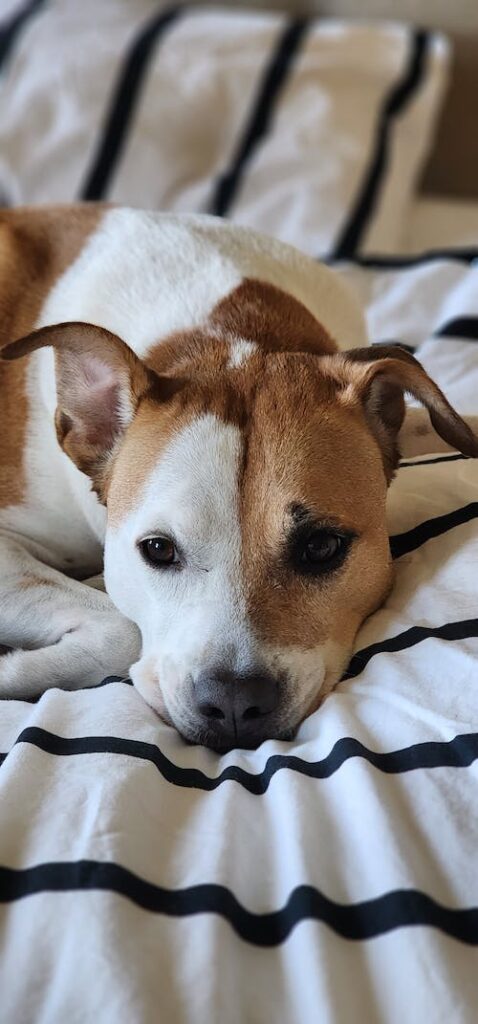
3. Nearly half of US dog owners allow their fur-legged friend to sleep in bed with them.
4. A recent study determined that senior dogs dream more than younger dogs.
5. Three out of four people who send a holiday greeting card sign the name on their dog on it.
6. A dog’s sense of smell is absolutely incredible. To put this into perspective, a human’s nose has approximately five million receptors. Your pup’s nose has between 250-300 million receptors!
7.The famous Rin Tin Tin, who was a German Shepherd, was nominated for an Academy Award.
8. Scientists discovered that a dogs’ noses can sense thermal radiation, (heat) which is why blind or deaf dogs are still capable of hunting.
9. The Beegle has been a family favorite dog for almost ninety years. In fact, it is the only breed that was among the five most popular breeds in 1934 to date.
10. Have you ever watched someone yawn and then yawned yourself? The same thing happens to dogs. Give it try next time you are getting tired and watch what you pup does!
11. Have you ever watched your dog curl up into a ball when they go to sleep? This is a natural way to protect themselves while asleep. This position allows them to be less vulnerable.
12. The Basenji dog breed can yodel!
13. The Australian Shepherd is not Australian. It was actually first bred in the United States.
14. Although many believe the ever-popular Labrador Retriever was originally bred in the United States, its roots are from Newfoundland.
15. Dogs are good for your health. Did you know that a human’s blood pressure tends to actually go down while petting a dog? (As does the dog’s!)
16. The United States has more pet dogs than any other country in the world. 75 million!

17. A “Beagler” is the name of a person who hunts with aBeagle.
18. Many believe that dogs are colorblind. They actually are able to detect blue and yellow.
19. Did you know that all puppies are born deaf?
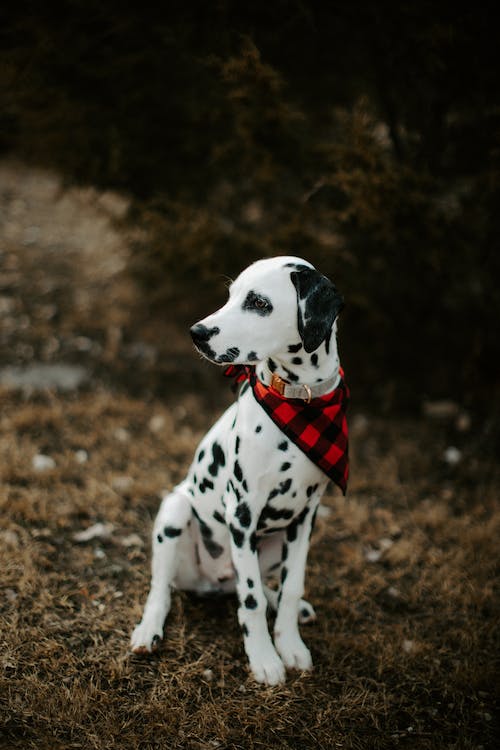
20. The black spots on Dalmatians actually develop as they mature. These puppies are generally born all white.
No matter which way you spin it, dog are amazing creatures that play a big role in our life. They provide us with love, companionship, and loyalty. Despite these facts being amazing, none of them compare to how amazing our fur-legged friends are to us!
-
Simple Life Hacks for Dog Owners
Below is a list of our favorite at-home dog hacks for dog owners. These tips and tricks will help you save time and are also pretty neat to try! They range from cleaning up loose dog hair to easy ways to check for fleas.
Dryer Sheets Pick up Dog Hair
Looking for an easy way to clean up dog hair? Use dryer sheets! They pick up loose dog hair with ease. Simply rub a dryer sheet over your furniture or wherever else pet hair collects and watch it disappear! Dryer sheets will allow for the hair to cling which makes this routine chore quick and easy to accomplish.

Use Baking Soda to Clean up Pet Urine
Every dog will eventually do it. When your dog pees on the carpet sprinkle some baking soda on the spot and allow it to sit for twenty to thirty minutes. The baking soda will absorb the liquid and help to remove the odor. Once dried simply vacuum it up! Depending on how saturated the carpet is, a second round may be needed which should do the trick.
Check for Fleas by Giving Your Dog the White Towel Test
Do you suspect that your pup has fleas? Or do you just want to check and make sure he doesn’t? Have your dog lay on a white towel while you examine & brush their fur. The white towel will make it easy to see any loose flea dirt that falls from your dog. Although these critters are very small, they will be able to be seen on a white or very light-colored towel.
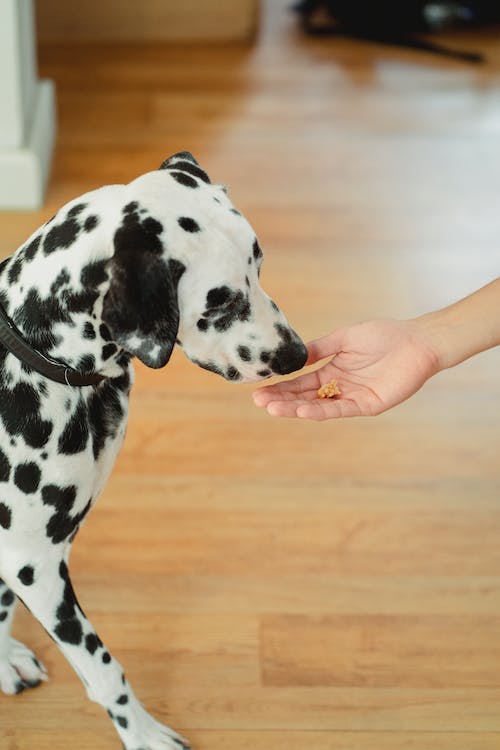
Make Your Own DIY Pill Pockets with Peanut Butter, Milk & Flour
One of the most popular life hacks for dog owners was finding a way to get their dog to swallow pills. If you’re having a difficult time getting your dog to swallow pills consider making your owntreat by mixing peanut butter, a dribble of milk, and coating it flour. Form each treat into a small round shape the size of your thumb nail. This will keep the pill secured inside the treat assuring your fur-legged friend takes his medicine.
Soften Up Dry Food Using Warm Water
If your pup has a hard time eating his kibble, consider mixing a little warm water over the food first. This will soften the kibble and allow your pup to enjoy his meal. This especially helpful for dogs who may have sensitive teeth.
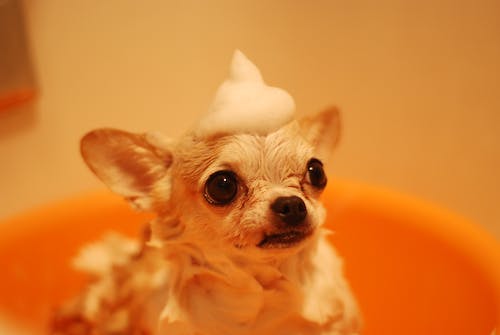
Skunk Spray? No Problem.
If your dog was sprayed by a skunk the odor can be overwhelming and difficult to get rid of. One of the best ways to combat this unpleasant odor is by using pet soap, peroxide, and baking soda. These ingredients will help to remove the odor from your dog. At times, two or more rounds of cleaning your dog may be needed. Always use caution around your pup’s eyes when washing him, especially with the soap and peroxide.
Use Flour, Cornstarch or Baking Soda to Stop Your Dogs Nail from Bleeding
It happens to the best of us. We accidentally trim our pup’s nails too short and they begin to bleed. Use a homemade mixture of flour, cornstarch or baking soda with water until it’s a thick paste. Once the past forms apply it to the injured nail with moderate pressure for a few minutes. This will help clot the area that is bleeding.
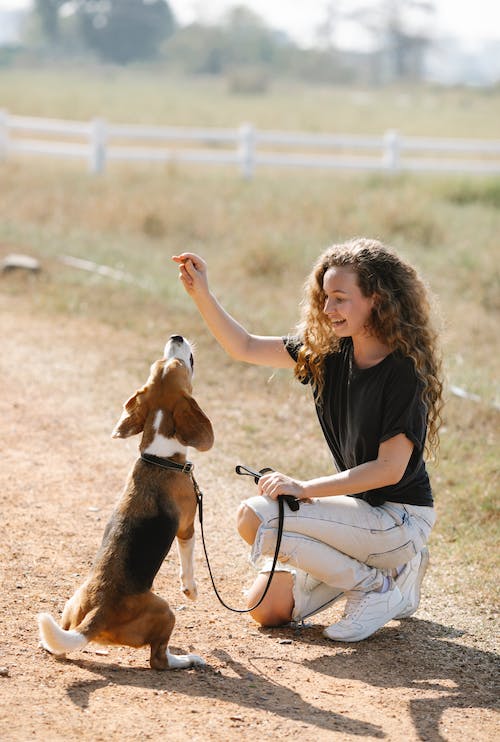
Make Training More Fun by Alternating the Rewards
Rather than just giving praise for a new trick, add some tasty treats to the mix. When your pup follows the rules or is in the process of potty training, a small treat can go a long way. Alternating the types of treats will help keep your pup’s attention. This is a form of positive reinforcement and a great way to keep you fur-legged friend proud of his accomplishments.
-
Longest Living Dog Breeds — Which are They and Ways to Achieve a Longer Life
The average life expectancy of a dog varies based on many different things. Variables such as having a proper diet, remaining at a healthy weight, and routine veterinarian wellness checks do come into play. Despite all of these things, some dog breeds in general, tend to live longer than others. Below we compiled a list of the top five dogs breeds that have the longest average life expectancy.
New Guinea Singing Dog
The New Guinea Singing Dogs, also referred to as NGSD, are native to the Highlands of Papua New Guinea. These free-roaming dogs have evolved naturally on the island over thousands of years and were not discovered by scientists until about 1950. They have an extremely long average lifespan of about seventeen years.
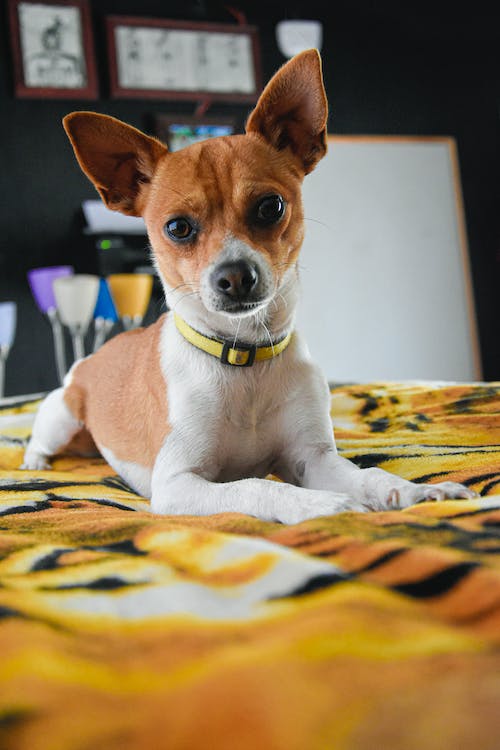
Chihuahua
The Chihuahua is the smallest recognized dog breed, named for the Mexican state of Chihuahua, where it was first noted in the mid-19th century. It is believed that the Chihuahua is thought to derived from the Techichi, a small dog kept by the Toltec people of Mexico as long ago as the 9th century. This breed of dog has an average lifespan of about seventeen years.
Toy Poodle
The Toy Poodle was originally bred in the early 20th century as a companion dog. This breed is known for its loyalty and intelligence. The poodle was recognized by the American Kennel Club in 1886 and has been a family favorite for generations. This breed has an average lifespan of about sixteen years.
Jack Russell Terrier
The Jack Russell Terrier was originally developed in southern England during in the mid-1800s by Parson John Russell. The intentions were to create a working terrier who would hunt with hounds, bolting foxes from their dens so the hounds could chase them. This family pup has an average life expectancy of sixteen years.
Cockapoo
The Cockapoo was first created in the 1960s, when a breeder accidentally combined the genetic material of a Cocker Spaniel and a Poodle. This breed has since taken off in popularity and adored by many families around the world. His long average life expectancy of sixteen years is much thanks to his Poodle parent.
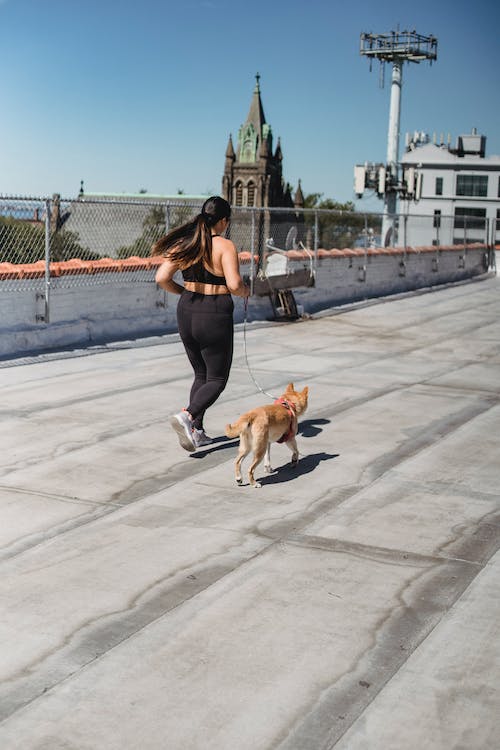
Five Basic Tip to Keep Your Dog Healthy
1- Feed Your Dog a Healthy and Balanced Diet — Always read the ingredients of their food. It is also important to feed your dog the proper amount of food. Variables such as the size of your dog, his activity level, and age must be considered. Feeding your dog too much will result in weight issues as feeding him too little will result in nutrition issues.
2- Dental Care — Routine teeth cleaning is very important. This is not always easy, but with practice this task becomes second nature in time.
3- Keep Your Dog Active, But Don’t Overdo It — Most dogs do well with about thirty minutes of physical exercise every day. It is important to make sure you keep an eye on your pup while exercising to make sure he is not overdoing it.
4- Provide Mental Enrichment and Stimulation — Play with your dog. Human interaction which includes talking to him will help to stimulate his mind. One-on-one playtime vs just allowing him to run around the yard alone is an example of this.
5- Regular Veterinary Visits — Do not wait for there to be a health concern. Routine wellness checks for your fur-legged friend are very important.
-
The BIG Dog
Despite their massive and intimidating appearance, large dog breeds are generally well-tempered, warm, loving, friendly and loyal animals! Throughout history, these dogs have been relied on for their strength which helped them to excel in guarding territory, protect livestock, and farm work. If a large dog is what you want than this is the blog for you. Below are the top six largest breeds of dogs and some information about them.
English Mastiff
At the top of our list of big dogs is the English Mastiff. This breed is recognized by the American Kennel Club. The biggest English Mastiff on record is named Aicama Zorba and broke the scale at 343 pounds. Typically, however, male English Mastiffs weigh 160 to 230 pounds while female English Mastiffs weigh 120 to 170 pounds. These dogs also stand about 30 inches tall at the shoulder, with females being slightly shorter.
Boerboels
The Boerboel generally weighs between 150 and 220 pounds, with no difference given between females and males. Farmers in South Africa began using this breed after initially developing them to hunt leopards and baboons. This dog is a very large and powerful dog and is known to be somewhat aggressive, so good socialization training at a young age is needed.

Saint Bernard
Saint Bernard dogs are large, strong and dominant in size. Male Saint Bernards typically weigh in between 140 and 180 pounds while female Saint Bernards tend to weigh between 120 and 140 pounds. Most Saint Bernards stand just under thirty inches tall at full maturity. This breed was developed to help rescue Alpine mountaineers. The face of a Saint Bernard has a distinct appearance with a wrinkled brow and short muzzle.
Great Dane
The Great Dane is another large breed of dog. Male Great Danes tend to weigh in between 140 and 175 pounds. Female Great Danes generally check in between 110 and 140 pounds. The largest Great Dane in the record books was named Zeus. This gigantic dog stood nearly four feet tall and stood seven feet four inches high when on his back legs. This being almost two feet taller than the average man.
Leonbergers
According to the American Kennel Club, male Leonbergers weigh between 110 and 170 pounds. Female Leonbergers generally weigh between 90 and 140 pounds. Both male and female Leonbergers stand about 30 inches tall at maturity. The Leonbergers has a unique lion-like mane around its neck and chest which magnifies its large appearance. Water rescue teams often use this breed because of their water-resistant coat. Many also deploy this breed to herd animals and as watchdogs because of their size.
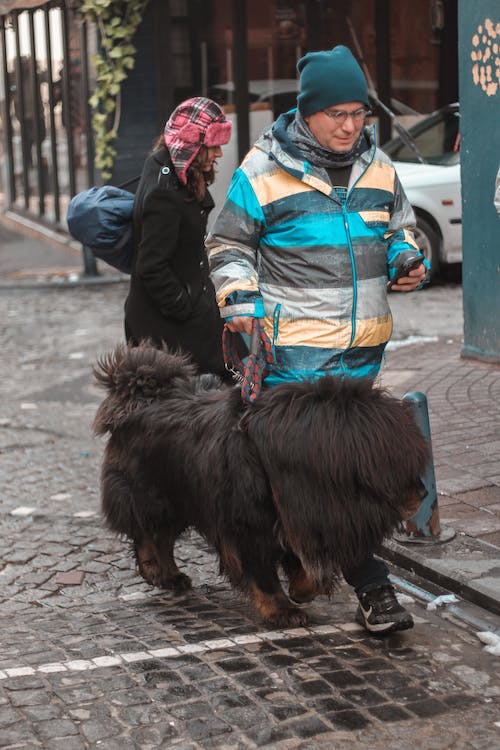
Tibetan Mastiffs
Tibetan Mastiffs are large and solid dogs. Male Tibetan Mastiffs weigh between 90 and 150 pounds. Female Tibetan Mastiffs weigh between 70 and 120 pounds. They stand about two feet tall at maturity and are known to make an excellent watchdog. If a large dog is what you are looking for this is definitely a breed to consider.
Anatolian Shepherd
Anatolian Shepherds were initially developed in the Kangal region of Turkey to guard and protect livestock. Although this breed is large and strong and protective, they tend to be very gentle around their family. Male Anatolian Shepherds weigh between 110 and 150 pounds while female Anatolian Shepherds weigh between 80 and 120 pounds. They stand about thirty inches tall at maturity.
-
Top Ways to Keep Your Pup Happy
We love our puppies, and so do you! Nothing will stop us from doing things for them to make them feel happy and loved. Below are some ideas of ways that you can improve their life, and they are much easier than you may think!
Boost Up the Exercise Routine!
Our pups love being active, especially with their family. A jog in the park or a walk through the neighborhood will get your pup’s heart beating and tail wagging. Some parks even offer secured off-leash areas, which is a great place for a game of fetch. Regardless of what you do, keeping your fur-legged friend active and well-exercised is a great way to keep them happy.

Mental Stimulation
Mental stimulation for your pup is a great way to fight boredom and stay mentally active. Taking your dog to new places and on new adventures is a great way to accomplish this. Instead of just walking your dog for exercise, try playing games that require them to follow commands. This is a good way to keep their mind sharp and happy.
Positive Reinforcement
When training your pup be sure to use positive reinforcement techniques. Your dog wants to make you happy and is generally happy when you are. While training him, be sure to use the same words when they accomplish an act correctly, followed by an extra pat on the back. Your dog can sense the tone in your voice, so using a consistent and upbeat voice when he does good will allow him to sense your happiness and feel the same way.
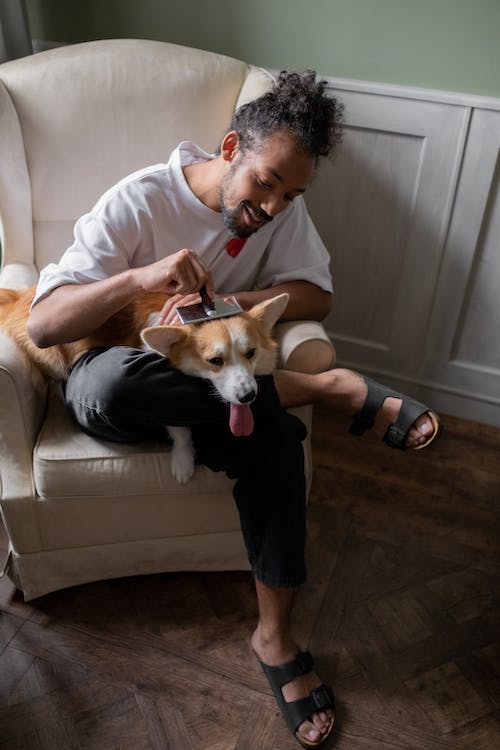
Who doesn’t like a good massage? Well, your pup loves them too! Test out different massage techniques for your pup, and when you see one of his back legs twitching, you found the right one! This will allow you and your pup to bond while promoting relaxation. A good brushing of your dog will also accomplish similar results and make him look good too!
Let Them Relax
Many dog owners find it more convenient to keep their pup’s collar on day and night. Although this will save you time, collars can cause discomfort if left on too long. Consider removing your pup’s collar in the evening before bed so he can relax. A relaxed pup is a happy pup!
Feed Them Well
Properly fueling your pup has many advantages. For one, their overall health. A properly fed dog will look and feel better than a dog that is being fed low-quality dog food. Long-term health also greatly depends on the quality of his food. A treat here and there and fine but feeding your dog twice a day in twelve-hour intervals tends to keep their energy levels balanced.
Grooming is Good
Every dog needs to be groomed. Some breeds require more work than others based on their coats, etc. Daily brushing of your pup is very important as it will prevent stubborn knots and matting from forming. Not only will your dog look better being groomed, but he will feel much better too.
Pay Attention
Your dog seeks your undivided attention. Regardless of how busy your day is, be sure to pay your pup quality attention. That can be lying down together, petting while talking to him, or even teaching him a new trick. Your one-on-one attention with your dog is very important. This will allow him to feel loved and allow your bond to be even stronger.
No matter how you keep your dog happy, know that he relies on you and loves your presence. Taking the time each and every day to show your fur-legged friend love is good for his health and will allow him to know he’s special.
-
Which Dogs Shed the Least?
Many of us believe that owning a dog and dealing with shedding goes hand in hand. And in many cases that is the truth. However, there are dog breeds that shed very little to none at all. If you are looking for a low shedding or no shedding dog, this article is for you. We will go over a list of not only great family dogs, but dogs that are easy to care for and are not known for excessive shedding.
Bedlington Terrier The Bedlington Terrier requires some grooming, but they don’t shed. This breed is a gentle and caring family dog that makes a great fit into most families. They are not hard to care for and quickly bond with their family. The Bedlington Terrier is certainly a top-notch dog that will win your heart and lap in no time.
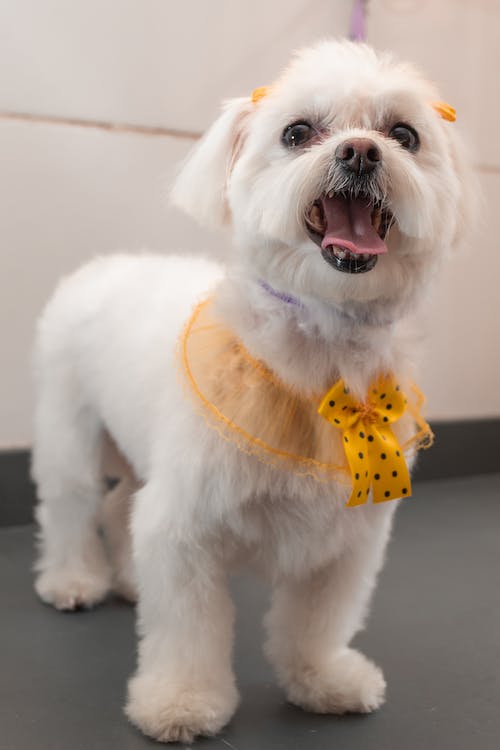
Bichon Frise
The Bichon Frise is best described as being a happy, social, and energetic dog. The Bichon Frise does need routine grooming to maintain their clean white coats which grow, not shed. Due to this, this breed has less dander, which generally makes this pup a good dog for allergy sufferers. Between not shedding and being so lovable, the Bichon Frise is a highly recommended family dog.
Brussels Griffon
The Brussels Griffon is an all-around fun and happy dog. The rough-coated version of this breed does not shed and is easy to groom. They are low maintenance pups that have very loyal and outgoing personalities. They do well with children and other pets inside the home.
Kerry Blue Terrier
Another top choice for those looking for a non-shedding dog is the Kerry Blue Terrier. This breed is a wise choice for folks looking for non-shedding and somewhat non-allergenic dogs. This breed is known for being affectionate, playful, and all-around fun to be around. They make tremendous family pets and are relatively easy to care for.
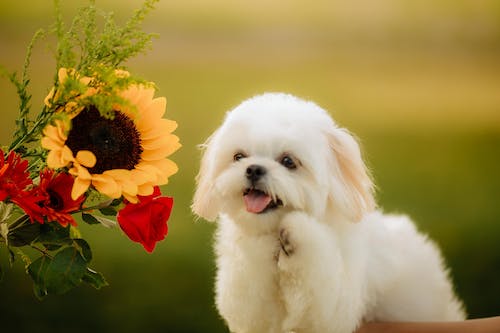
Maltese
The Maltese is a small, easy-going, and charming dog that has a single white silky coat. Basic routine care is needed in keeping this pup looking its best but is overall is a simple dog. They are considered low-shedding dogs which will allow for more playtime than vacuuming time. The Maltese has a long history of making a great pet and is sure to win your heart in no time at all.
Soft-Coated Wheaten Terrier
The Soft-Coated Wheaten Terrier is a medium sized dog that has a soft and wavy coat that requires basic care. This breed is considered to be a low-shedding dog which means a lot less dander. The Soft-Coated Wheaten Terrier makes a great family pet thanks to its warm and approachable demeanor and is known to quickly bond with its family.
Barbet
The Barbet originated in France and has become very popular in the United States over the last few years. This breed has a very tightly-curled coat which is non-shedding. They are very friendly dogs that tend to be loyal and loving to their families. The Barbet will generally quickly form a strong bond with you and your family. They also have eager to please personalities and enjoy showing off.
Regardless whichever fur-legged friend wins your heart, you have made a great decision. Dogs (high, medium, low, or no shedders) offer amazing companionship and normally offer years of happiness. All dogs will require basic care to look and feel their best and by taking the time to select a dog that best fits what you are able to provide it, will allow you and your new best friend to be happy and content.
-
The Top Five Dogs for Families That Have Children
Many parents ask which breed of dog would be the best for their family. Kids love dogs and most dogs love kids, but there are some dogs that generally do better around children than others. You have to admit, kids are curious and at times a little rough which is why having a dog who’s tolerable around them is important. Other great qualities in a dog that will be around children include low to no aggression, not overly powerful as to accidently hurt your child while playing, and a warm and loving demeanor. You also do not want a breed of dog that doesn’t want to be “bothered” because many kids just want to play, play, and play some more! If you are considering a family pet and you have children this blog is for you. Below you will find our pick of the top five dog breeds that do great around children.
Labrador Retriever
Year after year after year the Labrador Retriever ranks the most “pupular” dog in the United States. This breed is simply amazing and ranks number one in our kid friendly and mom approved list of dogs. They are loving, caring, social, and have very approachable demeanors. They love your attention and are gentle around children.
Breed Assessment Traits and Qualities:
- Personality:Friendly, gentle and playful
- Energy Level:Moderately active
- Good with Children:Very
- Good with Other Dogs:Very
- Shedding:Moderate
- Grooming:Daily brushing
- Trainability:With ease
- Height:21 to 25 inches tall at maturity
- Weight:55 to 80 pounds at maturity
- Life Expectancy:10-12 years
- Barking Level:Average

French Bulldog
The French Bulldog is at the top of our list for many reasons. They are a very gentle and affectionate breed of dog that does exceptionally well with children. They are patient and loving and enjoy to play. They are not overly energetic or pushy which is why they are safe for smaller children. They almost never show signs of aggression and enjoy both indoor and outdoor playtime. This breed continues to be very popular around the world and makes a great fit into almost any family.
Breed Assessment Traits and Qualities:
- Personality:Loving, playful, gentle, and smart.
- Energy Level:Lower than average
- Good with Children:Very
- Good with other Dogs:Very
- Shedding:Low
- Grooming:Two to three brushes a week
- Trainability:With ease
- Height:11-13 inches at maturity
- Weight:20-30 pounds at maturity
- Life Expectancy:10-12 years
- Barking Level:Low
Golden Retriever
The Golden Retriever was designed for those who wanted a medium-sized dog that would do well in wild-fowling, both upland game and waterfowl. Today’s Golden Retriever is a sought-after gorgeous dog that does well in families that have children and other pets in the home. They are very social and gentle dogs that have an easygoing and warm demeanor. They enjoy being close to their family and are great around children. They almost never show signs of aggression and are a pleasure to be around.
Breed Assessment Traits and Qualities:
- Personality:Smart, easy to get along with and caring
- Energy Level:Moderately active
- Good with Children:Very
- Good with other Dogs:Very
- Shedding:Average
- Grooming:Daily brushing
- Trainability:With ease
- Height:21 to 24 inches tall at maturity
- Weight:55 to 75 pounds at maturity
- Life Expectancy:10-12 years
- Barking Level:Average

Pug
The small but mighty Pug also ranks high on our list because of his playful, loving, and warm demeanor. This breed has a social and outgoing personality and packs a lot of energy in a small body. The Pug does great around children because of this and is not known to show aggression. Their tolerance level allows them to play well with children who are still learning how to be around dogs.
Breed Assessment Traits and Qualities:
- Personality:Outgoing, curious, and playful
- Energy Level:Moderately active
- Good with Children:Good
- Good with Other Dogs:Good
- Shedding:Routinely
- Grooming:Two to four times a week
- Trainability:Generally easy
- Height:10-13 inches tall at maturity
- Weight:14-18 pounds at maturity
- Life Expectancy:13-15 years
- Barking Level:Average
Collie
Collies are very smart and energetic dogs that love human interaction and outdoor activity time. They are gentle and patient around children and are not known to be at all aggressive. This breed has a very long history of making a marvelous family pet and is sure to win your heart too. Collies also tend to be able to adapt well with other dogs in the home.
Breed Assessment Traits and Qualities:
- Personality:Caring, alert and playful
- Energy Level:Very active
- Good with Children:Very
- Good with Other Dogs:Yes
- Shedding:Moderate
- Grooming:Two to four brushes a week
- Trainability:Easily trained
- Height:22-26 inches tall at maturity
- Weight:50-75 pounds at maturity
- Life Expectancy:12-14 years
- Barking Level:Moderate
-
Ways to Make the Holidays Safer for Pets
As the holidays approach we think about nice family dinners, festive music, and holiday cheer. It is a time of year like nothing else and there seems to be a unique peace in the air. What many dog owners do not realize is it is also a risky time of the year for our fur-legged friends. Not because Santa will scare them when he comes down the chimney, but because of very common items in our home that come out this month.
People food
Let’s start off by talking about food. During the holidays we often have get-togethers and share meals much larger than an average dinner. Many foods that we will enjoy should not be eaten by our fur-legged friends. Below is a list of foods that are the most dangerous for dogs to eat.
- Rich, fatty foods.
- Meats that have bones in them
- Onions and garlic
- Chocolate
- Alcoholic beverages
- Raisins/grapes
- Nuts
- Milk Products

Potpourri and Candles
Although potpourri and candles look and smell great, they can make your fur-legged friend sick should he use them as a treat. Candles are also a fire hazard should your dog knock one over that is lit. Always keep items such as these well out of your dog’s reach. If these items are on a counter or table take into consideration that your dog still may be able to reach them. Playing safe than sorry as to wear you leave these items is also recommended.
Holiday Plants and Flowers
A very popular item found during the holiday season is decorative plants such as holly and mistletoe. Many plants and flowers can cause your dog to become very sick if digested. Dogs are always curious to try a new “food” and certain items such as these can cause your dog harm. Be sure to place these items in an area that your dog is unable to reach. We often place flowers near a window for sunlight which is also an area your dog has access to.
Tinsel On Your Christmas Tree
Whiletinselisn’t “poisonous” per se,it’s extremely dangerous to your dog should he consume it. Swallowing tinsel can lead to internal issues as well as basic choking issues for your dog. Tinsel is generally shiny which catches your dog’s attention and may be too much for him to resist. Many dog owners do not even bring this item into their homes as a precaution. If you must decorate with tinsel, keep it in an area completely out of reach of your dog or you may be spending Christmas morning at the veterinarian, not unwrapping gifts from Santa!
Secure Your Christmas Tree
You can’t really blame this one on your pup. Afterall, they wake up one morning and magically there is a seven-foot pine tree in their living room! As beautiful as this tree looks, it does cause a safety hazard. Dogs are naturally attracted to trees and tend to want to hide under and behind them. It does not take much for a Christmas tree to topple over which could injure your pup or anyone near it when it falls. This can also result in damaging the decorations on the tree which can be very costly. By taking a few minutes to properly secure your tree can end up saving you a lot of problems in the end.
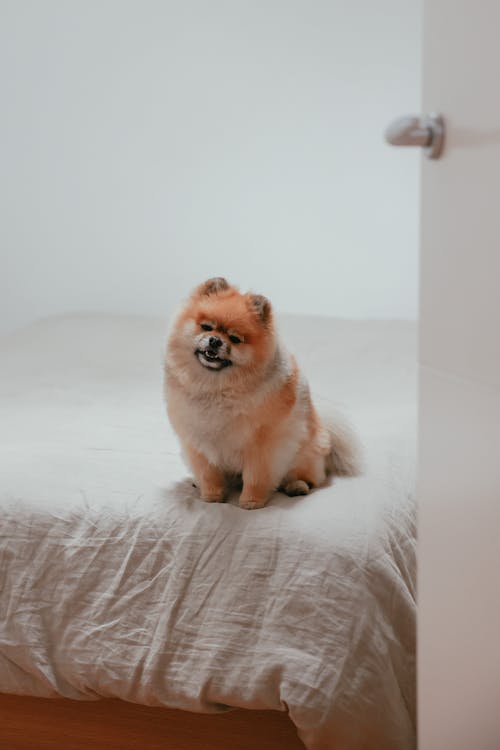
Safe Haven for Your Dog
If you intend to have a holiday party which involves a lot of people, consider putting your dog in a room dedicated just for him away from the commotion. The room should have water and food and you should periodically check on your pup. A soft blanket or dog bed would also be a nice fixture in the room while he hangs out there. Although some dogs want to party as much as grandma does, some tend to get quickly get scared of the noise and want to be left alone. You know your dog better than anyone and should determine this before the party begins. This is also a wise decision if your dog is a runner because the front door may be opened and closed dozens of times which would allow for him to escape.
-
What Dog Food Ingredients Should You Avoid?
You are what you eat. And that expression applies to our fur-legged friends too. Some dog food brands skimp out on the actual healthy ingredients (chicken, beef, etc.) and replace these proteins with fillers. Fillers do not add much nutritional value to what they are eating and, overall are not recommended. Current research is bringing to light that many of these unhealthy ingredients can trigger allergies in your dog as well.
What Ingredients Should You Avoid?
Butylated Hydroxyanisole, also known as BHA, is a chemical preservative found in many dog foods and treats. It is used to preserve fats and oils. The CDC lists this ingredient as a known carcinogen that has negative effects on the liver and kidneys of animals. Some countries actually banned this substance due to this. Although the effects might not be noticeable in small quantities, over a long period of time, feeding your dog food that has BHA in it can contribute to health issues.
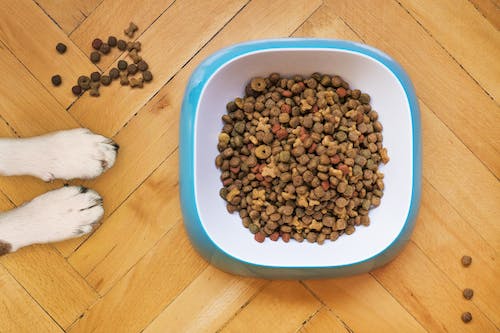
White Flour
White flour is usually used as a filler and binding agent in dog food. It is a bleached flour that contains little to no nutritional value. White flour has even proven to cause spikes in blood sugar. This means it may make your dog feel full, but not for a sustained period.
Unspecified Meat or “Meat Meal” With “unspecified” meat in your dog’s food, what it is can be a mystery and risky. These meat meals are usually low quality, leftover meats with minimal regulation and or control of quality. Although these products are in many dog foods, try to avoid them. At the very least, pick a dog food where the specific type of meat is listed.
Artificial Colors and Flavorings
Artificial coloring and flavors are added to dog foods to create a more appealing appearance and smell. They are usually listed specifically, and the most commonly found dyes in dog foods are Red 40, Blue 2, and Yellow 5 and 6. These artificial ingredients are simply unnecessary and have been linked to hyperactivity, hypersensitivity, and allergic reactions to foods.
MSG
MSG, or monosodium glutamate, is not usually listed on pet food ingredient lists. It is more often found in autolyzed yeast, hydrolyzed protein, calcium caseinate, protein isolate, texturized protein, natural flavors, hydrolyzed yeast, yeast extracts, soy extracts or concentrate, sodium caseinate, monopotassium glutamate, glutamate or glutamic acid, or disodium inosinate or guanylate. These ingredients are used to enhance the flavor of dog food but are not necessary.
Corn Syrup
Corn syrup is a concentrated sweetener that is derived from corn. It is inexpensive to produce and is often added to processed dog foods to add flavor without costing a lot of money. Corn syrup, like white flour, causes your dog’s blood sugar to spike, which is not healthy and known to cause health issues down the road.
Farmed Salmon
Farmed salmon refers to salmon that is grown inland in artificial habitats. These are not fish in the actual ocean, have never seen or been in the ocean, and are grown specifically to be harvested for food. If they are found in your dog’s food, they will be simply listed as salmon, salmon meal, or salmon oil. If the salmon in your dog’s food is wild-caught, it will be listed as so. Farmed salmon is not nearly as nutritious as wild-caught salmon.
Nitrates
Nitrates, more specifically sodium nitrite, is a common preservative found in dog foods. It is used to preserve meat products. This preservative, although currently deemed safe to be used in dog food, has been linked to a blood disorder called methemoglobin as well as cancer.
STPP
STPP, or sodium tripolyphosphate, is a common ingredient in laundry detergent that softens the water. In dog food, it is used as a preservative. Since it is an actual chemical that does not contain any nutritional value, it is best to avoid it in your dog’s food. Taking the time to shop for quality dog food will yield a better long-term health outlook for your dog. Just because an ingredient is approved for use in dog food does not always mean you should use it. Natural ingredients are always recommended and should be looked for.
-
Puppy Accidents and How to Clean Them
Accidents happen… All puppies, from time to time, don’t make it outside before they do their business. If your puppy, like most, has an accident indoors, don’t overstress. It is important, though, to realize that indoor puppy accidents can cause your carpet and furniture to smell or even be destroyed. The key is to cleanse the area as soon as possible. This is important for two reasons. The first is because the waste left on the carpet or furniture can absorb into the fibers which makes removing the odor very difficult. The second is because once these odors remain, regardless of how slight, your four-legged friend may return to the same area and relieve himself there again.
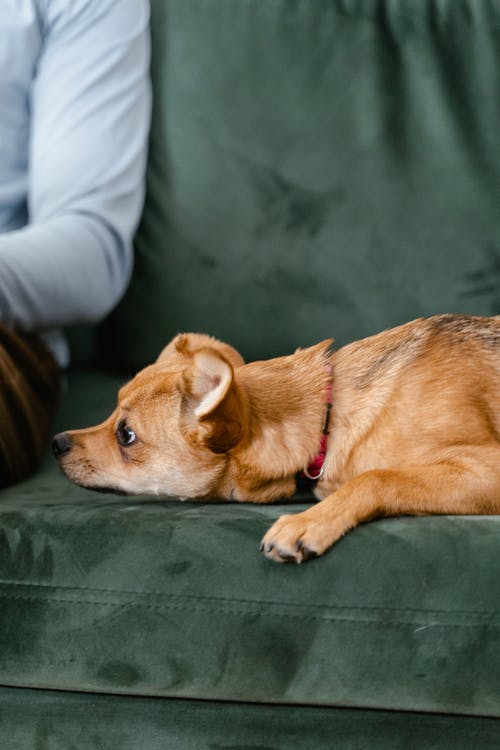
How to Prevent Indoor Accidents
Being consistent with your puppy’s potty-training routine is key. Also, providing your puppy with ample outdoor potty time is essential. For those who work all day, considering a daytime pet sitter to stop over and allow your puppy a potty break also will help the issue. Using positive reinforcement is always more effective than using discipline in this process.
How to Get Urine Odors Out of a Carpet
Dog urine gets absorbed into the carpet as an acid that causes damage to the carpet’s fibers. Upon the urine drying up, it results in an alkaline residue. If urine salts are not cleaned with a professional pet cleaning product, this may result in a foul urine smell building up over time. Absorbing the wet urine with a dry rag, followed by washing the infected area, will help to remove the urine and smell. At times, this process may need to be completed two or more times.
How to Get the Urine Smell Out of a Couch?
If your pup had an accident on your couch, professional cleaning products should be used to cleanse the area. After the couch is cleansed, keep your puppy away from it until the area is complete and the odor is completely gone. Dogs tend to remark the same spot over and over and detect this area by smelling where they previously went.
At Home Cleaning Products
Did you know that you can naturally clean pet stains and odors using commonly found items in your pantry? Ingredients such as baking soda, vinegar, hydrogen peroxide, vodka, orange, lemon, and salt to clean pet urine work well. You can neutralize and clean surfaces by using a combination of these products. The issue with using a synthetic cleaner on a carpet is that it can damage and remove its color and add unnecessary toxic chemicals to your home. By utilizing more natural ingredients, especially things like enzymatic cleaners with essential oils, pet owners can keep their homes safe from the buildup of harmful fumes and chemicals that can make their pets sick.
Before Using Any Cleaning Product
Before applying any cleaning solution, you should always test it on a small area of your rug or furniture to ensure it won’t do any damage. Once the ingredients demonstrate that they are working and not causing damage, be sure to cleanse the area with a copious amount of the product and thoroughly scrub the infected area. Dog urine can be very difficult to clean fully and, if not removed, can cause more issues down the road. Regardless of what products you use, all puppy owners need to remember that their puppies are still learning and want to make you happy. Being patient, using positive reinforcement, and taking the time to train your four-legged friend right will yield positive long-term results.
-
Type of Service Dogs
Service dogs are well-trained professional dogs that help to those who need them. Each service dog has a specific set of skills that require training and testing to master. Service dogs perform impressive tasks such as leading the blind, assisting with day-to-day tasks, and providing comfort and companionship. Actual service dogs are backed and protected by the Americans with Disabilities Act.
Some of the most common services provided by service dogs include:
* Guide Dogs
* Autism Service Dogs
* PTSD Service Dogs
* Hearing Dogs
* Medical Alert Dogs
* Diabetic Alert Dogs
* Seizure Response Dogs
* Allergy Detection Dogs
* Mobility Assistance Dogs
* Medical Alert DogsThere are other types of service dogs, and if you have a condition that is not listed above, you may still be able to apply for a service dog.
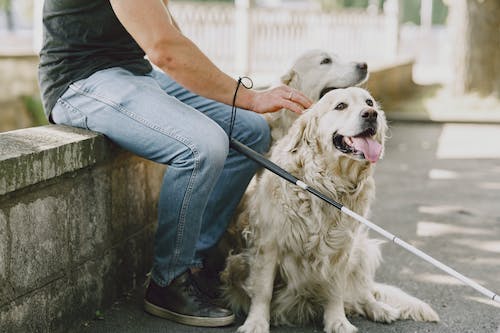
Common Breeds of Service Dogs
Although service dogs come in all shapes, sizes, and breeds, the following list of dog breeds tends to be the most common. These breeds generally have very caring and outgoing demeanors with outstanding personalities. They also tend to train with ease and enjoy companionship. Most service dogs show little to no signs of aggression and have very warm and approachable demeanors.
Labrador Retriever – A very smart and personable breed of dog that has a loving and outgoing personality.
German Shepherd – A loyal and alert dog who enjoys the company of his family. This breed loves outdoor activity time.
Golden Retriever – A loving and gentle breed of dog who is exceptional in all family shapes and sizes. This breed also does well with other pets in the home.
Poodle – This breed is considered the most intelligent breed of dog in existence. They train with ease and enjoy and thrive off of human interaction.
Bernese Mountain Dog – An alert and active dog that is known to quickly bond with his family. They train with ease and are eager to please.
Great Dane – A large and loving dog that is known for its loyalty and caring personality. They tend to make great service dogs, especially for those who suffer from PTSD and anxiety.
Saint Bernard – By nature, this breed is a service dog. They have a long history of helping mankind and generally have very protective and loyal personalities.
Pomeranian – Small and lovable. This breed of dog does well in smaller homes. This breed is patient and caring and very loyal to its family. They specialize in a variety of service dog tasks.
Boxer – This breed is alert and loyal and enjoys assisting his human counterpart. They are smart and agile dogs with great personalities.
Border Collie – A very loving and caring dog that tends to stick by your side. This breed is also smart, which makes training easy. They are eager to please and tend to be happy when you are. They also tend to do well in households that have children.
Is it Mandatory to Register Service Dogs?
No. Registering a service dog is not required in the United States under law, but it is suggested. Doing so it will help to eliminate any confusion or restrictions you may run into in the future. Unfortunately, there has been a rise in fake service dogs, which is why it is essential to make sure you and your dog are adequately protected. Properly being registered will make things easier. Many private businesses have rules against non-service animals entering their establishment, which is a primary reason to have your service dog registered.
Where Can You Register a Service Dog?
There are a few organizations that offer service dog registration. These organizations will require that you describe your disability and or need, what tasks your dog is capable of offering, and the specific training your dog completed. These options include websites such as Service Dog Certification, United States Dog Registry, and USA Service Dog Registration.
Service dogs have made a positive impact over the years and have validated the expression “man’s best friend.” Through proper training and care, the services that these amazing dogs are able to provide continue to get better and better. Doing the appropriate research before getting a service dog will help you find the best breed for your specific needs.
-
Dog Harnesses
Are you considering making the transition from a basic dog collar to a dog harness? Many people have made the switch because a harness offers more control of over a dog which is especially important on outdoor walks. Harnesses also prevent neck discomfort that standard dog collars cause. Despite dog harnesses being the best choice for our fur-legged friends, they must fit your dog properly in order to be most beneficial. In this blog, we will explain the importance of proper harness sizing for pups and help you determine your dog’s accurate harness measurements.
First, let’s review some of the primary benefits of a dog harness.
Less pulling on walks: A dog harness is positioned along the dog’s back and chest, which makes it more difficult for a dog to take his owner for a walk instead of his owner taking him for a walk. Unlike a typical dog collar that allows a dog to securely plant his feet on the ground, gain traction, and pull forward, a harness gives the dog’s handler more control of their entire body. This will prevent a dog from taking over on the walk and allow his handler better control.
Less pressure on the dog’s throat and neck: The design of a dog harness allows for the pressure points to be on his chest. This prevents your dog’s neck and throat area from being constricted, which is more comfortable and much safer than a standard dog collar. A dog harness is recommended even more so for dogs who suffer from disc conditions and arthritis.
Much better control of your dog: Some dogs can slip out of standard dog collars, which only offer one point of security around their necks. It is improbable for your pup to accidentally slip out of a properly fitted dog harness, even if your dog is a master of escape.
Basics Fitting a Dog Harness
As great as a dog harness is, it is only effective when it properly fits your dog. The harness must be secure against a dog’s body and should not allow for any slipping or rubbing against the skin. Harnesses that are too tight may cause discomfort for your pup. Harnesses that are too loose on your pup increase the risk of them slipping out of it and running off. This is why assuring the harness is placed properly over your dog is key.
The Two Finger Rule
When determining if your dog’s new harness is right for them, you should always follow the two-finger rule. This means that you should be able to place two fingers snuggly under the harness when it is secured. More than two fingers mean the harness is too loose. Less than two fingers mean the harness is too tight. This amount of slack allows for comfortable movement for your dog while also preventing him to be able to escape it.
Properly Measuring Your Dog for a Harness
Pet supply stores generally have a sizing chart for each product sold. This chart will provide measurements and specifications of each dog harness for sale. Comparing this size chart to your dog’s size is very important.
Measure Your Dog’s Neck Girth
You can use a flexible plastic measuring tape to measure your dog’s neck. Measure the area around where a collar would typically be placed. Remember to use the two-finger rule in this measurement, as some slack is necessary. Make a note of this measurement by writing it down.
Step 3: Measure Your Dog’s Chest Girth
Next, you will measure your dog’s chest girth by using the same measuring tape and measuring the widest portion of your dog’s rib cage. Be sure you measure around completely, with the end of the tape coming together on the top of the dog’s back. Make a note of this measurement by writing it down.
Step 4: Measure Your Dog’s Body Length
The last area measurement needed is your dog’s body length. Using the same measuring tape, measure your dog from his neck to the base of his tail. Certain dog harnesses require this measurement which is good to have just in case. Make a note of this measurement by writing it down.
After taking these measurements and writing them down, you will be able to compare them with the sizing chart for your harness of choice. It is also recommended to talk to staff at the pet supply store who can address any questions or concerns you may have before buying the harness.
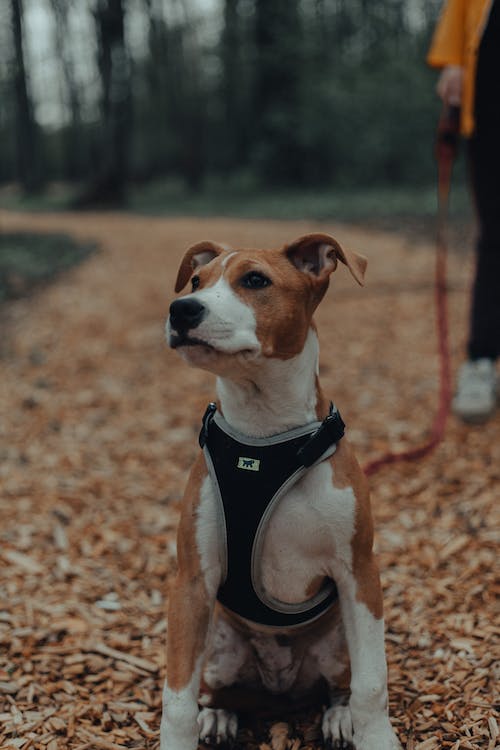
Getting Adjusted to Using a Dog Harness
Getting adjusted to using a dog harness (for you and your pup) is generally an easy transition. Many dog owners find that once they start using a harness for their dogs, daily walks become easier and more enjoyable. Taking the time to find the proper dog harness will yield years of safer, more comfortable, and more enjoyable walks.
-
Top Dog Training Collars
Training your dog is essential for many reasons and is something that all dog owners need to focus on, beginning when their dog is a puppy. A properly trained dog will be easier to live with and will help keep him and your family safe. Positive reinforcement training techniques tend to yield the best long-term results, and one of the tools many dog owners rely on is training collars. Training collars can assist in getting your dog comfortable with the feeling of wearing a collar and help gently correct habits and/or improper behavior. The question many dog owners ask is, what type of collar will my dog do best with?
What Types of Collars Are There?
Standard Dog Collar: A standard dog collar, also known as a buckle collar, is one of the most common types of training collars used. These collars are used on dogs of all shapes and sizes and are easy to put on and adjust. Although they are not as corrective as other dog collars, they are easily deployed and will prevent your dog from feeling choked while they are using them to walk with you.
Choke Collar: A choke collar is a very common training collar used to catch your dog’s attention when they are initially learning how to walk on a leash. This type of collar is designed to tighten when your dog pulls on the lead, which will cause a degree of discomfort until they stop pulling. After a few walks with this collar, your pup will learn to walk with you, not away from you.
Martingale Collar: A martingale collar is considered a choke collar; however, much more of a gentle one. These collars are basically a combination of a buckle collar and slip lead, as they have a second loop on the collar that will tighten as a dog pulls. The loop, however, will only allow the collar to tighten slightly, so it will not apply the same pressure on your dog as a routine choke collar or slip lead. The tightness applied to their neck is generally enough to gain their attention and compliance.
Prong Collar: A prong collar is used to control dogs that have a greater physical force and or pull. Generally, this type of collar is used on dogs who continue to pull or run and ignore the effects of a standard or choke collar. A prong collar consists of metal links that face inward on the collar, coming in contact with your dog’s neck. When the dog pulls or runs, pressure is applied by these prongs, which will move close together, creating a pinch around the dog’s neck. The pinch is generally enough to catch your dog’s attention and slow down or stop his excessive pulling. It should be noted that these collars should only be used by those who have experience using them. They are recommended only after other basic collars have proven ineffective.
Shock Collar: A shock collar is a training collar that delivers a light shock or vibration to the dog’s neck when the owner activates it. These collars come with a small wireless remote control that the owner holds, allowing them to send a signal to the collar when the dog is acting inappropriately. The goal behind this type of collar is to teach your dog that a certain behavior will result in an annoying and or uncomfortable sensation. If you are trying to teach your dog not to run after people, and when he does, he feels this uncomfortable sensation, he will correlate the behavior to it. In time the dog will typically stop the undesired behavior without even receiving the sensation.
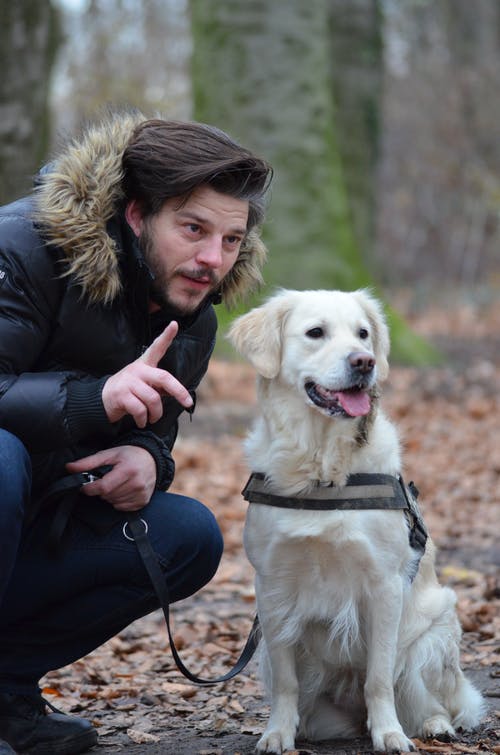
A Collar Is Just a Tool
Dog owners need to remember that a training collar is just a tool they have in helping to train their dogs. Proper dog training takes time and effort. In many instances, we are trying to teach our dogs certain things that are against their own instincts. Dogs naturally like to chase things and run free. Although collars, when utilized correctly, will help to train a dog, consistent positive reinforcement is very important. Some dog breeds tend to train more quickly than others and will require less strenuous training. Being patient, caring, and remembering that this takes time will help make the training process easier for you and your dog.
-
Your Dog’s Amazing Nose
No matter what breed of dog you have, there is one common quality they all share. Their incredible sense of smell! Their ability to pick up on even the faintest scents has allowed for their survival for hundreds if not thousands of years. It has also allowed them to be utilized to assist humankind in tracking and retrieving game, locating missing people, detecting diseases in people, and finding illegal substances, such as narcotics.
How Sensitive Is Their Nose?
Animal care specialists and dog owner, Jen Eleao, explained that a dog’s sense of smell is somewhere between 25,000 to 100,000 times more acute than ours. This is due to our fur-legged friends having up to 100 million sensory receptor sites in their nasal cavity compared to six million receptors in people. The area of the canine brain devoted to analyzing scents is about forty times larger than the equal part of the human brain. “Our dogs are full-blown scent detection machines,” Eleao explains, “which is why they are capable of tracking even the faintest scent for miles.”
How Their Scent Detection Works.
Unlike humans who inhale and exhale at different times, a sniffing dog’s nose is designed to allow air to travel in and out at the same time, creating a continuous circulation of air. By keeping a continuous flow of air entering their nose, they are capable of maintaining a steady track of what they are looking for. A dog’s nasal cavity is divided into two separate chambers and opens into two nostrils that move independently, and that can take in smells separately. As a dog sniffs a scent, particles and compounds are trapped in the nasal cavity while the dog’s scent receptors process them. Part of the inhaled air goes to olfactory analysis, and some of it goes to the lungs to breathe. As a dog exhales, fresh air enters the nose through the slits in their nose, which maintains a steady stream of air and odors flowing.
Best Scent Tracking Breeds
Although all dog breeds are scent specialists, some are better than others. As an example, Eleao explained, although any dog can track the scent of common foods, such as poultry, hound breed dogs have the overall best sense of smell and are able to track just about anything that gives off a scent. Hound dogs rely on their ears almost as much as they rely on their noses. As they smell the scent on the ground, their ears are used to move the air in front of their nose and essentially lift the scent. Smaller dogs such as the French Bulldog and Pug that have short faces may have compromised airways that could affect their overall sense of smell.
Frequently Asked Questions
Question: How Far Can A Dog Smell Something That Is Traveling Through The Air?
Answer: Generally, most dogs are able to detect scents in the air that originated several miles away. One study showed that some dogs could smell something (with the right airflow) more than ten miles away. A dog smelling something several miles away is comparable to a person smelling a juicy hamburger or chicken cutlet being grilled one block away.
Question: What Does It Mean When People Say Dog Smells In 3D?
Answer: The same way a human uses two eyes to obtain two different views on what they are looking at, which allows our brain to form a 3D image, dogs use both nostrils to create a 3D view of a scent. This allows a dog to determine precisely where objects are located that are giving off a scent.
Question: Are Dogs Used In The Medical Field To Detect Diseases?
Answer: Numerous studies have shown that trained dogs are able to detect a variety of diseases, including lung, breast, ovarian, bladder, and prostate cancers within the human body. There are current studies taking place to determine if dogs are also capable of detecting Covid-19.
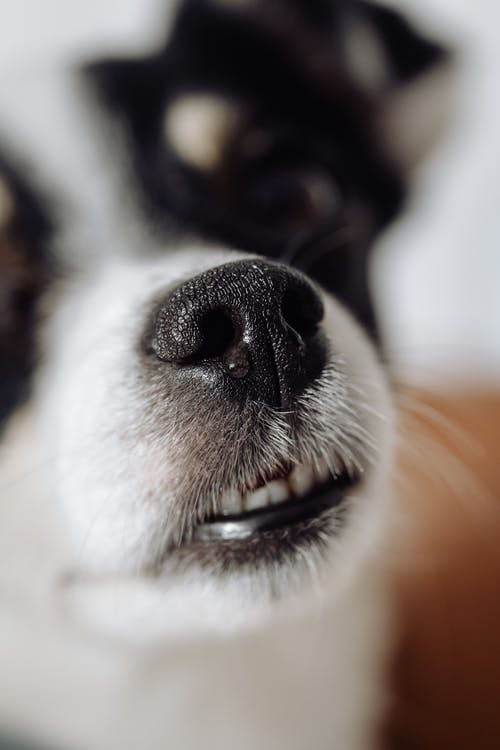
Why Are Dogs’ Noses Wet?
A dog’s nose contains special glands that secrete a layer of mucus in the inner lining of it. The wet lining creates particles in the air to stick to it, which allows the dog to not lose track of the scent.
-
How To Stop Your Fur-Legged Friend from Barking at Strangers
We love our dogs a lot as they provide us with a lot of joy, but excessive barking can be very difficult to handle, especially on a daily basis. Many dogs will naturally begin to bark when they see someone they do not recognize. Although this is a good thing in some instances, in most, it is unnecessary and annoying. The repeated sound of a barking dog will also eventually annoy neighbors and could land you in hot water with your local authorities. So how do you teach your dog not to bark at strangers?
Why do dogs bark at people they do not know?
First, let’s look at why dogs bark at people in general. The most common reasons are:
General excitement bark: Simply said, dogs are excited to see and interact with new people! Most dogs are very social creatures, and when approached by someone new, they are eager to meet and interact with them. To determine if the barking is excited-based, look at their tail. A highly energetic and wagging tail typically means a happy and excited dog.
Territorial bark: Many dogs are territorial of their home, property, and family. Some dogs view a stranger as someone who is not authorized to be at their home and or as a potential threat to the family living there. The territorial bark is used to warn the stranger to stay away. It is also used to alert the dog’s family that a possible intruder is approaching for safety.
Lack of socialization bark: Dogs that have not been raised in social environments tend not to know what to do when a new face is observed. Barking is a natural reaction in dogs, and this behavior may take place by default. Allow your dog to socialize with other people and pets, which will help him to better accept new people. Fear bark: Your dog may have just been alarmed! Even dogs that are properly socialized and who are not overly territorial can be alarmed and begin to bark. Dogs are designed, for the most part, to be alert and to guard. This can happen to even the most laidback pup, who will bark when scared.
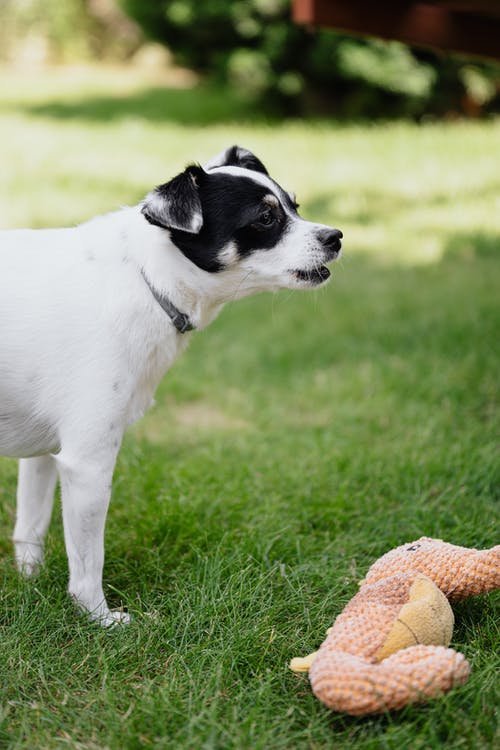
How To Stop The Unwanted Behavior
Do not overreact to their barking. Dogs that bark for attention know their barking is effective when they get a reaction from their human family. Like a child who acts a certain way when he or she needs attention, dogs do too. Limiting your reaction will allow your pup to see that his barking will not result in any attention.
Walk Away
When you walk away from a dog, he recognizes there is no reward. When he barks at someone and you walk away, he may begin to associate the excessive barking with something he should not do. Paying too much attention to the negative behavior may end up making it worse.
Distracting Them
On the flip side, some dogs need a distraction in order to take away their focus on what is causing them to bark. If your dog begins to bark, simply distract them with noise. This can be accomplished by shaking your keys, slapping your hands, whistling, or using one of his favorite squeaky toys. If this is effective, he should be rewarded, which will associate positive behavior with a reward.
Need To Remember You should not forget that your dog is a dog. Dogs do bark and do get excited for various reasons. It is in their DNA! Being patient with your dog is needed in all instances. Although excessive barking can be a nuisance, keeping cool and not overreacting is a great first step in managing it. Your dog can tell when you are stressed, so a calm and patient demeanor with him is what will yield the best results.
-
How To Handle Broken Nails on Our Puppies
Our pups love to play and, at times, can play hard. A very common injury for our pups is a split or broken toenail. These can cause pain and great discomfort to our fur-legged friends, and knowing what to do when this happens is very important. Although a very simple injury, it is one that should be treated quickly and properly.
What Causes Dogs’ Nails to Break?
Dogs have a total of nine toes. Five toes on their front paws and four on their back paws. Their nails grow throughout their entire life and often require trimming to keep them at a comfortable length. Overgrown toenails on dogs can cause discomfort since they are in constant contact with the ground they walk on. We need to remember that they are not just walking on a soft carpet. Outdoor terrain can be hard and rough, which can cause their nails to break and or split. Imagine how you would feel running around outside without shoes on.
Why are a Dog’s Broken Nails Problematic?
Our pup’s toenails should always be taken seriously, as damaged toenails can lead to greater health issues. The injury is not only painful but can limit their mobility and quality of life. Inside their nails are clusters of nerves and blood vessels. An untreated broken toenail can lead to an infection that is capable of spreading into the dog’s leg, which will require much greater medical care. This is one of the main reasons why tending to his toenails is so important.
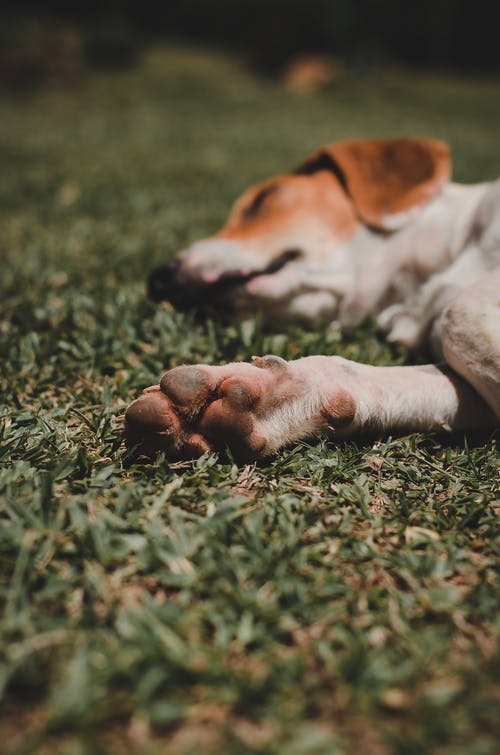
How To Treat A Broken a Nail
When in doubt, contacting your veterinarian is always recommended. If you treat the injured toenail at home, you should initially restrain your dog in a way that allows you to safely examine the injured toenail. This will help prevent you from being bit and or scratched and will make the process safer and easier. Your pup will be in pain and most likely not want you near the injured paw. If your dog’s nail is bleeding and he will allow you to touch the area, begin to address the bleeding by applying light pressure to the area. Keep the light pressure applied for several minutes and until the bleeding stops. After the bleeding is under control, apply an anti-bacterial ointment or cleansing solution to the injured area. Bleeding that does not stop after fifteen minutes should be looked at by a veterinarian. After the area is properly cleaned, allow it to air dry. Applying a bandage over the area may not allow it to dry out as desired and is a potential safety hazard should your dog try and chew the bandage. If you happen to observe a small section of the nail hanging from the area, you can attempt to remove it yourself by carefully trimming it. This should only be done if your dog is tolerating the pain and relaxed enough to allow you to. After doing so, let your dog time to relax before allowing him to run free, especially outside.
How Long Does It Take a Dog to Fully Recover from A Broken Toenail? Although all dogs are different and all injuries vary, generally speaking, your dog will need about two weeks before his nail is completely back to normal. You should start seeing improvement within the first 48 to 72 hours. This will greatly depend on how quickly you treated the injury, the overall extent of the injury, and if your dog did not reinjure it before it began to heal. Remembering to use anti-bacterial ointments or cleansing solutions as soon as possible also helps to prevent the area from becoming infected, which can certainly set back your pup’s recovery time.
-
Is Your Dog Getting Enough Exercise?
As the saying goes, an object in motion stays in motion. That could not be any truer when it comes to our dogs. Exercise is a key ingredient in keeping our pups looking and feeling their best. There are many ways for our fur-ever friends to get their daily amount of required exercise.
Indoor Versus Outdoor Activities
Exercise is exercise. The key is keeping your pup moving which helps to speed up his heart rate, use all of his muscles and burn calories. Most pups enjoy the smells and looks of nature but on certain days (heavy rain, lots of snow, or extremely hot weather) indoor activities can be just as fun and beneficial.
Basic Outdoor Activities
The most common basic outdoor activities include a brisk walk, a fun game of fetch, or play wrestling with your dog. Dogs love human interaction and when fun is mixed into it allows for a better experience. It also provides a very good bonding experience which dogs naturally tend to seek.
Basic Indoor Activities
Some fun basic indoor activities include tug-of-war, hide and seek, and learning new tricks. Although these types of activities are not as active as outdoor activities, they will still allow your four-legged friend to burn extra energy and keep mentally alert. Remember, activity time is not just to stay physically fit, but mentally sharp too.
How Many Minutes A Day Should I Spend Exercising With My Dog?
Although every dog is different, one thing most people agree on is each dog should be on the move for at least thirty minutes a day. Certain breeds, like Retrievers, Spaniels, Collies, Pointers, and German Shepherds require more activity time than breeds such as the Bulldog, Basset Hound, Shih Tzu, Pug, and Chihuahua. Although each breed is different, thirty minutes a day is a relatively good goal to strive for. If your dog seeks more playtime, go for it!
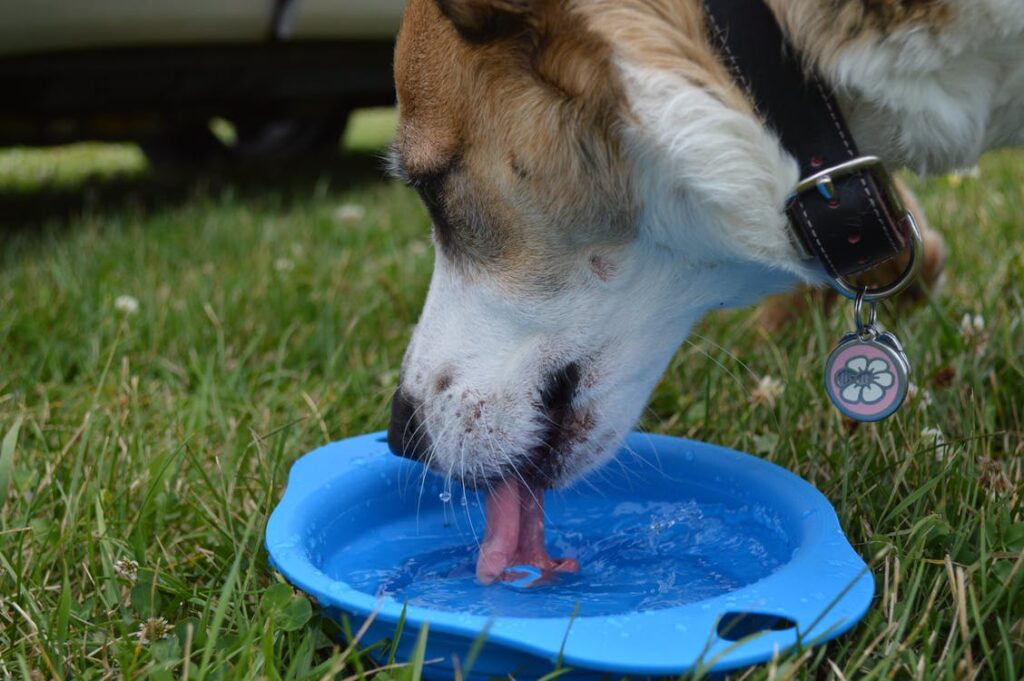
Frequently Asked Questions
How Do I Know If My Dog Reached His Activity Limit?It is normal for dogs to pant while running and playing but this is a sign they are getting tired. Watch your pup’s tail. Is it wagging or straight down while he’s playing? A wagging tail is generally a sign that your dog is content, comfortable, and happy. Consider breaking the play time up into intervals and allow your pup to sit or lay down for a few minutes every fifteen minutes or so. This will also give you a small break to catch your breath too!
Will My Dog Overheat?Heat exhaustion certainly is something that every dog owner needs to watch for. The most telling symptom of heat stroke in a dog is excessive panting. Other common symptoms may include general signs of discomfort, excessive drooling, reddened gums, vomiting, diarrhea, mental dullness or loss of consciousness, uncoordinated movement, and collapse. Should your pup ever reach this level immediate medical care is needed. The key, however, is to monitor your dog while outside playing before he begins to overheat.
What Can I Do to Keep My Dog Feeling Good During Activity Time?Fresh water! Water is essential as it hydrates your dog and helps to keep him cool. Although providing him with water during activity time is very important, making sure he is properly hydrated before and during activity, time is also necessary. Don’t wait for your pup to show signs of dehydration before giving him a refreshing bowl of water.
Is Activity Time in Cold Weather Safe?Outdoor activity time in the cold is safe, however, proper precautions should be taken. A very overlooked aspect of this has to do with what we focus on in the warm months, hydration. During the cold winter months, the humidity levels in the atmosphere are much lower. With the lower humidity, your dog can easily become dehydrated if he or she is not drinking enough water. Keeping your dog bundled up, preferably with an insulated dog sweater is a great start. Properly sized dog shoes also will also help to keep his paws warm and dry. You wouldn’t want to walk outside on snow or ice without protection and neither does your pup!
Practice Makes PerfectEstablishing a good routine for your dog while he’s still a puppy will allow him to grow into a healthy and active adult dog. Forming good habits at a young age will also help to assure many years of feeling and looking great. Take the time each day to show your pup why he’s known as man’s best friend!
-
Tips For Taking Your Dog on Vacation
It’s that time of the year when many of us take our annual vacation. For those of us who plan to bring our fur-legged friend on vacation, it is wise to plan ahead to ensure your pup has an enjoyable experience. Whether it be a road trip or a flight, proper planning will help make your vacation easier and safer for your dog.
Road Trip Vacations.
Traveling with a pet by way of motor vehicle involves more than just having him hop in the back seat and taking off. This, especially if you will be driving for an extended period of time. Here are a few car travel safety tips to help you prepare for a more enjoyable and comfortable journey.
Prepare, prepare, prepare. For first-time dog travelers, a good way to get your dog accustomed to long road trips is by taking him for shorter trips ahead of time. Building up his tolerance to car rides before taking him on a long trip is a good way to start.
If you are traveling to another state, it is a good idea to bring a copy of your pup’s vaccination records. Each state has its own set of animal laws, and having a copy of these documents readily available will save time and effort should they be needed.
Have a pet travel kit prepared before leaving. Inside this kit include a few of your pup’s favorite toys, a leash, a collar, a small backup bag of dog food, and a few bottles of drinking water. For dogs who prefer to ride on the car’s seat versus in a crate, consider a properly sized safety dog harness. Buckle up for safety!
It is also important to make sure to double-check your dog’s identification tag on his collar. If in the event he escapes your care, the person who finds him will be able to more easily identify who he is and who to contact. You should also take into consideration your pet’s potty needs. If you plan to pull off of the roadway to allow him to do his business, make sure you have disposable waste bags and a disposable container to put the waste bags in after use.
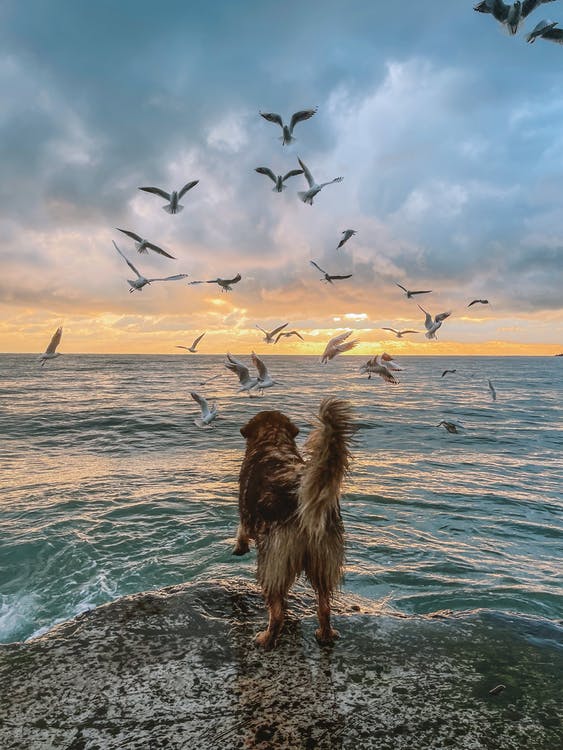
Traveling By Air
Air travel is certainly a quicker method of transportation but much more stressful for your dog. It will require him to be away from his family and in a crate in a different and loud environment. Many dogs do not handle air travel well and this form of transportation for them should only take place if absolutely necessary. Below are some travel tips for dog owners who plan to fly their dogs.
Book a direct flight to your destination if possible. This will allow your dog to get situated in one area versus having to be transported from plane to plane. It will also limit the amount of time he has to be in a crate and away from his family.
Consider purchasing a USDA approved dog transportation crate. The crate should be large enough for your pet to comfortably stand, turn around and sit in. Inside the crate, include one of your t-shirts. Your pup will be comforted with this due to him being able to smell your scent while he is away from you. Be sure to secure at least two forms of identification on this crate which include your name, phone number, and address. Make sure your dog doesn’t overeat leading up to the flight. Chances are the flight will cause him stress and an upset stomach could lead to vomiting and or diarrhea.
Tips For Keeping Your Dog Safe After You Arrived
Scope out the area where you are staying before letting your pup explore. Certain destinations will have areas designated just for dogs to play in. Be sure to keep him well secured on a leash and collar and be mindful of other dogs in the area. Remember, not all dogs are as friendly and outgoing as yours. Even though you are all on vacation and most likely taking the day as it comes, try and keep your pup on his routine feeding schedule. This will allow him to feel a sense of normalcy and better his chances of keeping his outdoor potty time schedule the same.
-
Are Your Dogs Ready for the 4th of July?
The 4th of July is incomplete without festivities and fireworks. While your dog may be fine with the festivities, and maybe even have a great time, they may not be prepared for the fireworks.
This is because the bright flashes, loud sounds coming from multiple directions and the not-so-pleasant smell of explosives can be a lot to take in.
As a result, it is important to prepare your pet for fireworks, and also, recall the festivities? Some foods may not be appropriate for your pet, and we would cover that here as well.
Preparing Your Dog for Fireworks
First off, it is as good an idea as any to keep your dog away from fireworks altogether. However, if this is virtually impossible, then here are some tips that can help keep them calm:
- Desensitize Your Dog: this involves getting them used to fireworks. You could play fireworks videos from time to time and give your pup treats and toys during. This allows them to create positive associations.
- Create a Safe Space for Your Pet: this could be their crate or any space they go to hide when they are scared.
- Provide Distractions: if your pup doesn’t scare very easy, then toys or tasty treats may keep them distracted sufficiently.
- Close the Blinds: this action prevents them from seeing the flashes that may instill even more fear.
- Exercise Your Pet: exercising your pet would help tire them out and reduce their energy and anxiety levels.
- Stay Home: if you can, by all means do stay at home. Having a familiar face and presence around would do wonders for their confidence.
Do Not Eat List for Dogs
If you would be having a BBQ, here’s a checklist of some foods that your pet shouldn’t have access to:
- Meat bones
- Alcohol
- Fruit platters
- Snack bowls
- Dessert table
- Raw meat
Conclusion
You would definitely have a more pleasant celebration when you know that the welfare of your pet is in check.
-
Let’s Talk About Leash and Harness Training
Leash and harness training is an essential aspect of training your pup and generally goes easier when it is started very early. There are a number of benefits associated with starting training early in your pup’s life.
A major one is the fact that it facilitates good behavior. Walking on a leash helps your pet to inculcate lessons in discipline, cooperation, and obedience. In addition, learning this early can set the foundation for learning picking up other instructions along the line.
For instance, your pet would likely be more responsive to learning skills like heel, behaving appropriately to other individuals and dogs who are walking together, as well as navigate a crowd with you politely without causing any trouble.
In order to get your pet this well-trained, repetition is a vital aspect of this training. Constant practice with lots of positive reinforcement and praise could go a long way in ensuring that your pet picks up these lessons fast.
Typically, you should not be walking your pup outdoors until they are around 12 weeks old, and have received all the necessary vaccinations. So, if your pup comes home earlier, you don’t necessarily have to start right away. You could wait until they are around 10 weeks old before you begin to leash and collar train.
A flat collar is ideal for wearing everyday and carrying the ID tag, however, many experts recommend using a harness alongside a leash for your pet. This is in the event of situations that could result in your pet pulling on the leash. With the harness in place, they would not experience any major strain against the neck.
Conclusion
Leash and harness training requires a lot of patience as well as a gentle hand. Be sure to praise effusively when your pup is getting it right and correct slowly otherwise.
-
Summer Snacks to Make for Your Dog!
Summer months imply that you would be spending a lot of time indoors and avoiding the heat in the great outdoors. With so much time on your hands, why not embark on an incredible treat-making adventure. You would definitely have fun making them and your fur baby would no doubt have a great time helping out (trying to sneak a bite).
Here are some treats that you can explore:
Peanut Butter Dog Doughnuts
This homemade dog donut is easy to make and very delicious too. The ingredients are within reach and there is no special process involved. Here are the necessary ingredients:
- 1 Cup Oats
- 1 Cup flour
- Cup peanut butter
- Coconut oil
- Plain Greek Yogurt
- 2 Eggs
- Bacon Bits
Apple and Chicken Pup Pops
Think about popsicles, but for dogs. Your pup is sure to enjoy this refreshing treat just as much as kids love popsicles in summer. Here are the necessary ingredients:
- Cup water
- Cup unsalted chicken broth
- 1 Gala apple
You could use raw porkhide sticks, however, it is more ideal to use Enzy-Chews. They have the extra perk of tartar control and they are easier to digest as well.
Yogurt Peanut Butter Banana
This is one of the most simple and straightforward treats for summer, and your pup is bound to love it. Here are the necessary ingredients:
- 3 Tablespoons of peanut butter (confirm that the brand you are opting for doesn’t have any xylitol)
- 1 large banana sliced
- 32 ounces plain yogurt (yogurt is an excellent source of calcium and double as a probiotic).
Ensure that you do not add any artificial sweetener particularly those that have xylitol as a component because of its toxicity.
Conclusion
These are some great treat ideas for your pet. In addition, ensure that your pet has access to water always so that they can stay hydrated.
-
This is Why You Need a Miniature Dachshund!
Daschunds can be traced all the way back to the Middle Ages. Their name is derived from two German words ‘dach’ meaning ‘badger’ and ‘hund’ meaning ‘dog’.
They were great hunting dogs with their keen sense of smell allowing them to hunt both above and below ground, tracking animal scents for extended periods.
Over the years, different sizes emerged and in the U.S., there are three main sizes: the Normal, Miniature, and Toy.
Overview of Mini Daschund
- Common coat colors: chocolate, blue, tan, black & tan
- Coat types: long-haired, wire-haired, smooth hair
- Average weight: 4kg to 5kg
- Life expectancy: 12 to 15 years
- Sociability: medium
Exercise
A miniature Daschund requires around 30 to 45 minutes of exercise daily. This breed has a lot of energy in spite of their seemingly little frame, and as a result, requires quite a bit of activity to tire them out. Keeping them in a secure environment where they can run off leash is one sure way to keep them healthy and happy. Ensure that they do not have occasion to jump a lot such as over holes and streams because dachshunds may experience back damage easily.
Diet
A diet with sufficient basic nutrients as well as vitamins and minerals is a requirement for your miniature Dachshund. You should typically explore dog food formulated for small breeds to ensure that they get their required nutrition. For pups, 3 to 4 small servings during the day would suffice rather than two major meals. As your pup grows older, you could limit them to two major meals.
Training
Training miniature dachshunds may take a little while because they are quirky and require a lot of patience when being trained. They have an affinity for responding to rewards and good feedback. They may also get distracted very easily when they see something that really interests them.
Conclusion
Mini Dachshunds are a family-friendly breed that adapt as well to houses as they do apartments. They also work well for single individuals.
-
How Important is Having an ID Tag On Your Dog?
Having your dog wear an ID tag is essential. This measure serves as a major precaution in the event that your pet wanders off. An ID tag not only supplies details about your pet such as their name, it also provides valuable information about you, their owner, and how to contact you. So, to ensure that the ID is indeed effective, here are some tips to help:
Keep the Information Updated
Information on your dog’s ID tag is only as useful as can be when it is up to date. So, if you recently relocated or changed your phone number, be sure to go right ahead and update this information on your pet’s ID. If you move often, then you should set up reminders that would help you recall.
Choose One That Works for You
Dog tag IDs come in a range of sizes, shapes, colors, and types. There are some that are simply handwritten and slipped into a plastic, waterproof case. There are GPS versions that allow for easy tracking; some are silent while others may jingle. There are others that are extra strong and durable, specifically for breeds that may try to destroy their tags. Overall, be sure to opt for one that does the job and works for you.
Examine Tags Periodically
There is a good chance that your dog’s tag may have taken some damage at some point in time or perhaps, the written information is no longer so clear. This is why it is essential to check in periodically and confirm that it still works just fine. You should do this at regular intervals.
Conclusion
Dog ID tags are a standard precaution to keep your pet safe and ups your chances of recovering your pet in the unfortunate event of them getting lost.
-
Picking the Best Food for Your Furry Friend
There is a range of food types that are generally well suited to be eaten by dogs. Wet food diets, kibble, organic, holistic food, and a range of others. However, the best type of food for your dog greatly depends on what would be the healthiest choice for them.
In other words, high-quality food is one that has nutrient components that are required by your dog based on their breed and age or stage in life. Usually, the best way to pick a great diet for your dog is to talk to a nutritionist or veterinarian.
They are in the best position to make recommendations based on the needs of your pup, and they would be able to highlight the nutrients that are essential at that point in time. They can also help you avoid foods that could induce allergic reactions in your pet since your veterinarian has your pup’s health records.
In addition to consulting with experts, here are some tips that can help you along in the decision-making process:
- Learn about the constituents of dog food so that you know what to look out for
- Read labels and ingredients
- Note the grain and gluten constituent of the food
- Check the by-products used in making the food, if any, and ensure that they are healthy for your pup
- Keep an eye out for adequacy, it would typically read “this food is complete and balanced for all life stages”
- Read up on information provided about the trial feeding stage
- Check out the analysis of nutrients provided on the label of the food
- As a reminder, consult with your veterinarian
Conclusion
Your dog’s food goes a long way in determining so much in their lives ranging from development to remaining in proper health. As such, you should pay close attention.
-
Involving Your Pup in Summer Activities
Summer is a beautiful time to be outdoors and you would typically be up to a whole lot of fun stuff. Your pup would definitely appreciate being included in all of these fun activities, and here are some that they would especially love:
Pool Parties
Summer heralds hot months and a lot of time spent in the pool, and Winter would no doubt love to splash around too. You can picture his tongue hanging out the side of his mouth and then the characteristic wiggle that splashes water all over you. If you can picture it, then you should definitely do it!
Backyard BBQs
The lingering smell of meat in the air and the occasional treats you toss which are expertly caught by Winter. This is definitely a dream event by all standards; their favorite person in the world and treats!
Picnics in the Garden
You can enjoy the warm sunshine, some very cool lemonade, and pastries with the butterflies all fluttering around. This sounds like a dream paradise and definitely one you shouldn’t enjoy alone. Your pup would have a lot of fun and probably get some exercise from chasing butterflies.
Cozy Dinners
Cozy dinners on the patio in the cooling evening sound like a wonderful idea. You can take in the night air and sounds and you can be certain that Winter would enjoy the calm, laying at your feet. This is an awesome doggo-human moment and definitely one that you would remember for a long time to come.
Hikes
Going on a hike? Be sure to bring your furry companion along. Nobody loves the outdoors and its sounds as much as they do.
Conclusion
Looking to make great memories this summer? Involve your pup and they become even better.
-
Summertime is the Best Time for Puppy Photos
Summer means the warmer months and of course, spending lots of time outdoors. Since most places are accessible and open in summer, you can definitely find a lot of picturesque backgrounds to use for pictures. Here are some of the best places for puppy pictures that you can explore:
The Beach
The beach offers the dual perk of having a great time and taking beautiful pictures too. Following a couple of hours of running around the beach with your pup and playing in the water, well, it’s picture time! You could explore a couple of picture ideas like putting a mini hat on your pet’s head or having them stretched out on a beach chair.
The Mountains
The mountains offer an amazing, picturesque background for pictures. It’s like being on top of the world, and the rest of the earth is just at your feet. This is definitely one place to take majestic pictures of your pet.
The Fields
Fields with wildflowers and rich soil could be great for a photo op. It would be like being cast into nature and if your pet is very playful, you could capture pictures of them in action. There is an off chance that a butterfly might rest on its nose, so, have your camera ready.
Sunsets
Sunsets are never a bad idea for pictures. If anything, they make for a soft, beautiful, and calming background. Sunsets provide that incredible feeling in pictures that no other background can beat. So, in addition to enjoying a beautiful sunset, you get to keep a memory from it.
Conclusion
There are no doubt many backgrounds for photographing your pup, but these four definitely top the list.
-
What to Bring With You While Hiking With Your Dog
Hiking with your pet is some of the best alone time you could enjoy. You both have lots of sights, sounds, and smells to take in and it goes without saying that your darling pet would be ecstatic.
However, before you embark on a hike with your dog, it is important to ensure that you have checked certain boxes. Some of these boxes include bringing along adequate supplies and ensuring that your pet is in tip-top shape.
So, here’s a checklist of what to bring with you while hiking with your dog:
- Water
- Food
- Leash
- Collar or harness
- Canine first aid kit
- A bowl
- Clothing
- Microchip or ID card
- Flashlight
If you are hiking with a big dog, they can carry some things, nothing too heavy. On the other hand, for small dogs, you do all the carrying.
Before embarking on the hike, here are some things you need to ensure:
- Physical shape; ensure that they are in top shape and ready for the rugged trails
- Ensure that all their vaccinations are up to date, you can always pay a visit to the veterinarian if you’re not certain
- Train your dog for the trails so that it’s not an entirely new experience
- Research where you would be hiking; the weather conditions, any specific occurrences that are peculiar to that area, among others
- Learn and understand how walking the trail goes, otherwise known as trail etiquette
The benefits of hiking are immense for both you and your pet. There is the baseline benefit of the physical fitness aspect. In addition, the atmosphere helps you and your pet relax and provides for an excellent adventure.
Conclusion
For a successful hike, be sure to check off the list here and of course, have a great time!
-
Why You Need a Poodle Mix
Poodle mixes like Cavapoos, Goldendoodle, Cockapoo, and Maltipoos, have attained critical acclaim because of the myriad of benefits that owning one can bring.
They are highly attractive, intelligent, and take training easy. In addition to these qualities, here are some others that would definitely seal the deal for you:
Hypoallergenic
A number of poodle mix-breeds are hypoallergenic which implies that they are great for people who have allergies. This is because they either do not shed or shed less and infrequently. So, they would either have no dander or very few clinging to their coat.
Small Size
They come in very small sizes which makes them well suited to small apartments and given that they don’t shed, you won’t have to worry about getting fur all over your apartment.
They are also very easy to carry around and their owners explore this benefit to the fullest. For instance, the Cockapoo weighs only about 12-25 pounds and has a height of 9-18 inches.
The Goldendoodle, which is one of the biggest in this breed category, has a height of about 22-22.5 inches and weighs around 50-90 pounds.
Great for Families
Poodle mixes also make for great family dogs, one great example is the Goldendoodle. They also have excellent traits gotten from both parents that they were bred from and are considered a superior breed to their parent breed.
They do well with kids and are not temperamental. In spite of their small size, some of them are quite energetic and playful and make for a good playmates for your kids.
Conclusion
Opting for a poodle mix could be an excellent option especially if you are looking for a small dog.
-
This is Why You Need a Goldendoodle
Goldendoodles are a cross between a purebred Golden Retriever and a Poodle. They are a highly intelligent, loving, and loyal breed that sheds way less than a purebred Golden Retriever. This gentle and affectionate breed started gaining popularity following breed development in the 1990s.
Relative to other designer breeds, it is still regarded as a young cross. Goldendoodles are very social and would interact well with everyone. They would do well in both country and city settings. However, apartment living might not suit them. Rather, they do better in an enclosed space like a fenced yard.
They also shouldn’t be kept in kennels as they thrive with human contact.
Here’s a table that details their attributes:
Height 17-21+ inches Weight 50-90 pounds Life Span 10-15 years Breed Size Large (61-100 lbs.) Good With Children, Families, Dogs, Cats Temperament Friendly, Gentle, Playful, Outgoing Intelligence High Shedding Volume Infrequent Exercise Requirements Medium Energy Levels Active Drool Amount Low Bark Level When Necessary Coat Length/ Texture Medium, Curly Breed Group Hybrid Colors Black, Gray, Blue, Red, White, Gold, Fawn, Brown/Chocolate/Liver, Gold/Yellow Patterns Brindle, Bicolor, Black, Tan, and Merle They also have other traits such as the fact that they are easy to train, are excellent for first-time pet owners, are great hiking buddies, require a great deal of grooming, are strongly loyal, and they may require a significant amount of grooming.
They have a very affectionate nature and are hypoallergenic. The hypoallergenic feature makes them great for people who typically react to allergens. Goldendoodles come in a large standard size as well as a smaller, miniature size.
They make for great emotional support animals and enjoy spending time in the great outdoors. You can achieve this by taking walks or playing outdoors. This helps to cover their physical needs.
Conclusion
A Goldendoodle is the perfect canine companion for both individuals and families.
-
How To Trim Your Dog’s Nails
An important aspect of dog grooming is trimming your dog’s nails. While a routine trip to the groomer also comprises nail trims, sometimes Saul’s nails may be overgrown and you may have to do it yourself. This is how to make this happen step by step:
- The first step is to gather your supplies
- Up next, gently pick up the foot
- Isolate the nail that you want to cut
- Select the precise place you want to cut
- Do the cutting at a 45-degree angle
- Chip it off in bits
- Remember the dewclaws
- Nail grinding (use as a finishing tool)
- Reward your pet
It is important to note that a dog’s nail comprises the outer material known as the shell, which is hard and the living pink quick. The quick runs through the core of the nail and supplies blood. To ensure your dog’s wellbeing and guarantee easy maintenance, short quicks are the recommended length.
Similarly, if you are cutting your puppy’s nails for the first time, you would have to go very slow, starting with picking up the paw, isolating the nail, getting your pup familiar with the trimmer (especially if there is any vibration involved), cutting only a tiny chip initially. All of these would have to be done over a period of time to aid easy adjustment.
If your dog feels uncomfortable, it is best to retreat or you might have to eventually use a muzzle. In the way of products, there is a range of nail trimmers comprising scissors as well as grinder tools specially designed for dogs. The main thing is to use what works best for your pet. Also, styptic powder should be kept close in case of bleeding.
Conclusion
Trimming your dog’s nails can be quite the task, so remember to be patient and reward Saul with treats too.
-
Here Are the 5 Best Dog Blogs You Need To Check Out
Learning about dogs is really such a fascinating subject and you can be sure there is a whole lot to be learned. Certain dog blogs are dedicated to creating useful content that would provide you with comprehensive information. Here are the best 5 of these blogs:
The Bark Magazine
The Bark focuses on need-to-know content for dog owners, especially in the area of pet upkeep. You would find real-life dog-friendly stories about various happenings to dogs. They also highlight issues that might affect your pet’s health, both apparent and non-apparent, and discuss treatment options.
Dogtopia
Dogtopia might be known for their dog spa services and others, however, their blog is filled with so much goodness! You would find anything from puppy socialization to ensuring dogs in apartments are happy to getting rid of separation anxiety. These tips come in very useful.
Whole Dog Journal
Whole Dog Journal provides you with a slew of information from dog care to in-depth reviews on various dog products. They also feature teaching training methods that are positive in nature. The blog always offers something worthwhile to read and the website boasts lots of useful pet care information.
iHeartdogs.com
iHeartdogs.com blog is massive and mainly focuses on four areas; Lifestyle, Behavior, Healthy Pups, and Pup Stories. Each category offers something in the way of excellent information or entertainment. The blog covers the needs of dog owners such as care of dogs with various ailments as well as recommending useful products.
Pawleaks
Pawleaks is great because of just how comprehensive it can be when guiding dog owners through each stage of their dog’s life. They are also heavy on health-related advice, solutions to problems in your dog’s behavior, as well as in-depth puppy training tips.
Conclusion
These websites provide golden information and you should definitely check them out.
-
Activities To Do At Your Local Dog Park
Playing outdoors with their favorite human in the world is definitely one of the best things that pups love. Maybe other dogs and humans may add a bit of spice. So, if you’re out at the dog park with your pup, here are some activities you can try out:
Races and Training
A tired pup is a happy one, and you can always achieve this by allowing your pup to race. You could raise him or simply toss a ball and play fetch. For some mental stimulation, you could also include some training exercises, and what better place to do this than one with distractions.
Agility Courses
Jumping over bars and clearing hurdles might not be your best definition of fun. However, this is something your pet would definitely love. Explore the agility courses available and encourage your dog to surmount these obstacles. For a true boost, wait for them at the other end.
Doggy Play Dates
A picnic sounds like fun and your pup would definitely love that doggo cake or ice cream. To amp up the fun, organize a doggy date for one or some of your dog’s buddies and watch them have maximum fun. You could have some fun too with other dog parents.
Photography
What’s cooler than your pet donning sunglasses and maybe a muffler and posing for an incredible picture? You could be grooming a future model and photography sure is so much fun as well. An incredible natural and improved background like the dog park would make for a great backdrop for the pictures. Be sure that your dog strikes fun poses!
Conclusion
There is a vast range of activities that you could do for fun at the dog park and be sure to add some more to this list.
-
Why Do Dogs Wag Their Tails?
Tail wags are commonly associated with excitement or happiness. However, dogs wag their tails for a range of reasons, and this article covers the various wagging you may notice and what they might mean.
What Is the Role of the Tail
Your puppy’s tail is mainly a communicative tool and she would typically use it to pass across a range of information. You can regard it as a barometer for her mood. Knowledge of tail position, as well as the proper interpretation of further canine body language, can help you understand how your pup feels per time.
Here are some general reactions and interpretations:
- A lowered tail stuck between the legs could indicate anxiety, submission, or fear
- A higher than usual tail could indicate alertness, such as when something piqued her interest
- A side to side wag probably accompanied by licks or a play bow could indicate a friendly greeting
- A vertical tail could indicate aggression
Before entirely concluding, be sure to look out for other factors.
The Research
According to the American Society for Prevention of Cruelty to Animals, dogs use the motion and position of their tails to communicate their present emotional state.
In 2007, researchers found that the wag pattern contains clues as well. For instance, wagging to the left implies negative emotions while wagging to the right was indicative of positive emotions.
Research showed that the right hemisphere of the brain in some animals was associated with negative-avoidance feelings while the right hemisphere could be linked with positive-approach feelings.
Since the brain’s right hemisphere controls the left part of the body and vice versa, the phenomenon would hold.
A 2013 study also showed that canines understood these motions themselves. A left-wagging tail made other canines stressed while a right tail wagging helped them relax.
Conclusion
The tail wag pattern could be a pretty good way to ascertain how your pup is reacting to a situation. However, that’s not all there can be, be sure to look out for other signs.
-
Why Do We Love Dogs So Much?
For the longest time, dogs have been tagged man’s best friend as a result of the love and fierce loyalty that they display to their humans. So, why exactly is there so much love between the canine and human?
Humans started keeping dogs as pets since ancient days prior to civilization. This implies that this fierce love and unbreakable bond between humans and dogs has been repeated multiple times all through history.
It goes without saying that beyond their simple angelic existence, dogs provide their owners with benefits ranging from emotional and mental to physical as well. Dogs are very useful and can be trained to hone their special attributes like their strong sense of smell or hearing for various uses.
For instance, they are members of various important units in the society such as the firefighter departments, K9, search and rescue, as well as sniffer dogs at airports. The services that they provide have constantly saved the lives of humans time and time again.
Dogs are also regarded as immediate family members and treated as fur babies. Dog owners commonly claim to be in a better mental space after having a dog relative to before they had one. In addition, people dealing with various traumas get support dogs who constantly comfort and keep them stable.
In essence, the benefits that dogs offer humans as a result of their presence in our lives cannot be quantified.
Conclusion
Discussing the reasons why we love dogs so much could extend so much with each individual having their own personal reasons. However, the bottomline is that they very much deserve this love and even more.
-
What are the Benefits of Owning a Dog?
The only downside to owning a dog is that those gooey eyes would charm you anytime, anyway. That said, there are loads of benefits to owning a dog; emotional, physical, mental, social, basically loads. This article highlights some of these benefits:
Companionship
If you’ve been battling loneliness for a while, owning a dog is precisely what you need. There is no feeling lonely when you have a pup that constantly craves your attention and worships you. It’s no wonder then that dogs are known as man’s best friend.
Uplifts Your Mood
There’s no feeling depressed around your dog. Pups are generally lively and full of energy and are ready to play at every turn. Their antics are bound to crack you up and you would find yourself bursting into laughter now and again. Dogs make humans happy.
Longevity
People with pets have generally been shown to live longer. This is especially true for seniors. Having to care for a pet extends their lifespans and this applies to middle aged individuals too.
Teaches Vital Lessons
Owning a pet teaches vital life lessons like caring for other people besides ourselves. Knowing that a vulnerable pet totally depends on you teaches responsibility especially to kids at a young age. It improves social skills too.
Improved Mental Health
People battling depression and other mental health issues are often assigned support dogs to help them through. This is because having a dog that adores you stimulates feelings of hope and happiness.
Conclusion
There’s really nothing as blissful as owning and caring for a dog. In addition to the benefits outlined above, the daily walks are beneficial to physical health too while providing good bonding time with your pup.
-
Should I Crate Train My Dog?
Crate training is the process of introducing your dog to view and accept a dog crate as a personal safe space. There are various benefits that crate training offers particularly for your pet. Here are the most profound ones:
Provides a Familiar, Safe Space
Sometimes, your pet needs a place to retire, particularly if they encounter something new. For instance, some dogs are not great at getting used to strangers and would rather stay away. A crate provides a form of escape for your pup and allows them to retreat from new, disturbing changes until they can eventually adapt.
Provides a Den Feeling
Many advocates point to the fact that dogs are den animals and a crate can serve as a substitute for a den. Daisy’s den is where she reigns supreme and feels like her own personal kingdom. This space serves as a sanctuary and your dog feels very secure in that space.
Helps With Potty Training
Dogs generally keep their sleeping areas clean as a matter of instinct. Providing your pup with a crate would help them learn to hold and this in turn strengthens bladder and bowel muscles. They inadvertently learn housebreaking on their own.
Makes Life Easier Generally
Crates generally make yours and your pet’s life easier. Transporting Daisy is safer using a crate whether by road for long distance trips or air trips. It results in less distractions for the driver and you would be able to have your dog with you whenever you travel.
Conclusion
Crate training your pup offers too many benefits for you to pass it up. During the process, ensure that you’re patient and reward with treats for good behavior.
-
Top 5 Springtime Recipes for Your Dog
It’s spring and time to make some homemade foods and treats! Here are some recipes you can explore:
Frozen Watermelon Treats
Watermelon is a staple for both spring and summer. It contains lots of fluid, aiding hydration, has a natural sweetness and is perfect for cooking in the warm temperature. Making this treat is super simple and all you need is some watermelon and coconut milk. You might have to wait a while for the treats to freeze up, but it’s worth the wait.
Yogurt Peanut Butter Banana Treats
Dogs love peanut butter all year round and to make this recipe even healthier, yogurt does an excellent job. These treats are typically brought out in the stifling heat of summer, but it wouldn’t hurt to give your dog some in spring too!
Cranberry Cookies
You want to show your dog some extra love? Bake these cookies heart-shaped. Ingredients include some almond flour and coconut flour, and of course, cranberries. Ensure to make a whole lot because your dog would definitely love them!
Turkey, Rice and Veggie Mix
This low-fat, low-calorie recipe is particularly ideal if you’re looking to stop your fur baby from gaining excess weight. It boasts lean animal protein, veggies, and healthy carbs. You can get up to 12 cups from a single preparation and they stay in perfect condition for up to 5 days when refrigerated.
Beef Stew, Doggie Style
This homemade food can be frozen and lasts the entire week. It had loads of iron from fresh protein and requires only about a pound of beef stew meat, one small sweet potato, half cups of diced carrots, diced green beans, flour and water, and finally, a tablespoon of vegetable oil. Watch your dog lap this up in no time!
Conclusion
Now, bring out your inner chef and get to whipping up these delicacies!
-
Is Doggy Daycare Worth It?
Apart from getting a sitter, doggy daycare is the other alternative for ensuring that your dog is cared for when you can’t be available. However, is doggy daycare really worth it? Should you consider signing your dog up? Here are some pros and cons to help your decision along.
Pros of Doggy Daycare
Doggy daycare does offer a significant number of benefits, and here are some prominent ones:
- Physical exercise and constant mental stimulation all through the day
- Helps your dog ward off loneliness
- Reduces the chance of destructive behavior
- Reduction in barking
- You get a restful night since your dog would likely come home mentally exhausted and go to sleep
- Helps if you’re unable to walk your dog that day
- Letting your dog out midday would no longer be necessary
- Great way to get your pet socialized
- Provides enough fun activity and exercise in case you’re unable to provide that for the day
Cons of Doggy Daycare
- Might be overly exciting and overwhelming for your dog
- Possible mental exhaustion as a result of stress or fear on the part of you dog
- Your dog could pick up bad behavior from other dogs or while relating with them
- Possible bullying or injury scenario
- Costs eventually rack up (average daycare cost is $25+ per day)
- You don’t have control over the behavior of other dogs or the staff
- Vaccinations are demanded and required by doggy daycares, however, there might be a chance of your dog picking up an illness like kennel cough or getting fleas from other dogs
Conclusion
Doggy daycare has some pretty great advantages as well as some somewhat discouraging downsides. However, overall, most daycares try to avoid the cons that they can on their end, so, you should definitely consider this care option.
-
What Info Should My Dog Have On Its ID Tag?
Tags are a legal requirement on dogs when they are in public places. Dog tags typically feature the following basic information:
- The name of the owner
- Owner’s complete home address
- Home phone number and alternative phone number(s)
- Email address
- Medical needs such as deafness, blindness, or any such disability
- Other information that you consider relevant such as allergies or extra information to find you
Ideally, you should get a dog tag as soon as your dog gets comfortable wearing a leash.
Types of Dog Tags
There are various types of dog tags, but these are the major ones mostly used by dog owners:
Slide-On Dog Tag
The main perk of this collar is the fact that they don’t hang or jangle and therefore don’t get caught in anything. Esther, these tags come with slits along which the collar slides, keeping the tags flat against the collar. They only work for certain collars and information can only be written on one side.
Rivet-On Dog Tag
These tags are riveted to the collar and are more sturdy. Like slide-on tags, only the front can be engraved.
Hanging ID Tag
This is the most common choice for an ID tag mainly because it allows for inscription on both sides. They also work for any collar type. They may however be quite noisy or get caught in branches.
Benefits of Having an ID Tag
Here are some of the benefits of having an ID tag:
Cheap
ID tags are relatively cheap to procure compared to other forms of identification.
Easy to Customize
Customizing an ID tag is a lot easier especially since it comes in various shapes, forms, sizes, and is made out of various materials.
Easy to Read
ID tags can be easily read if your dog goes missing. Since they allow for sufficient space to fill in the necessary information, you can be certain that your pet would be safely returned once they have been found.
Non-invasive
Unlike microchips and trackers, this hangs outside the body making it a non-invasive way of keeping your pet tracked.
Conclusion
Having a dog tag is a great way to keep your dog safe and ensure that if they wander off, they can safely return home.
-
Does Your Dog Have an Instagram?
Social media has done a great deal by way of connecting the whole world via various platforms. Over the years, huge stars have emerged for various reasons ranging from creative to downright hilarious.
However, this social media stardom phenomenon isn’t located to humans alone. Dogs and pups all over the world have become viral sensations and amassed large followings for their antics or simply because of how lovely they look. If you’re still at odds as to why your dog should have an Instagram, here are some reasons:
It’s the Latest Trend
Yes, trends come and go, but this one has definitely come to stay. Recording adventures together, cute actions and reactions, their hilarious quirks, and sharing with the rest of the world can be quite exciting, to say the least.
Money Making Avenue
Who says dogs cannot pay their own bills? In recent times, we now have dogs who are strong influencers and alongside their pet parents, rake in loads of cash. There are even awards for dogs now! This might be an opportunity for Daisy to become an internet sensation and be loved by fans all over the world.
Memory Bank
Posting on Instagram is a great way to save memories that you can always go back to relive whenever you want. An upside is that Instagram posts usually have a date and time stamp so you can see that and be transported into the very moment. Additionally, you can access the account at any time too, even years to come.
Conclusion
In a world where dogs become superstar celebrities and viral sensations, an Instagram account for your pet is definitely a good start. And who knows, Daisy might just get a chance at stardom.
-
How Often Should I Groom My Dog?
Various aspects of grooming are typically done at different times. For instance, brushing is recommended at least 1 to 3 times a week, baths every 1 to 2 months, and trimming of the areas around the paws, ears, face, and sensitive areas around every 4 to 6 weeks.
Visiting a professional groomer should be done at least once a month, and the session would typically consist of your pet being brushed, bathed, sanitized, as well as nails trimmed or clipped.
Wire-haired dogs may grow a softer and different colored coat if they are shaved down, so this should be avoided. Similarly, it is ideal to place long-haired dogs on a grooming schedule.
For breeds with wavy or curly hair, routine coat maintenance is important so that they don’t get up getting shaved bald. Routine grooming also helps breeds who blow their coat.
Benefits of Grooming
Brushing down your pet’s coat helps to allow air in, providing ventilation and facilitating healthy and strong hair growth as well as removing old or damaged hair.
Grooming also reduces the amount of grease in the coat. Excess grease can cause pore blockage leading to irritation and a range of other skin problems.
Similarly, regular grooming helps you rapidly identify underlying conditions or diseases early enough. This allows for quick treatment and staying the spread of such ailment.
Trimming nails also helps to promote good posture and prevents bone deformation.
Usually, grooming may be breed-specific while some others are general like a puppy cut. Discussing which is ideal for your dog with your veterinarian is essential.
Conclusion
Proper dog grooming makes for a clean, happy, and healthy dog. Definitely the dream of any pet parent!
-
Keeping Your Dog Warm With Clothes This Winter
Keeping your dog warm both indoors and outdoors is an essential one, particularly if they’ve got short fur.
Beyond the stylish and smart appearance that a clothed dog has, the functionality – helping to maintain body heat is the major aspect here. We would be covering the various clothing items that you would be needing both for indoors and outdoors:
Blankets
These are especially necessary when indoors. Just like you’ve got your blankies and duvet, your fur baby needs the same thick, insulating material to stay warm. Ensure that you get one that is slightly bigger so that they can have every inch of their bodies covered.
Scarves
These are more suitable for the outdoors and come in especially handy to protect the head from cold. They can also be pretty stylish and thick ones make for awesome warmth providers.
Jackets
You know how everybody looks great in a jacket. Well, this is no different for pups as they look absolutely gorgeous in them too. Away from fashion, jackets are super comfy and amazing insulating materials and they are easy to wear too. Mostly suitable for the outdoors.
Sweaters
A thick wool sweater does wonders for providing your pet with warmth. You could opt to go for a hoodie too, covering the head nicely while keeping the torso warm as well.
Rain Gear
Getting caught in the rain or having to take a walk on a somewhat rainy day can be quite a hassle if your dog constantly gets wet. For a beautiful experience even on such a dreary day, rain gear serves to keep your pet dry and happy.
Conclusion
Keeping your pet warm constantly is vital, particularly during winter. You can also keep an eye out for stylish gear and make your pet into a warm fashionista!
-
Dog Dental Month is a Reminder To Keep Those Teeth Clean
Keeping your dog’s teeth clean is a non-negotiable aspect of maintaining their general hygiene.
Apart from less serious consequences of poor dental health such as mouth odor, a more serious problem could arise in the form of plaque.
Eventually, plaque mixing with other minerals in the mouth hardens to become tartar which eventually causes gum disease, decay, and other oral health problems. Regular dental care helps to prevent all of this. In addition, here are some other benefits:
Avoiding Periodontal Disease
Tartar on dog teeth may cause gum infection and inflammation. This may result in the gum beginning to recede, resulting in the teeth being exposed and vulnerable. Further progression of this may lead to gingivitis where dogs lose their teeth.
From Gingivitis, further progression sees development of even more debilitating periodontal diseases. Regular brushing is advised, a minimum of three times a week, and ideally, every day.
Preventing Tooth Loss
Certain structures in your dog’s mouth are responsible for keeping teeth in place. These structures may weaken, or get infected or damaged over time. This sort of damage could result in teeth loosening or falling out.
Adequate dental care helps to strengthen and maintain these teeth-supporting structures. This implies that your dog keeps his teeth to enjoy his meals as well as avoid the pain of potential teeth issues.
Stopping Organ Damage
Bacteria responsible for the formation of plaque can find their way into the bloodstream and spread to the heart, liver, and kidneys. When this happens, the process is referred to as bacteremia.
Bacteremia can lead to long-term organ damage and complications. To avoid this, an ideal visit to the vet once a year is necessary to get the mouth professionally cleaned.
Subsequently, any seemingly apparent mouth problems should be taken to the vet.
Conclusion
Maintaining great dental health in dogs cannot be overemphasized. Start right away!
-
Does Your Dog Have A New Year’s Resolution?
As the year comes to an end, it is a tradition for most people to begin making plans for the approaching year.
A new year’s resolution could either be to change an undesirable habit, continue with a good one, or achieve a goal.
As a dog owner, making plans and seeing to it that they are executed is as important for your pet as it is for you.
Asides having a new year’s resolution list for yourself, you could as well compile one for your dog.
New Year’s Resolution for Your Dog
The following are a few things that you could include on your dog’s new year resolution list:
Resolve to Exercises With Your Dog More Often
If you and Bella did not exercise enough this year, it is time to effect a change. Engaging your pet in exercises is not enough; you should also exercise alongside them.
This implies that you should make your dog a part of your human exercises, such as walking, hiking, playing tennis, swimming.
This not only helps you achieve your physical goals, it also promotes owner-pet bonding.
Resolve to Feed Your Dog More Healthy Food
Feeding is an aspect of pet care that should not be overlooked or taken with levity.
In the new year, make sure to feed Bella at least twice a day and also consult a veterinarian to ensure your pup’s feeding meets their nutritional needs.
Resolve for Your Dog to Learn New Tricks
Teaching your dog to kiss, bark on command, fetch, throw, shake hands, roll over, play dead, sit pretty and many more tricks can be so much fun.
It also gives your dog an advantage over other dogs. This new year, you could resolve to teach Bella more new tricks or perfect the ones she currently knows.
Other things you could include on your dog’s new year resolution are spending more time together, more trips to the vet’s and more frequent baths.
-
Introducing A Second Dog to Your Home
Owning one dog is great, so having two should up the fun, yes?
Well, this might not always be the case. If you have been considering bringing a second dog into your home, there is a high chance that Ajax will not be very welcoming of Bo. This is why several considerations have to be made for you to ensure that both dogs get along quickly and easily.
Here are a few tips that could guide you:
Choose Your New Dog Carefully
You should consider choosing a breed that is similar to that of your current dog, as this increases the likelihood of them coexisting peacefully. You should also consider similarities in temperaments before choosing a dog. If you have a more dominating alpha dog, you should probably not choose another equally dominating dog as this could lead to some unwanted clashes.
Different Genders
Two dogs of the same sex will probably get along fine in most cases, however you can always be on the safe side and get two different genders. This increases the probability of them getting along and prevents any kind of unhealthy rivalry they may have. It would be ideal if your dog can meet the new one before you bring them home to make sure they would be a good fit for each other.
Introduce Both Dogs on Neutral Grounds
When you want to introduce your dogs to each other, do it at a park or outside the home in more of a communal area. You don’t want your dog to get upset when a stranger starts sniffing and playing with their toys.
Supervision
For the first few weeks after bringing Bo home, they should not be left in the company of each other unsupervised. This is to prevent an injury in the case of a disagreement between them.
Reduce Rivalry
You can do this by providing separate food dishes, water bowls, toys and crates. Providing separate spaces for the dogs during mealtimes could also help. Finally, ensure that you still take out quality time to spend with Ajax so he doesn’t feel left out.
-
Purebred or Designer Breed?
Now it’s time to choose a new pup! Should you choose a purebred or designer breed? Here is some necessary information to help:
Purebreds
A purebred dog is one who comes from a long generation of the same breed, that is, its parents, grandparents, and great grandparents are all of the same breed.
A typical purebred will have qualities that trace back to its ancestors because only dogs that meet the set standard are breeded.
If you are getting a purebred, ensure that you see real documents that confirm that it is truly a purebred.
Pros
Predictability
Many people prefer getting purebreds because with them, you know exactly what you are getting.
You know your dog’s expected size, its temperament, its medical needs, and so many other things.
Compete in Shows
Only purebreds are allowed to compete in dog shows, and so if you would like yours to be in one of these competitions, you should go for a purebred.
Cons
Genetic Defects
Some purebred dogs could inherit the genetic defects of their specific breed.
Designer Breeds
A designer breed, also called a hybrid, is an offspring of two purebreds.
The parents of a designer breed are usually deliberately bred to produce pups with particular qualities.
However, there is no assurance that any two pups would come out the same. They could differ in size, color, health, temperament, etc.
Pros
Variety
So many hybrid combinations exist, which means that there is a hybrid dog for every taste.
These dogs can be bred to fit any criteria as regards size, temperament, health and many others.
Shed Weaknesses
Some designer breeds are created free of some weaknesses or limiting factors of their purebred parents.
They also might not inherit genetic flaws.
Cons
Uncertainty
There are no assurances that an offspring will take some particular desired traits and leave some. This leaves owners unsure of what to expect from their dog.
In the end, there are no better dogs or worse dogs. There is a mix and breed for every taste and lifestyle out there, so it all boils down to your needs and wants in a dog.
-
A New Puppy For The New Year
Yay! It’s the new year! Many people have their new year resolutions outlined and are already putting them into effect.
For some, one of these resolutions is to get a new fur baby at the beginning of the year.
Just like any other parenting, puppy parenting can be somewhat overwhelming but fun overall.
There are a lot of things for both of you to learn and you have to get started on your part before bringing your cuddly fur baby home.
Here are a few things to note when getting a new puppy:
Your Schedule
Puppies are fun to be with however, they require a lot of care and attention in their first few months. You’ll have to feed Max two to three times daily.
In addition, you would have to take him on walks and get him socialized later on.
You have to factor all of these into your schedule. This phase may be tasking, but it’s definitely rewarding for any new puppy owner.
Bonding Time
The first few months of Max’s life are the perfect time to bond with him and get to know him. There’s a lot that you can learn about him just by spending time with him.
You can learn about your playful puppy’s personality, temperament, tastes, and intelligence.
Everyone loves puppy breath and you’ll definitely be getting a lot of that in your face along with licks of gratitude.
Training
It is essential to start training your dog early. At this young age, Max is ready to learn. All he’s waiting for is for you to work with him as soon as you can.
Training provides tremendous benefits to continued good behavior both inside your home and in public.
You can teach your Max basic obedience and then step up to potty training, chew training, and crate training.
-
Small, Medium, or Large Breed Dog?
The resolution to have a dog should come after a phase of thorough decision making, careful planning, and the assurance that you have the necessary means to make your pet comfortable and happy.
One major thing to decide upon before finally going to the pet store is the size of the dog that you want.Size is important because it determines a lot of things, such as how much food your dog will consume, how easy it would be to transport them from place to place, and how much space they will need.
Here are a number of factors to put into consideration when determining what breed of dog to get with respect to size:
Family
The size of your family, as well as the age range of the members of your family, go a long way in determining what kind of dog to get.For example, if you have little kids, you should get small dogs, such as a Dachshund or a Papillon.If you have teenagers, you might want to consider getting a much larger dog, such as a Boxer.
Indoor and Outdoor Space
You should consider the amount of space you have within and without your house while getting a dog. Smaller dogs can live comfortably within apartments with little outdoor space, however, bigger houses might be better for bigger dogs as they need lots of space.
Lifestyle
What exactly do you want from your dog? Do you need a cuddle buddy -Chihuahua or Pug- or perhaps, a security dog -Bullmastiff or Rottweiler?Your pet needs should influence the size of the dog you get.
Maintenance Costs
This is probably the most important factor to consider.Expenses on food and treats, leash and harness, crate, and medicals are more expensive for larger dogs than they are for smaller dogs.If your monthly income is not exactly huge, you might want to get a smaller dog to avoid getting overwhelmed by costs.
On a final note, you should keep in mind that the size of a dog does not dictate its personality.There are small dogs that are full of energy, and large dogs that are just big couch potatoes. Either way, ensure you opt for a breed size that works just great for you!
-
Are You Getting a New Puppy This Year?

Choosing a pet eventually boils down to various factors such as upkeep requirements and space available, amongst others. These factors are of vital importance in the selection process, so, here are the major ones in detail:
Breed Type
Each breed comes with a unique set of characteristics such as size, temperament, intelligence, and general behavioral features.Broadly, breeds may be classified as Designer breeds, Pure breeds, Small breeds, Medium, and Large breeds. To determine which is best for you, evaluating your needs and using that as a guide is ideal.
Upkeep Requirements
Some breeds require more frequent grooming than others. Some are high-energy and would need to be frequently exercised.Others may need special foods kept out of their diets. These are all factors you should consider before choosing a new puppy.
Space Available
This factor mainly plays into the eventual adult size of the dog. If yours is a rural farmhouse with lots of space, you could opt for a large breed or one with lots of energy.On the flip side, living in a metropolis, perhaps an apartment building, might require a considerably smaller breed size with low energy requirements. Designer breeds and small breeds could be a good call here.
General Needs
In addition to routine visits, how often would the puppy need to see the vet? What are their nutritional requirements? Does the breed require lots of physical attention? These are questions that fall into the general needs of the pup, and one you should consider closely. The idea is to opt for a breed that you can take adequate care of.Dogs come in various breeds, sizes, colors, temperaments, and have various maintenance requirements. Ensure to go for one that suits your lifestyle perfectly.
-
Winter is the Siberian Husky’s Favorite Season
The Siberian Husky is one of the most beloved dog breeds in the US. This comes as no surprise as they boast a lot of great qualities. This article highlights important and interesting facts about this exquisite breed.
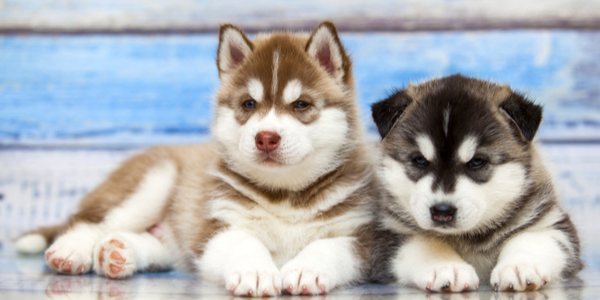
History
The Siberian Husky’s origin can be traced to the Chukchi people of the Chukchi Peninsula located in eastern Siberia. They bear no relation to wolves.In 1908, they were brought to Nome, Alaska to be used as sled dogs. The breed evolved and was developed to be used in sled dog racing. Over the years, they have evolved into beloved household pets.
Snow & Winter
The Husky loves snow and winter generally, and the white background makes for a picturesque one for Husky photography. They are biologically adapted to cold and can tolerate cold temperatures as low as -75F (-59C).Coat
Siberian huskies feature what is referred to as a double coat. They have a top coat and an undercoat. This serves to keep them insulated or cool, as needed. The overcoat is long and water-resistant, while the undercoat is shorter and warm.Colors
The most common coat colors of the Siberian Husky include the following:- White
- Black
- Gray & White
- Sable & White
- Black & Tan
- Silver-gray
- Black & White
- Grey
- Red & White
Some huskies may feature some other colors, but those are quite rare. They also have spectacular eye colors.
Huskies have a common base eye color of brown. However, all Husky pups are born with blue eyes. This remains until they are about 1-2 months old, after which you can tell which would turn brown and which would remain lighter.
Some pups experience heterochromia which makes their eyes bi-colored or parti-colored. Some huskies also have green eyes which are pretty rare. Huskies are an interesting breed indeed; they are very playful, adorable, and make for great pets.
-
Top 5 Designer Breed Puppies for 2022
Designer breed puppies are taking the internet and in turn, households by storm for a range of reasons.
Top on these is the fact that they are bred from crossing two purebred dogs to retain some specific desired characteristics. In other words, these breeds are the elite. So, here are the top 5 designer breed puppies for 2022:
Teddy Bear (Shih Tzu x Bichon Frise mix)
With their round eyes, hanging ears, black, white, and brown colors alongside curly hair, you could mistake them for an actual teddy bear. The Teddy Bear is super cute, always ready for playtime, and is hypoallergenic.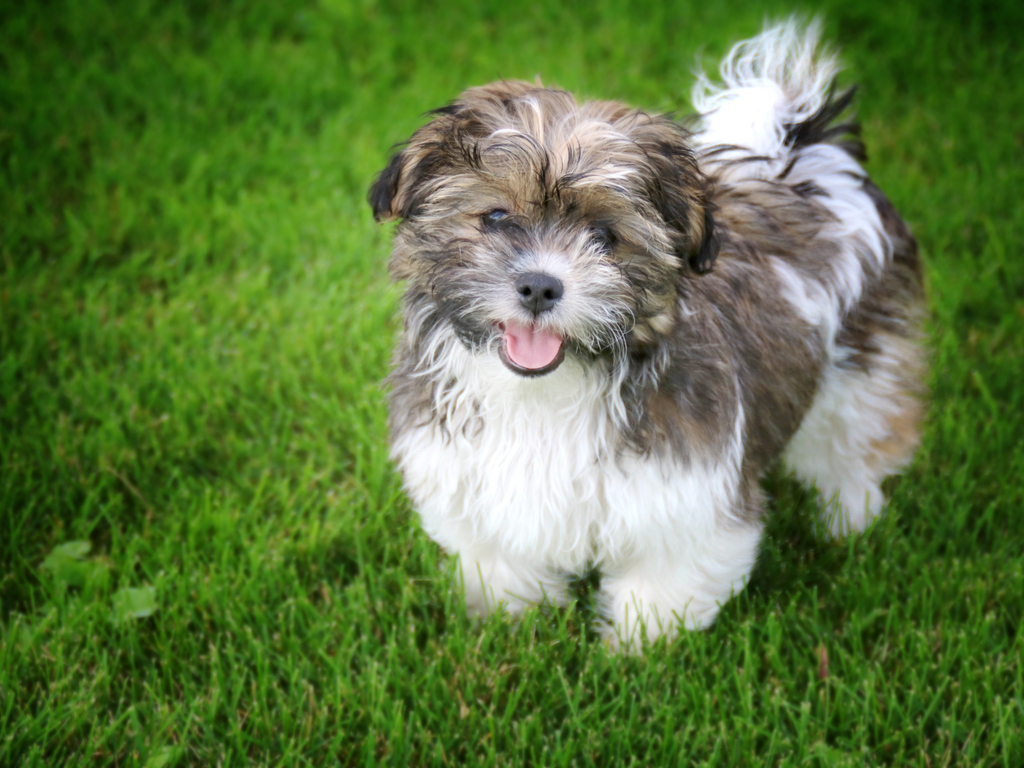
Goldendoodle
This breed is quite popular owing to their adorable look and intelligence. They are after all a cross between a Golden Retriever and a Poodle. The Goldendoodle teems with energy and is known to be thoroughly loyal.
Bichon Poo (Bichon Frise x Miniature Poodle mix)
These pups are small, happy, and super smart. They basically took the best qualities from both parents. The Bichon Poo are low-shedding, cuddly, playful, and while they might bark excessively, you can always nip that in the bud.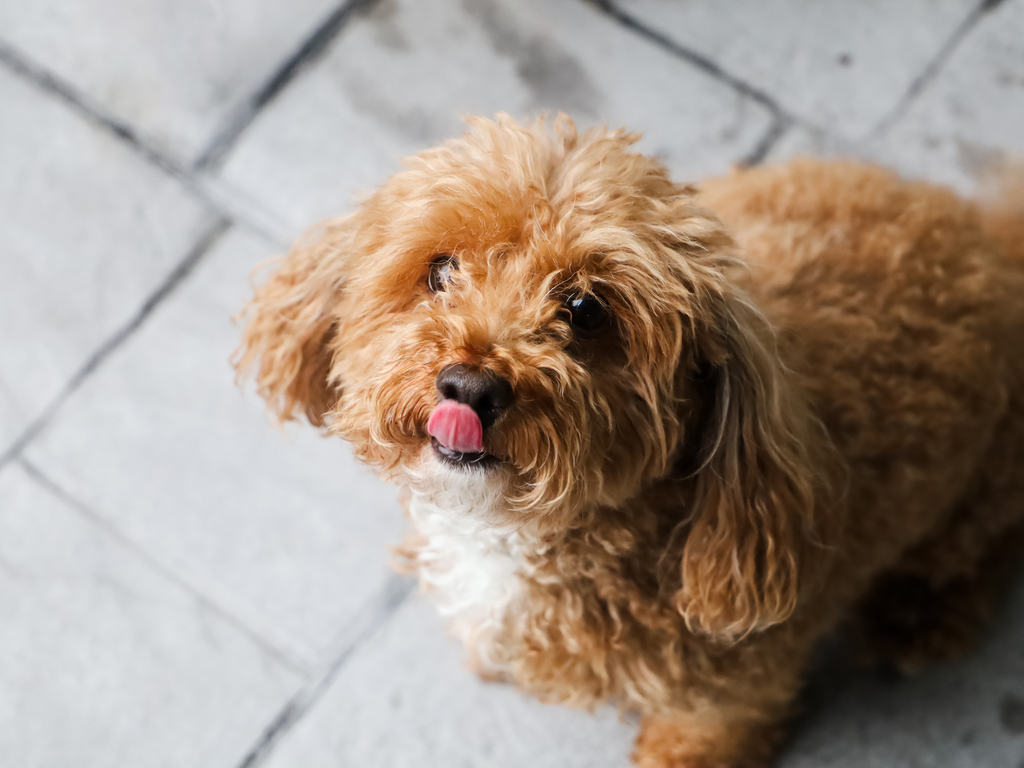
Pomsky (Siberian Husky x Pomeranian mix)
This breed boasts a whole lot of energy and loves to play. They have an independent nature, so you might spend some extra time training. However, the Pomsky’s lovable nature and cute size make the extra worth it.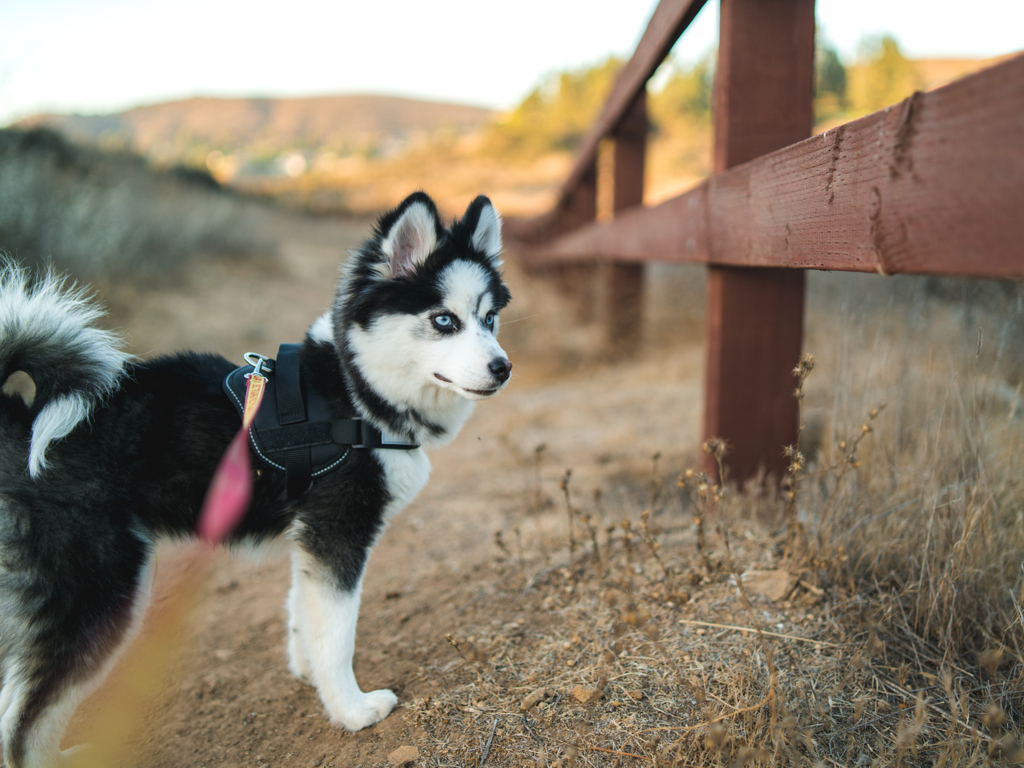
Cavachon (Cavalier King Charles Spaniel x Bichon Frise mix)
This is one playful breed! They are characterized by their friendliness, loyalty, and intelligence. The Cavachon aims to please, and take to training easy. To keep them happy, moderate grooming and exercise does it.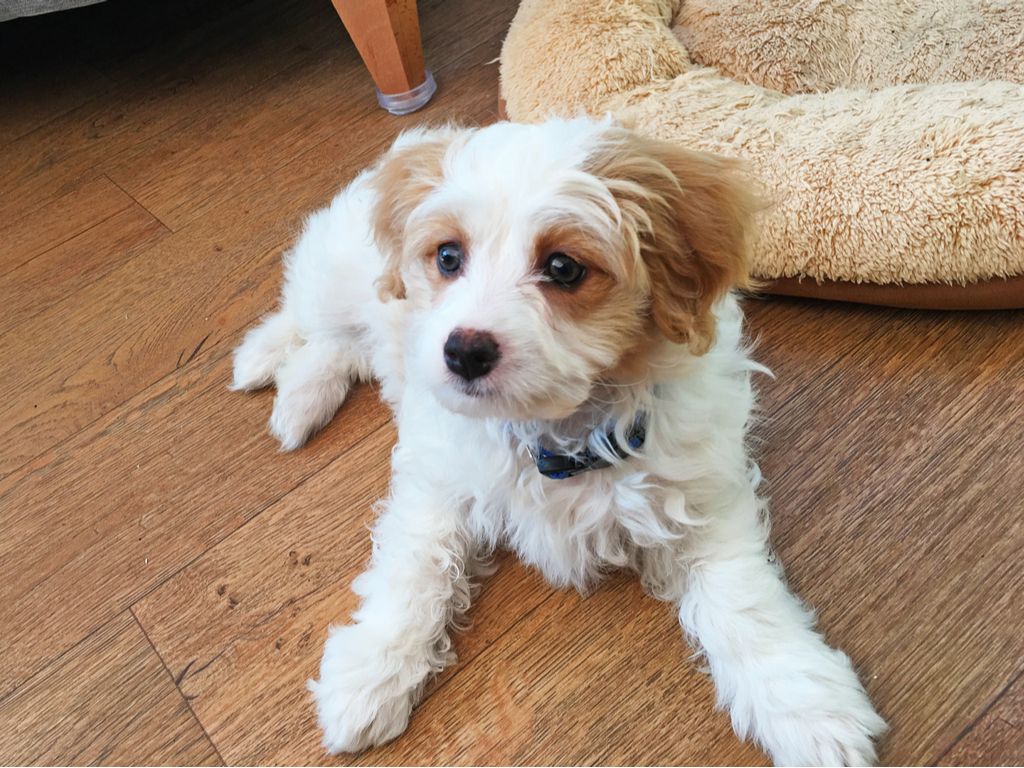
You know what they say about good things coming in small packages, this defines most designer breed puppies.
-
Treats, Toys, or Both For Christmas?
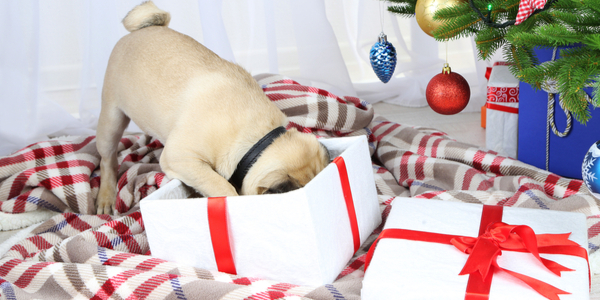
Deck the halls with treats and toys! Santa Paws is around the corner with his sack of gifts and your puppy has stayed off Santa’s naughty list. You are looking forward to sharing the festive spirit with Lucy but you have no idea what exactly to get her for Christmas. Does she want treats or does she want toys?
You can never go wrong with toys. Toys keep your puppy busy and playful while taking her attention off some other things.
Self-amusement toys
These are more durable toys your Lucy can play with while she’s alone. You can get bone-shaped chew toys.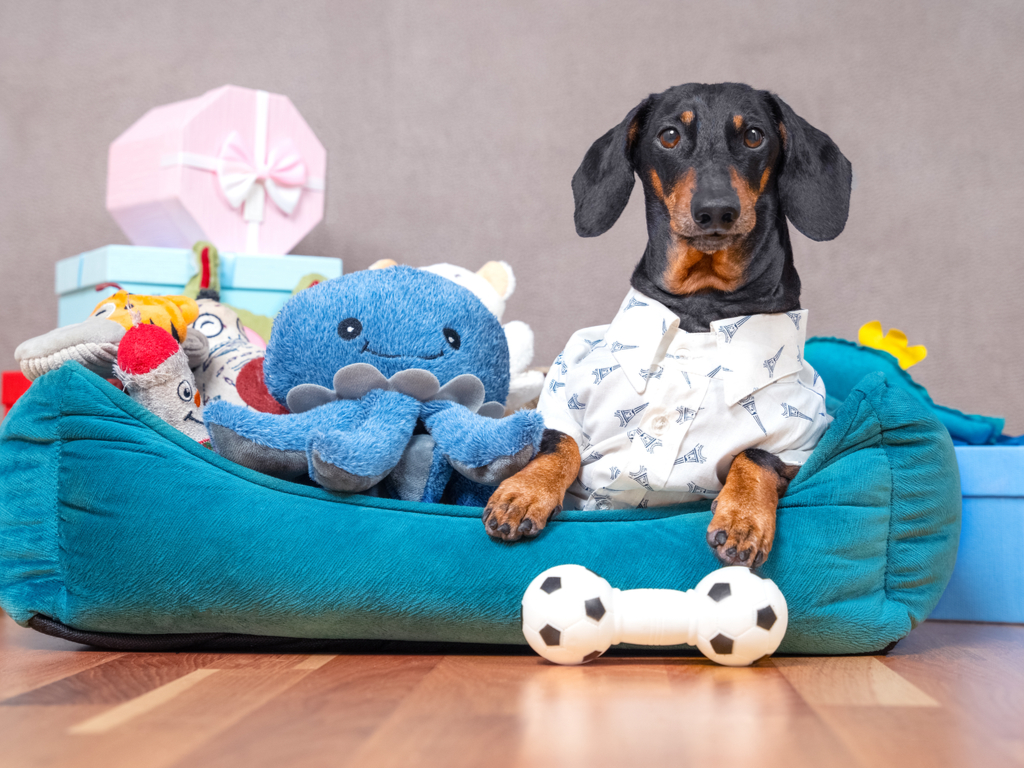
Training toys
These are toys that help with teething and help your puppy know what is okay to chew on. This includes chewing toys and balls.Comfort toys
These toys are typically plush items your puppy bonds with. This includes stuffies Lucy can snuggle with.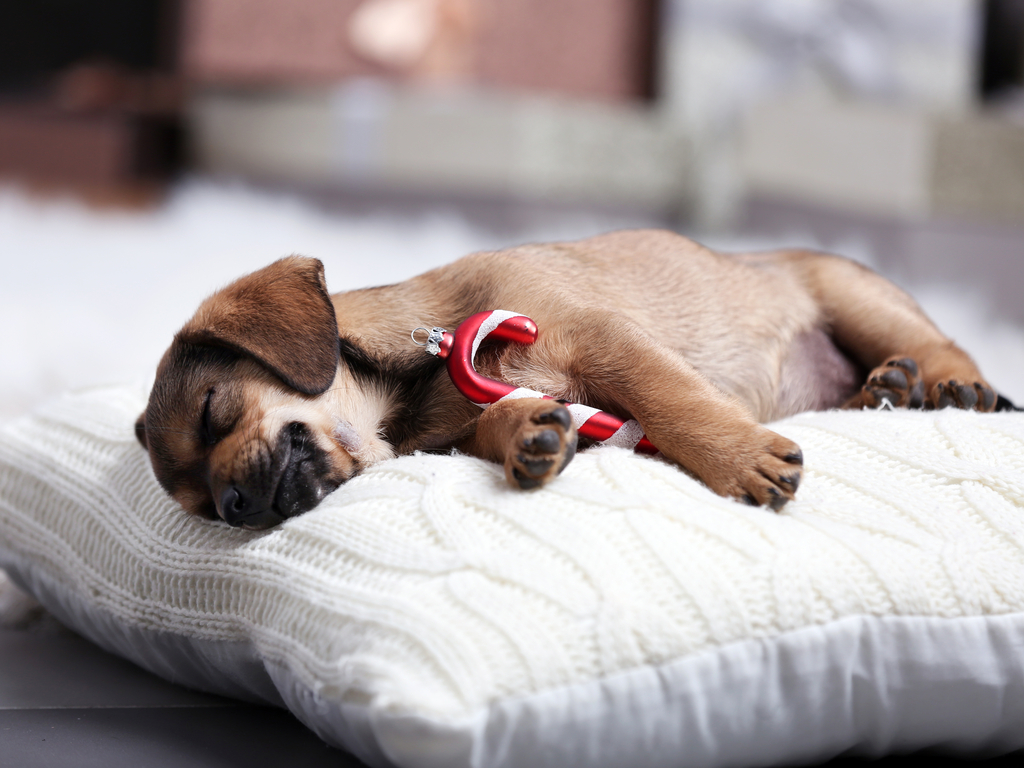
Interactive toys
These toys help build and strengthen the bond between you and your puppy. A tug rope, a pacific loop, or frisbee fit into this category perfectly.Treats
No doubt, aside from toys, Lucy deserves special treats for Christmas. After all, Christmas is the season of giving and no one is more appreciative than she is. You indulge in a lot of goodies that can’t be shared with your puppy. Instead, treat your puppy to a stocking full of treats for Christmas.
To start with, you can get your puppy different treats. These include dental treats to keep your puppy’s pearly whites in the best shape, training treats, bones, and fake bones.
As an excellent puppy parent, you should not just get just toys or just treats for your puppy. Find a good mix of toys and treats instead!
